Travelling is ultimately a tool for growth. If you want to venture further, click this banner and take the leap 😉
- Meet the Team
- Work with Us
- Czech Republic
- Netherlands
- Switzerland
- Scandinavia
- Philippines
- South Korea
- New Zealand
- South Africa
- Budget Travel
- Work & Travel
- The Broke Backpacker Manifesto
- Travel Resources
- How to Travel on $10/day
Home » Responsible Travel » The Art of Slow Travel (How to HACK Travel 2024)

The Art of Slow Travel (How to HACK Travel 2024)
I’m going to let you in on a secret. I don’t like bucket lists . I know, I know, I’m aware of the irony that a travel blogger doesn’t like a cornerstone of the travel industry.
The thing is, I feel like we go travelling and miss the entire point of travelling . Somewhere between seeing the fifth and seventh wonder of the world, the world stops seeming so wonderful.
So what do I like instead?
I like squatting in the corner of a kitchen in a far away country making the perfect tortillas with my Guatemalan neighbour. I like making flashcards for a language I don’t speak yet so that I can tell dirty jokes with my Portuguese work mates.
I want to take time to become neighbours and friends and familiar with the places I travel to.
I like to travel slowly.
Slow travel is a way of structuring your travels so that you are completing quests and seeking meaning rather than ticking things off your itinerary. There’s also a near spiritual satisfaction when you know that you have earned your way in blood, sweat, and literal tears to make it to a destination.
It can be intimating to Marie Kondo the crap out of your itinerary that no longer serves you joy. But trust me, my dude, the sweet reward of slow travel is so worth it.
Come with me as we dive into the world of letting go of where we need to be. Come learn about slow travel.
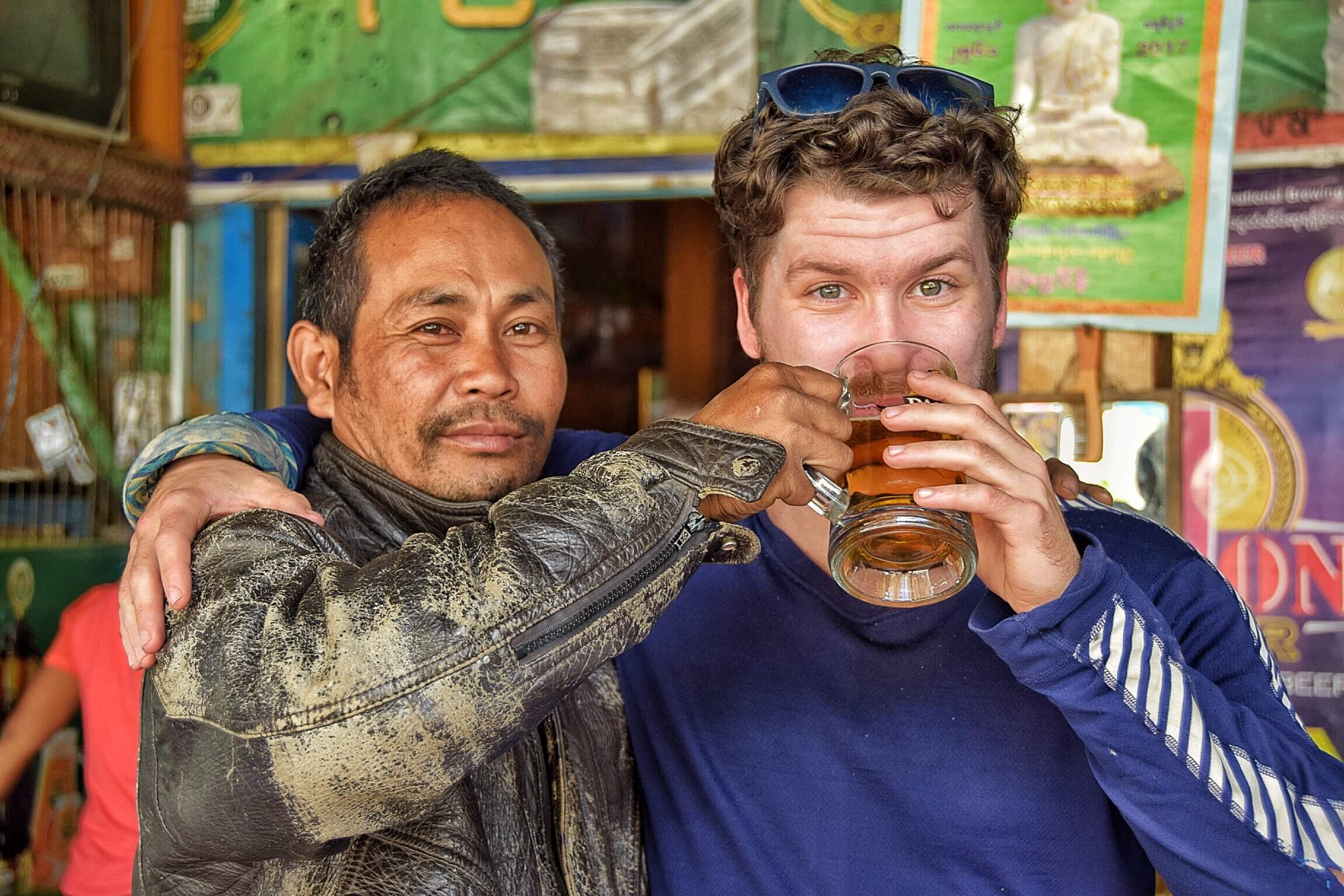
The Broke Backpacker is supported by you . Clicking through our links may earn us a small affiliate commission, and that's what allows us to keep producing free content 🙂 Learn more .
Slow Travel Origins
Why should i travel slowly, how to slow travel, ultimate slow travel experiences, slow travel faqs, the slow travel finale.
Slow travel is actually a splendid offshoot of the slow food movement. The slow food movement arose in Italy during the 1980s as fast-food chains like McDonalds attempted to infiltrate and outcompete local businesses.
Italy said, no – but in Italian (which is really just an overly-emphatic ‘no’ with wild hand gestures), and the slow food movement was born. It emphasises a connection to place and valuing local businesses and their high-quality products over cheap, mass-produced food.
Essentially, it’s a movement of quality over quantity .
Slow travel , then, is a f*ck you to the vacuous Insta-famous travel bloggers and their fast food take on travel. It’s about throwing your caution to the wind and travelling without a phone.
You prioritise connection with local people over another selfie with the Eiffel Tower. It’s about sitting in a hole in the wall store on tiny plastic chairs and trying the best soup you’ve ever had in your life. As you look around, the smallest details create an imprint on your mind. So this is what travelling is about .
It’s about writing your own manifesto . Slow travel is the whole reason you hit the road in the first place.
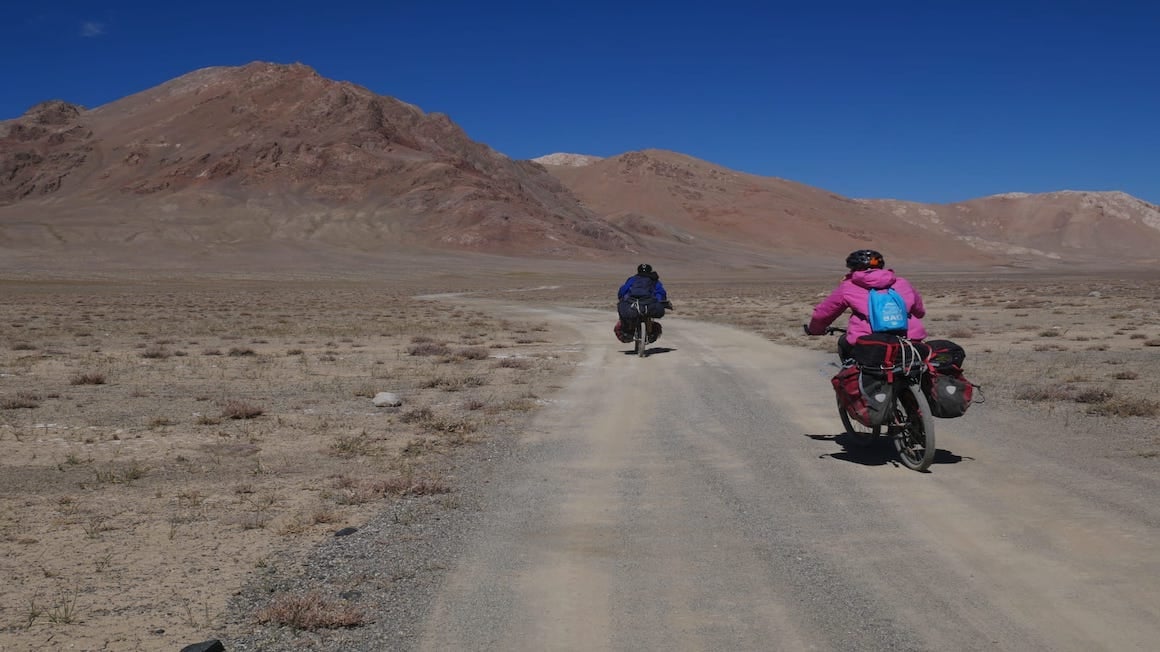
Skip Your Itinerary
For me, there’s a mindset shift that is crucial to slow travel. My rigid itinerary would have me up at 6 am to try Trip Advisor’s best croissant and then shuttle on to the top 10 places you have to see before you die. You then rinse and repeat for 12 exhausting days. It’s a life-changing experience and then we go back to clocking in and out of the 9 – 5.
My slow travel itinerary would have me impulsively buy a bus ticket to a town I’d vaguely heard of. It gives you time to scour local newspapers for some part-time work. There’s time to learn the recipes of my housemates; eat at local restaurants. It’s about getting under the skin and becoming part of the fabric of the town.
I let my travels genuinely change me.
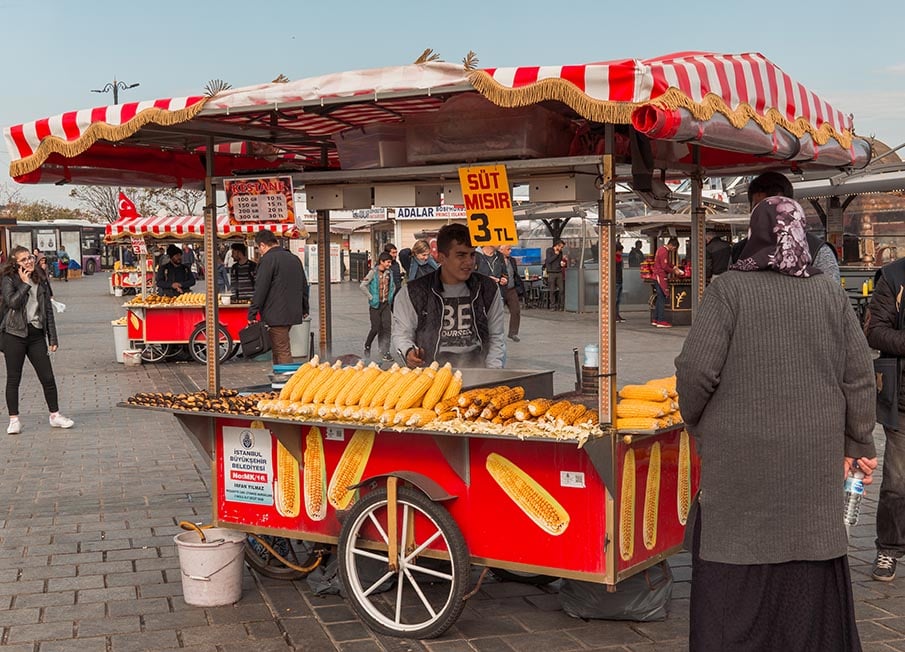
But if we want our travel experiences to change us, we’ve got to let them in. When I found myself working on a sailboat, we ended up spending a lot of time in the Caribbean. Every Monday morning, the cruise ships come to St Thomas and every Monday evening the cruise ships leave.
The times we ended up sharing the island with twenty thousand cruise ship passengers, a strange sense of helplessness came over the crew and me. Here were all these people in such a rush , that they seemed to miss the entire point of their vacation.
Not only did they not seem relaxed as they ran about the island, but they seemed to miss all the little details about the streets too. It was like travel knocked on the door and they said, go away I’m looking to go travelling.
I thought it would be great if someone missed their cruise ship home. How much more interesting would they find this island if they worked in the bar for a few months and made friends with weirdo sailors like us. I wanted to show them through the backstreets and local buskers.
I wanted them to travel slowly.

Unlock Our GREATEST Travel Secrets!
Sign up for our newsletter and get the best travel tips delivered right to your inbox.
If the most simple way of describing slow travel is quality over quantity, then I think it becomes clear why you should do it – to enhance the quality of your travels!
How exactly does travelling slowly enhance the quality of your travelling? I think it prevents traveller burnout . You know the feeling: you get back from an exciting and jam-packed trip more tired than you left. You need a vacation from your vacation!
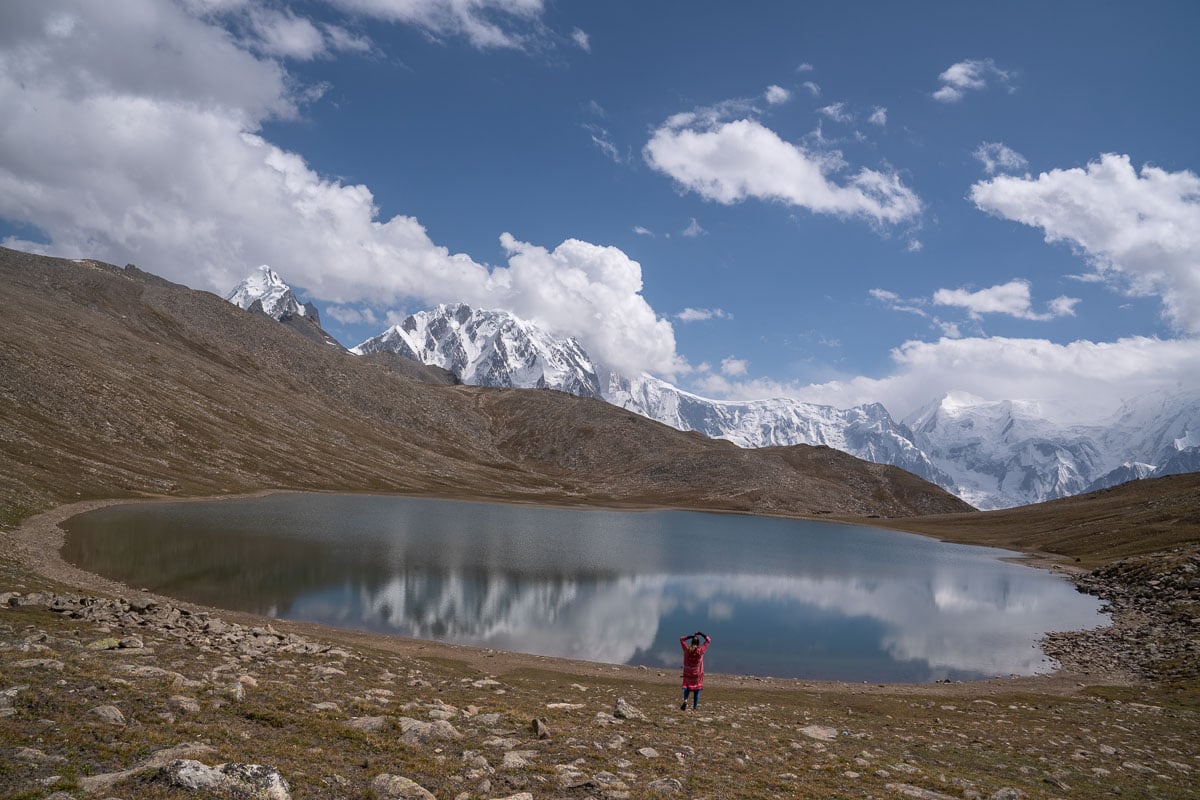
By slowing down, you get back to the roots of what it means to take time out from your life. It’s not to see as much as you possibly can – it’s about restoring yourself and your energy levels.
Slow travel is also far more sustainable, far less expensive, and far more enjoyable than a high-speed tourist chase of attractions.
Slow Travel and Sustainability
Yeah, look, the world can feel pretty f*cked. It’s on fire, it’s running out of water, plastic is choking turtles, Keeping Up With the Kardashians is in its 20th season… And yet even as we look on at this slow-moving asteroid of destruction, it can feel like we have very little in our power to change the course of action.
We are too accustomed to next day shipping, international flights, and being able to buy travel experiences like we do new clothes. If I want to go see the Great Barrier Reef, provided I have the money, I can leave tomorrow and see the damn reef.
So on the one hand, we know that in order for there to be a Great Barrier Reef in thirty years we need to take drastic action. On the other hand, that round the world ticket just went on sale…
Do you travel fast or travel slow? For the sake of being a responsible tourist , I think you should travel slowly.
The first step is to take this literally. If you set yourself on the quest to see the Great Barrier Reef, you understand that the journey is as enjoyable as the destination.
Consider how you will arrive at the reef? Will you fly into Cairns and take a boat tour one day, and a scuba diving trip the next, before flying to the Whitsundays and staying the night?
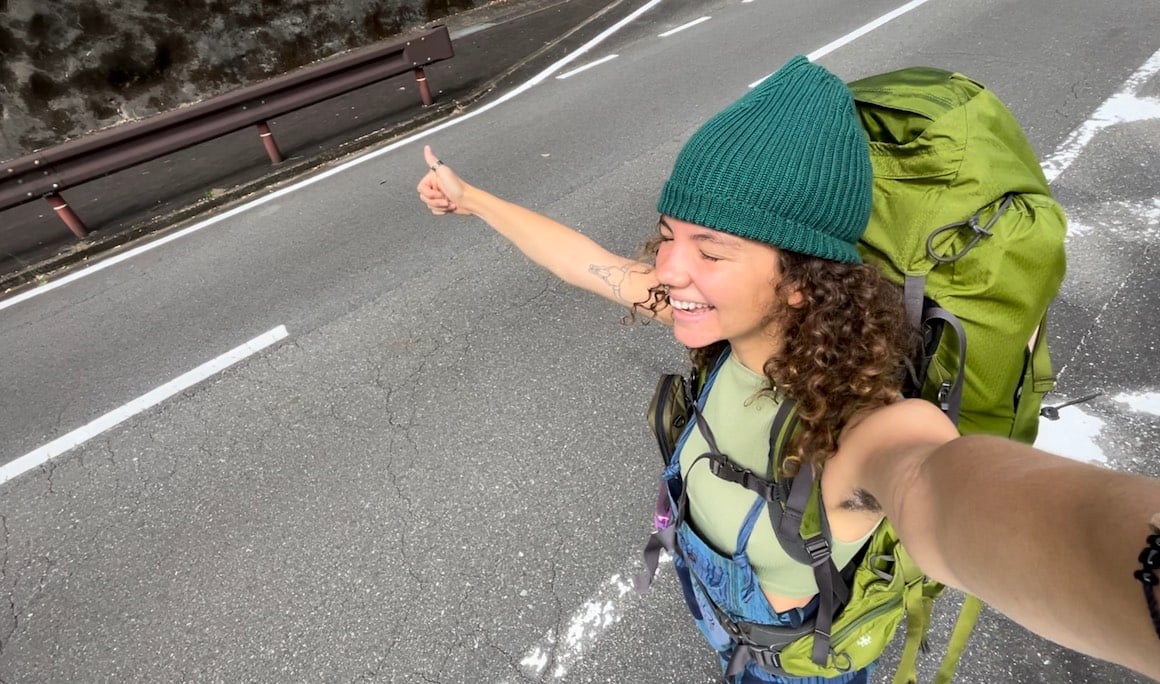
Or will you hitchhike to Cooktown? Will you live the boat life and sail your way from Bundaberg through the Torres Strait? You could swap hotel chains for homestays, Couchsurfing, or Airbnb. A few weeks instead of a few days? There’s always local produce to eat – or even try your hand at spearfishing (where it’s permitted, of course).
Not only do you cut your carbon emissions by flying less and eating local, but I would argue you see the ‘real’ Great Barrier Reef. Australians are known for being sarcastic, a little abrupt, but on the whole, decent people. If you’re just another tourist flying in and flying out, you’re going to get the bare minimum from the locals.
If you slow down – or do something a bit out of the ordinary like get seasonal work or hitchhike into town – you might get a few funny looks at first. “You wanted to see the reef, did you mate? So what, you had to stay for the season to do that, did ya?”
But underneath the bluntness, is an appreciation that someone slowed down and stayed .
Slow Travel and Combating the Travel Blues
I think there is pressure these days to ‘see it all’. You might never come back! Quick, make sure you get a selfie and post it to Instagram – or you might as well have not come!
This need to travel glued to your phone and to tick off destinations keeps you in a constant state of stress. Now while the best travel pushes you, it shouldn’t leave you feeling like a pile of limp, wet noodles.
The fact of the matter is, you are never going to see it all. So you might as well make what you do see worthwhile. Going back to the Great Barrier Reef example: rather than going on one scuba diving trip before flying back to your soul-crushing 9 – 5, you could live in Cairns for a few months.
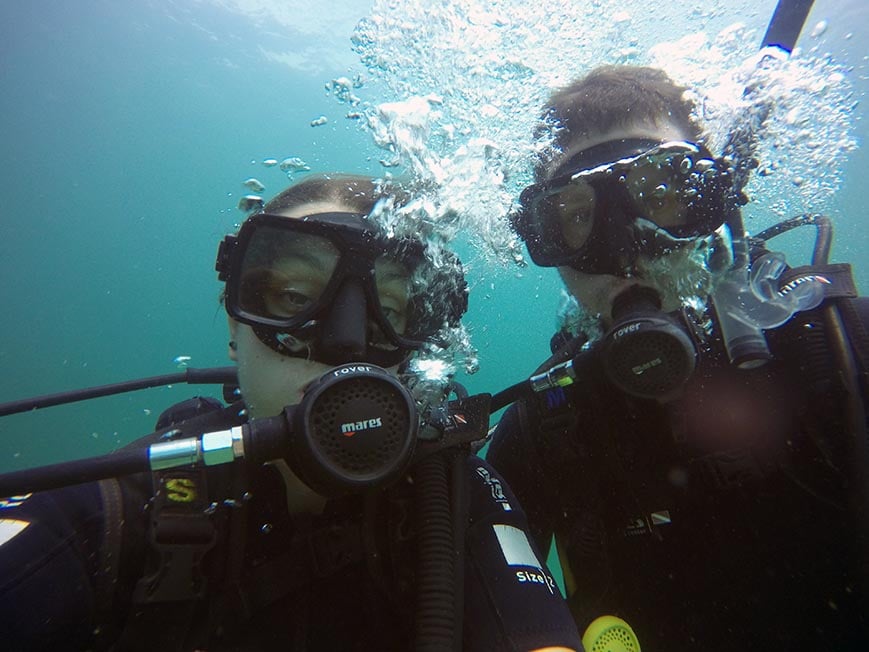
Instead of being ushered onto the boat after two hours of splashing in the water, every morning at 7 am, you could swim with the fish before making your morning coffee. You’d get to freedive, snorkel, scuba dive, sail, and generally play water baby goodness as part of your daily routine.
Travel is supposed to be a step away from the grind culture. You should travel to offbeat locations to challenge yourself, sure. You should learn new skills, new languages, new ways of life. But there’s no need to attach KPIs to your regimented travel routine. You’re not going to “fail” travelling if you don’t see the best places in the worl d .
You’re going to beat the travel blues by slowing down; by living somewhere and making a morning routine out of what most people consider a mere bucket list item .

Wanna know how to pack like a pro? Well for a start you need the right gear….
These are packing cubes for the globetrotters and compression sacks for the real adventurers – these babies are a traveller’s best kept secret. They organise yo’ packing and minimise volume too so you can pack MORE.
Or, y’know… you can stick to just chucking it all in your backpack…
Slow Travel IS Low Budget Travel
This ties into the next point. Slow travel is cheap. So while I could write an epic guide to broke backpacking , I could also just tell you to slow down .
But that doesn’t make any sense? How does staying somewhere longer turn out to be cheaper?
The thing is, it’s not usually the place itself that is expensive – it’s getting there! The main expenses around travelling are:
- The overland transport
- The accommodation
- The attractions
So it follows if you fly from Paris to Rome to Madrid and back to London over the course of two weeks – that’s going to add up!
Limiting your timeframe means you have fewer options and can’t keep an eye out for cheap flight deals, for example. You also take away the slower travel options of trains, buses, hitchhiking, or van life. When you HAVE to be somewhere, you pay for immediacy.
Once you arrive in a place, the concept of slowness continues to save you hard-earned dosh. If you don’t have anywhere in particular to be, you can opt to scout out a sick local homestay. You could also try fly and swap vacations – the most authentic way to experience life as a local IMO.
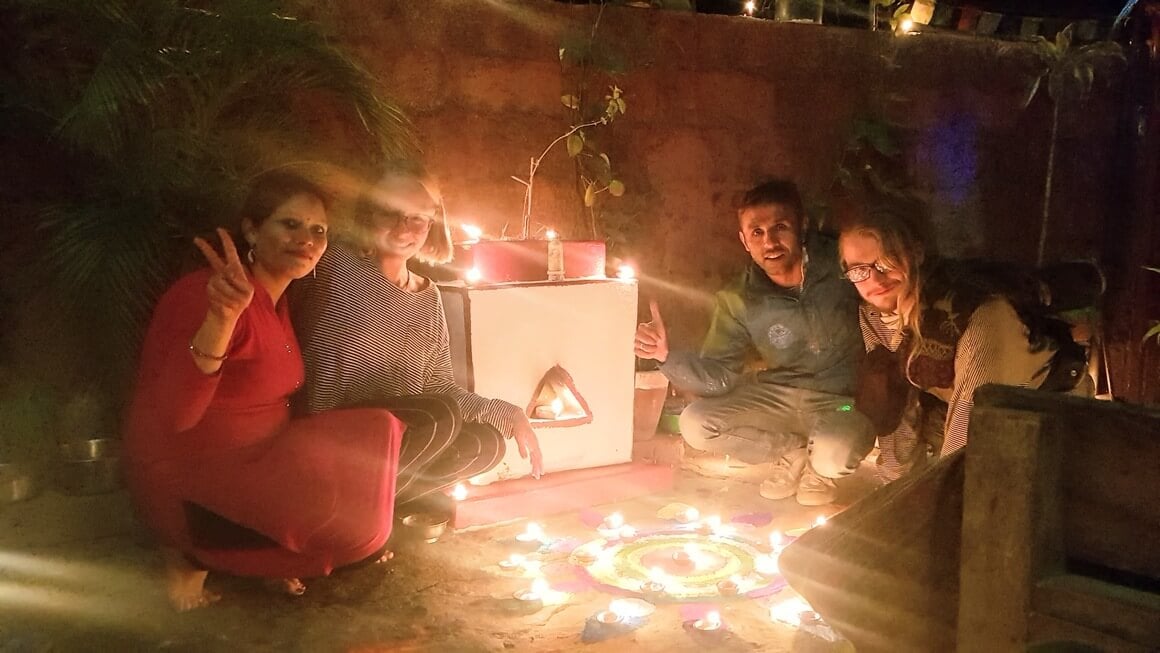
All of this cuts down on your accommodation costs. This leaves you a good chunk of coin for food and touristy attractions.
If you really want to stretch your coins, you could learn to dumpster dive for your food. Even if you don’t fancy plating up discarded food, slow travel can lead to cheaper and higher quality meals.
Slow Travel and Quality
Travelling slowly is simply more enjoyable. Quality is a bit of a sticky, and deceptively unknowable concept. It really asks, what is best?
The dominant cultural messaging for the last few generations was that you needed to see everything, do it all, be well rounded, but don’t lose your job! This led us to cram ourselves into these rigid little itineraries that leave no room for a regenerating planet – or self.
Luckily, we’ve said ‘no, it’s not a phase, mom’. Slow travel simply feels better.
Like anything, there’s an art to doing slow travel well. But, also like anything, it’s better to get out there and start doing it – even if at first you are doing it imperfectly.
Remember, that above all slow travel is about connection . It’s about seeing life from a perspective other than your own.
I feel like there isn’t a whole lot of point in giving you a prescriptive guide on travelling slow – it defeats the whole point. The point of opening up your travels to chance and spontaneity is to ignore travel bloggers like me and make your own adventure!
Buuuut, here are a few tips to get you started with travelling slowly:
- Give up some “purpose” – i.e leave gaps in your itinerary!
- Train, don’t plane.
- Get a little lost.
- Learn a new language .
- Spend more time in one place .
One way you can foster a genuine connection with a place while spending more time there is by volunteering. Giving back and getting involved in a local community is the core value of slowing down your travels. You get to sink your teeth into a new culture and learn more about the people there.
While I am quite comfortable turning up in a new town and checking the local notice boards for volunteering opportunities, I think there’s something to be said for organising a volunteer placement before you hit the road.
You can use a platform such as Workaway or, our personal favourite, Worldpackers ! It’s a review based platform specialising in connecting volunteers with meaningful projects all over the world.
The website is easy to use and you know exactly what to expect out of a program before you get there. And broke backpacker readers get a 20% discount on their subscription!
So now that you’re juiced up and inspired to slow down and perfect the art of meandering, what kind of epic travel experiences do you have to look forward to?
You can start by exploring your hometown! Maybe there is a local farm to table restaurant that you’ve always wanted to try, or a pottery class that you’ve always wanted to attend! It pays to think of your own town as somewhere full of layers and hidden secrets, too.
When you do hit the road, and you want to do so sustainably, there are a few epic slow travel experiences that come to mind.
Living the Vanlife
Your first foray into the world of travelling at a snail’s pace may involve getting yourself a little home on wheels. In the same way that a snail goes about life with their house on their back, living the van life means taking your home with you.
Living out of your van encourages you to appreciate the journey between destinations. The road less travelled is usually bloody gorgeous – and has way less traffic. When you do arrive in a new town, you already have your accommodation sorted!
Vanlife is wonderful because your possessions are pared down, your pace of living is slow, and your appreciation of long term slowness is increased. Plus, it’s cosy!
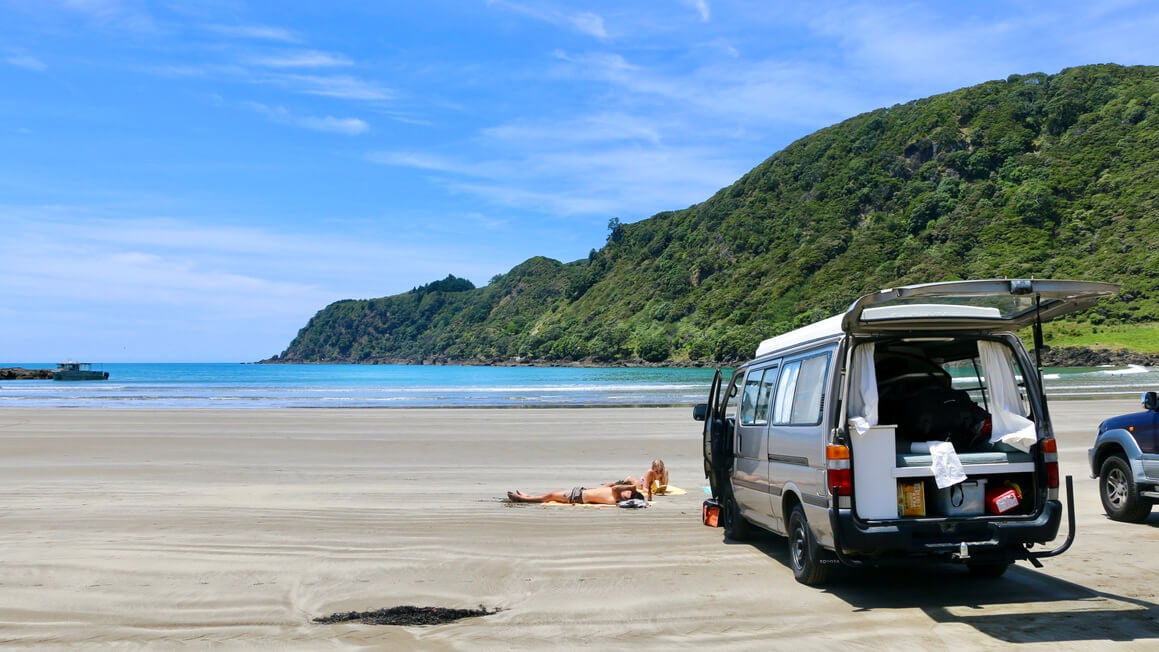
But you know what? Vanlife is also grotty, challenging, and hardly ever goes to plan.
I remember living out of my van and driving with my mate on a South Island road trip . Now, I knew that it was winter and I knew that New Zealand was prone to flooding and I had even checked the weather forecast and seen a hectic storm was on the way. But I (recklessly) said, fuck let’s keep driving.
We woke up to discover that we couldn’t drive onwards in the morning because the road was closed. Oh shit, no worries, we’ll just drive back to where we came from.
Except that road was closed too. We found ourselves stuck in a town, with no motel, in the middle of the largest flood in 10 years.
After getting us bogged, and then unbogged, and restarting our battery in torrential rain, I made the decision of any rational person: I said, well we can still go to the pub. Drinking in a local pub with the road closed in two directions is probably the best thing that could’ve happened to someone who decided to keep driving through a flood warning!
Anyway, a fair few drinks were shared. In the end, we had multiple offers for a place to stay until the roads were open again. Vanlife is not always easy and it’s not always pretty. But man, it certainly forces you to slow down and forge connections in the strangest of places!
The Dreamiest of All Slow Travel – Boat Life
Sailing takes slow travel and turns it into poetry. You rely on the wind and the currents to take you from A to B. Having the weather as your decision-maker forces you to think about your travel in terms of seasons.
Working so hard to reach a destination makes it that much sweeter – and the destinations are already pretty sweet. But after sailing across the Pacific for 30-odd days, the first sight of land touches the sublime. Earning your way to a destination in blood, sweat, and night watches is one way to ensure you have a deep and unending appreciation for a place!
The old salts live by the phrase, the best plans are written in the sand at high tide . You make a plan to spend a season sailing the Caribbean. But then, you realise that there is an excellent weather window to cross the Atlantic , and you heard that the wine over there is really quite nice.
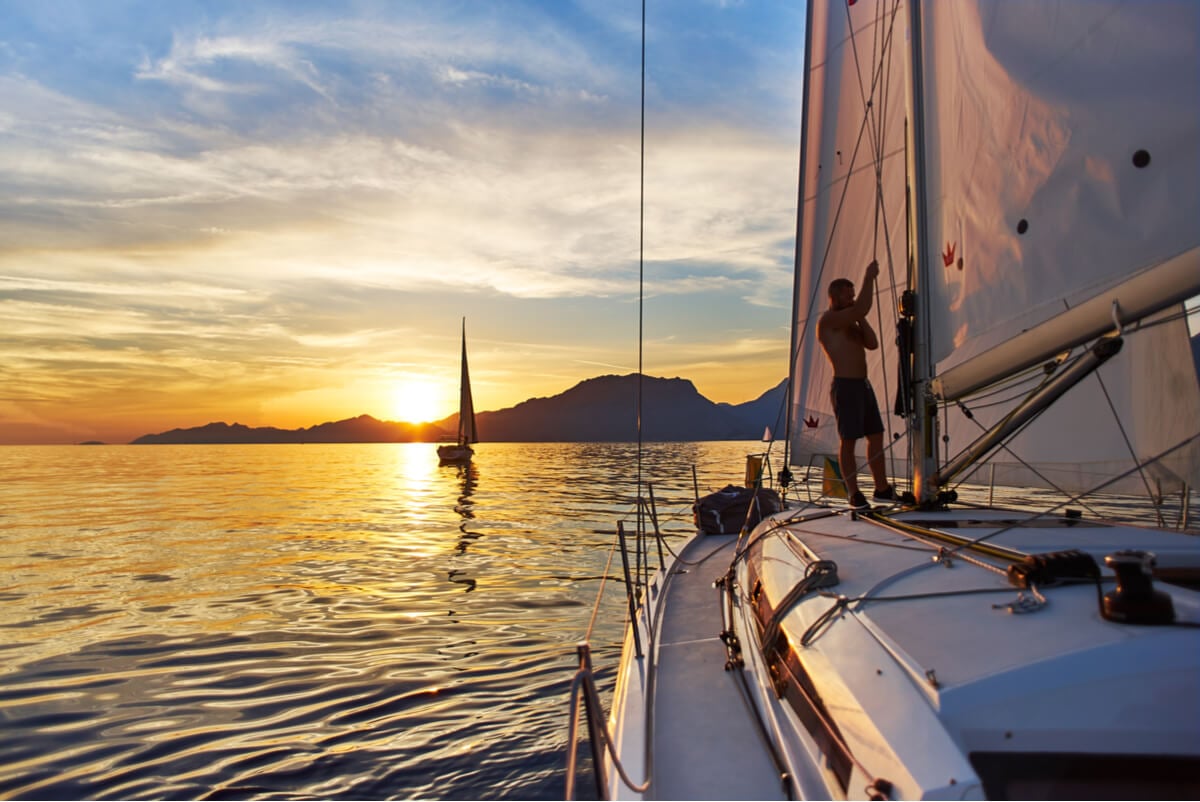
Provided your boat is in tip-top shape and your crew haven’t mutinied, you may find yourself somewhere in Portugal thinking, huh, this is nice .
Sailing is also environmentally sustainable. The adventures you and your floating tin have really drive home this sense of responsibility for this pale, blue dot we call home. And that, more than anything, is the point of travelling slowly.
Hitchhiking
So this one time in Mexico, my pet chicken and I stood on the side of the road in the Yucatan and decided to hitchhike.
My chicken ended up falling asleep because it was taking a while for someone to stop for us. I kept myself busy by spotting shapes in the clouds. It’s truly astounding how beautiful the world is when you’ve got nowhere to be.
Eventually, someone pulled over and offered us a ride. Of course, we got to chatting. There is not much I like more than a good old fashioned chit chat with a stranger. The next thing I know, we had taken a turn from the main highway in order to find the best taco my new friend remembered having as a kid.
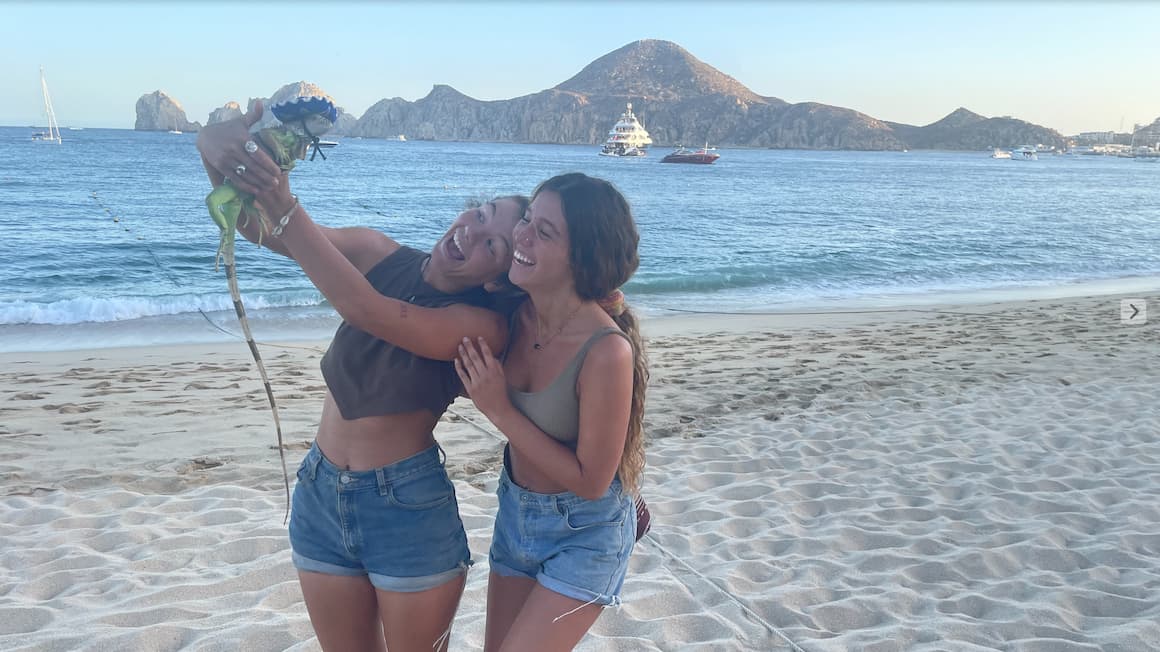
The best tacos turned into sampling the best mezcal in town which somehow turned into karaoke in a small bar in rural Mexico. My chicken was given so much free food that she fell asleep in the middle of the blaring karaoke music!
When I started that morning, I had absolutely no idea where the day would take me. Perhaps I’d end up camping by another beautiful beach again. Perhaps I would make it closer to the border. But as it turned out, I made a good friend and was privileged to try the best tacos in the Yucatan.
Hitchhiking is a special form of slow travel because it puts you right in the thick of it. This is what travel is about. You slowly, slowly make it somewhere. The where becomes less important. The when becomes almost irrelevant. The locals become your neighbours and the country becomes your home.
What is slow travel?
Slow travel is about swapping a high-intensity itinerary full of 12 cities in as many days, for a leisurely stroll through the same town for the duration of your getaway. It’s about taking the train, eating local, and camping more often than you get on a shuttle bus to the nearest wonder of the world. It’s essentially about quality over quantity.
How do I start slow travelling?
You can start in your hometown! I think it starts with a sense of curiosity and openness to conversations with people you’ve never met. You leave gaps in your itinerary and deliberately get a little lost. You give yourself more time, rather than less time in a destination so that you can start to follow your curiosity more than your planner.
Why is slow travel the best?
I think it is a more enjoyable and restorative way to travel. You don’t come back from your holidays exhausted! But it’s also kinder to the planet, and better for local economies. There is no need to scale up your adventures and send you money to large travel chains. Instead, you can take tours run by local guides, stay for a couple of weeks in a local homestay, and enjoy the small things about the town you’ve found yourself exploring.
When you do hit the road, ask yourself this: Where do I have to be?
The world is big and life is short, sure. If you can’t ever see everything, then you should enjoy what you do see. By slowing your pace through the world you are able to let the world change you.
Over the years that I have travelled the world, I have certainly seen some incredible landmarks. But a country has never felt ‘done’ to me. I’ve never completely seen or experienced everything a place has to teach me. I have lives and homes scattered across the globe.
There is also a mystical element to the unknown. And slow travel emphasises the element of chance. When you don’t have to be somewhere, you allow spontaneity to guide your travels.
When I didn’t have to cross the border by a certain date, I got to enjoy a night of karaoke in a small-town bar in rural Mexico. I got to make friends that I stay connected with to this day.
This has been slow travel’s ultimate lesson to me. That my neighbours in Mexico have more in common with my friends in Germany than they have differences. We are united in the pursuit of a life in which we feel free.
Next time you plan to hit the road, take your time and stop to chat with the fruit vendor, the bus driver, and the people at the park. You will enjoy throwing your itinerary out the window and allowing the world to change your perspective. I think you will enjoy travelling slowly.
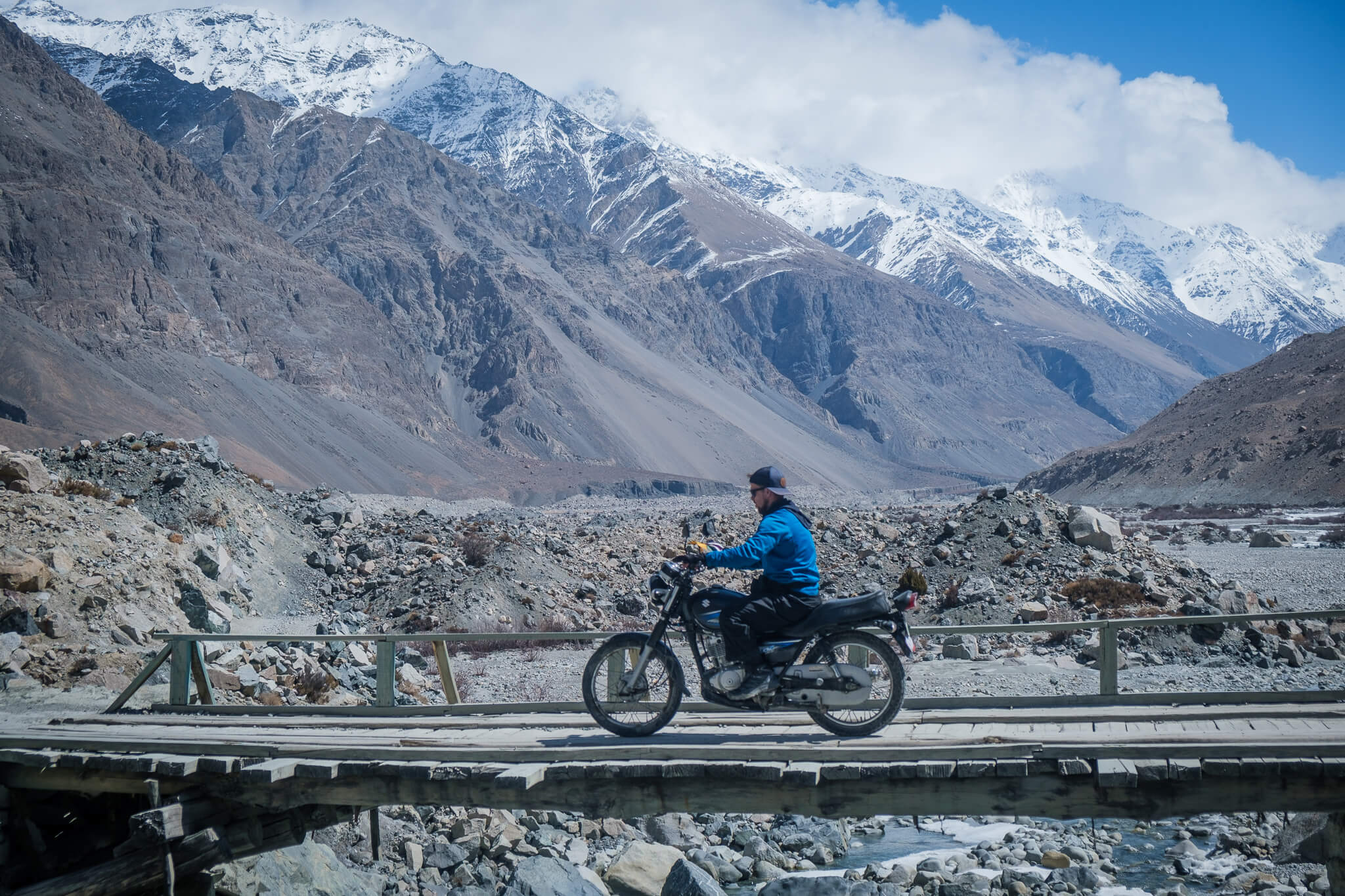
Indigo Blue
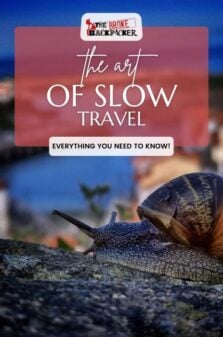
Share or save this post

Love this! We spent last year slow traveling through Mexico and the Lesser Antilles and we can’t wait to get back & sail around the rest of the Caribbean. Im determined to slow travel at least 4 months a year. It’s the dream life.
Love this article!
Great write-up! We are currently slow-travelling the world and much prefer this way of travel to bouncing around from place to place. Slow travel allows you to immerse yourself more fully into a culture and make long-lasting friendships all over the world.
Leave a Reply Cancel reply
Your email address will not be published. Required fields are marked *
Save my name, email, and website in this browser for the next time I comment.
Notify me of followup comments via e-mail.
- Work + Money
- Relationships
- Slow Living
What Does Slow Travel Mean? (And How To Do It)

The first time I traveled on my own, I was 19 and studying abroad in the Netherlands. Every weekend was a mad dash to see a different city in 48 hours, and to experience as much of each city as possible — no museum, cathedral, park, or touristy attraction left unturned. 😵💫
“That breakneck speed, while a great tool to check destinations off a list, was no way to truly experience a destination.”
Spring break was the maddest dash of all, encompassing four cities in nine days and about half as much sleep as I should’ve gotten. Barcelona to Rome to Florence to Venice, then back in time for an 8 a.m. class on Monday.
I was beyond lucky to have had that experience, learning how to travel on my own, how to figure out a new city’s public transportation, and how to manage my time and budget. But that rapid pace began to set the tone for future trips I’d plan. A week in France? Make it two nights in every city. Three days to travel the whole of Ireland? No problem.
That breakneck speed, while a great tool to check destinations off a list, was no way to truly experience a destination . During the weekdays while abroad in the Netherlands, I absorbed characteristics of the culture: The 10 a.m. coffee break everyone seemed to take, the food folks would eat for lunch, the way no one drew their shades at night. But the quick trips were something different. Sure, I checked Prague off my list — but I couldn’t even tell you how to say “thank you” in Czech, which sort of makes you question what the purpose of travel is in the first place.
“‘Slow travel’ presents an alternative to the see-every-country ethos.”
“Slow travel” presents an alternative to the see-every-country ethos. It tells us to accept that we won’t experience the entire world in one lifetime, and presents more sustainable travel options.
What is slow travel?
Like slow living , slow travel comes from the mother of all “slow” movements: Italian political activist Carlo Petrini’s International Slow Food movement, founded in 1989.
“At its core, I think slow travel is about intentionality and connection,” says Gi Shieh , a slow travel content creator. “It’s about spending more time at a destination to immerse yourself fully in the beauty and uniqueness of the land and its people.”
“Simply put, traveling slowly means staying for longer in one place.”
Simply put, traveling slowly means staying for longer in one place. Say you have nine days to travel — instead of hopping to three different cities or countries, consider spending all nine days at one destination, really getting to know the area.
Slow travel might also look like choosing destinations more off the beaten path, avoiding over-toured spots. According to CNN, some of 2023’s worst destinations for overtourism included Amsterdam, Phuket, and Venice, but some less traveled, alternative destinations might include the Netherlands’ Utrecht, Thailand’s Chiang Mai, or Italy’s Tuscan countryside.
Take the opportunity to connect with local people at your destinations. Stay in smaller bed-and-breakfasts, dine in small, locally owned restaurants, and chat with shop owners.
“In general, move around less — and when you move, move slower.”
And when choosing transportation methods, you’ll want to think about the most sustainable options. When possible, replace planes with trains; or car rides with bikes and walks. In general, move around less — and when you move, move slower. It might take a few more hours to get from point A to point B, and that’s kind of the well, point. You’ll understand the landscape of a country from your train window, or the way the wind smells while you’re riding a bike.
“Slow travel also means taking the time to note all the little details that make a place beautiful,” says Shieh, who also runs a blog on slow travel and sustainable fashion. “Like, how the Mediterranean sun hits the laundry drying on a balcony in the south of Italy or the specific cadence of honks of Vietnamese motorbikes during rush hour in Hanoi.”
What are the benefits of slow travel?
Besides lowering the carbon footprint of your trip, traveling slowly gives you a more mindful connection to the place you’re visiting. You likely won’t remember the time spent waiting in line to enter a popular sightseeing destination, but you will hang onto the conversation with a friendly local or the way you felt after a long, leisurely lunch.
“Traveling slowly gives you a more mindful connection to the place you’re visiting.”
Less time spent on planes or tour buses zipping around to new spots means more time (and money) to spend at restaurants that cook with local ingredients or wandering a town and picking up a handmade trinket that catches your eye. And when you choose less heavily toured destinations, it takes pressure off of over-toured spots with thinly stretched resources, like Hawaii or Bali.
Tips on traveling more slowly
1. plan to take some extra time..
“Unfortunately, in today’s society, it’s hard to step away for an extended period of time,” says Shieh, noting that travel itself is a luxury. “It’s important to acknowledge that slow travel is a huge privilege,” she says. “I feel so lucky to be able to experience the world at a slower, more intentional pace, and not everybody has the opportunity to do so!”
“If you only have a short travel window of a few days, use it to explore destinations closer to home that don’t require a flight.”
Not everyone has two weeks or more to spend leisurely roaming a foreign country, but that doesn’t mean you can’t still travel more slowly. Plan trips many months in advance and for as long as you feel comfortable — maybe a six-day trip becomes a nine-day one that you spend in just one place. And if you only have a short travel window of a few days, use it to explore destinations closer to home that don’t require a flight.
And while traveling, “don’t overpack your itinerary,” says Lauren Fremont, executive director of the Winegrowers of Dry Creek Valley , a small wine region known for slow travel and sustainable practices. “Leave room for unexpected delights and meaningful connections. That’s where the magic happens.”
2. Do your research.
“Think about going beyond the pictures you’ll take for social media.” – Matilda Reuter Engle, proprietor of Middleburg Hospitality
With a little extra time and planning, slow travel becomes a lot more feasible. Do your research on destinations, rather than just heading out where you’ve seen others go. Think about what you want to learn and experience during a trip, says Matilda Reuter Engle, proprietor of Middleburg Hospitality , which is focused on preserving historical traditions via hospitality in Virginia Piedmont. “Think about going beyond the pictures you’ll take for social media,” she says. “Identify the lifestyles, history, and ancestral traditions that ignite your curiosity.”
If you’ve planned for a bit more time, consider stacking destinations relatively close to each other to make your travel more sustainable. For example, instead of spending a week in a European country this year and a week in a different European country next year, try doing the entire two-week trip in one go.
3. Stay at B&Bs or small hotels.
Once you have your destination, look for small business accommodations. Bed-and-breakfasts are fantastic — usually independently run, they pretty much hand you the opportunity to engage with the owners and the local community.
Choose small hotels over larger ones, especially all-inclusives that tend to use resources like food and water inefficiently. Of course, there are exceptions to this rule — some hotels have fantastic sustainability practices, but finding those involves, again, lots of time and research.
“If you go the Airbnb route, consider renting a room in house rather than an entire place to yourself.”
If you go the Airbnb route, consider renting a room in house rather than an entire place to yourself. Your host should have a wealth of information about exploring the area like a local, and staying with residents helps minimize your impact on the area’s housing stock.
4. Find ways to connect with the culture.
Along with accommodations that prioritize sustainability, Fremont looks for “experiences that showcase the region’s unique history, food, and traditions,” she says. “It’s about seeking authenticity and supporting businesses that share our ethos.”
“Maybe you join a fishing crew for the day and get to eat your catch, or your do a cheese tasting at the farm where it’s made.”
Read up on tours and activities that immerse you in the local culture — maybe you join a fishing crew for the day and get to eat your catch, or you do a cheese tasting right at the farm where it’s made, or you take a cycling tour from town to town.
“Go with the intention of honoring diverse ways of life, and stepping away from the fast-paced, technological world so many of us reside in on a daily basis,” says Engle. And if language is a barrier, Shieh offers that Facebook events and expat forums can be particularly helpful.
5. Ease yourself into it.
“Try not to put too much pressure on yourself to change your travel habits right off the bat,” says Shieh. If your travel history has looked anything like mine, that pedal-to-the-metal mindset won’t change overnight.
“If your travel history has looked anything like mine, that pedal-to-the-metal mindset won’t change overnight.”
Maybe you start by bringing more intentionality into your domestic trips. If you’re traveling for a wedding, consider spending the week before or after exploring the area. Perhaps next year you spend a week somewhere you would’ve typically spent a few days, or you replace one or two flights with train rides. And then take it from there.
“We have an entire lifetime to travel.” – Gi Shieh, a slow travel content creator
“We often feel this pressure to see it all while we’re young,” says Shieh, “but actually we have an entire lifetime to travel.” Something that helped me feel better about doing and seeing less while traveling? No matter how fast you travel, you’ll never see, let alone experience, the entire world.
“By spacing your travels out over the course of a few years or even a few decades, it removes some of the pressure and allows you to fully settle into the experience that is happening right now,” says Shieh.
Make peace with not seeing the whole green earth, and it will allow you to make deeper connections in the places you do. 😌
Natalie Gale is a Boston-based freelance journalist. When she’s not writing about art, food, or sustainability, you can find her biking to the farmers’ market, baking, sewing, or planning her next Halloween costume. Say hi on Instagram !
RELATED READING

How ChatGPT Can Bring Ease To Your Daily Mental Load
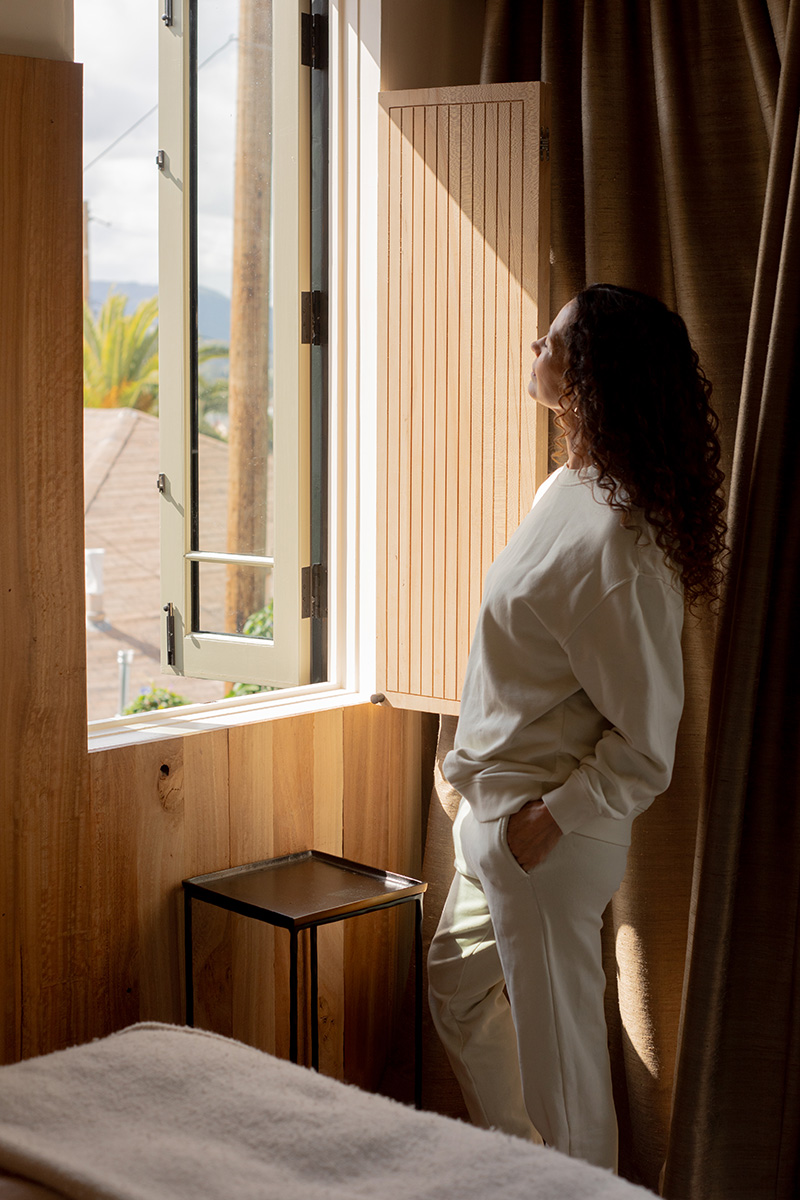
Are Naps Actually Beneficial?
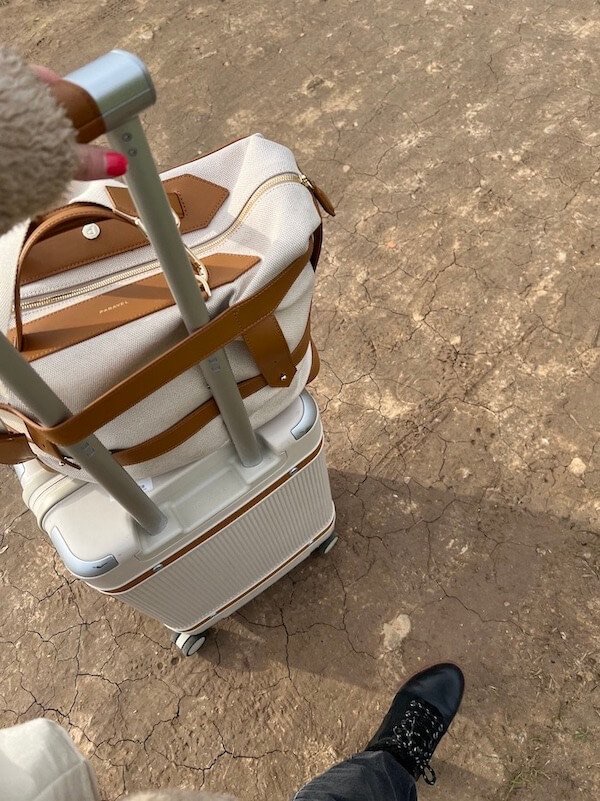
9 Sustainable Luggage Brands To Travel The World (2024)
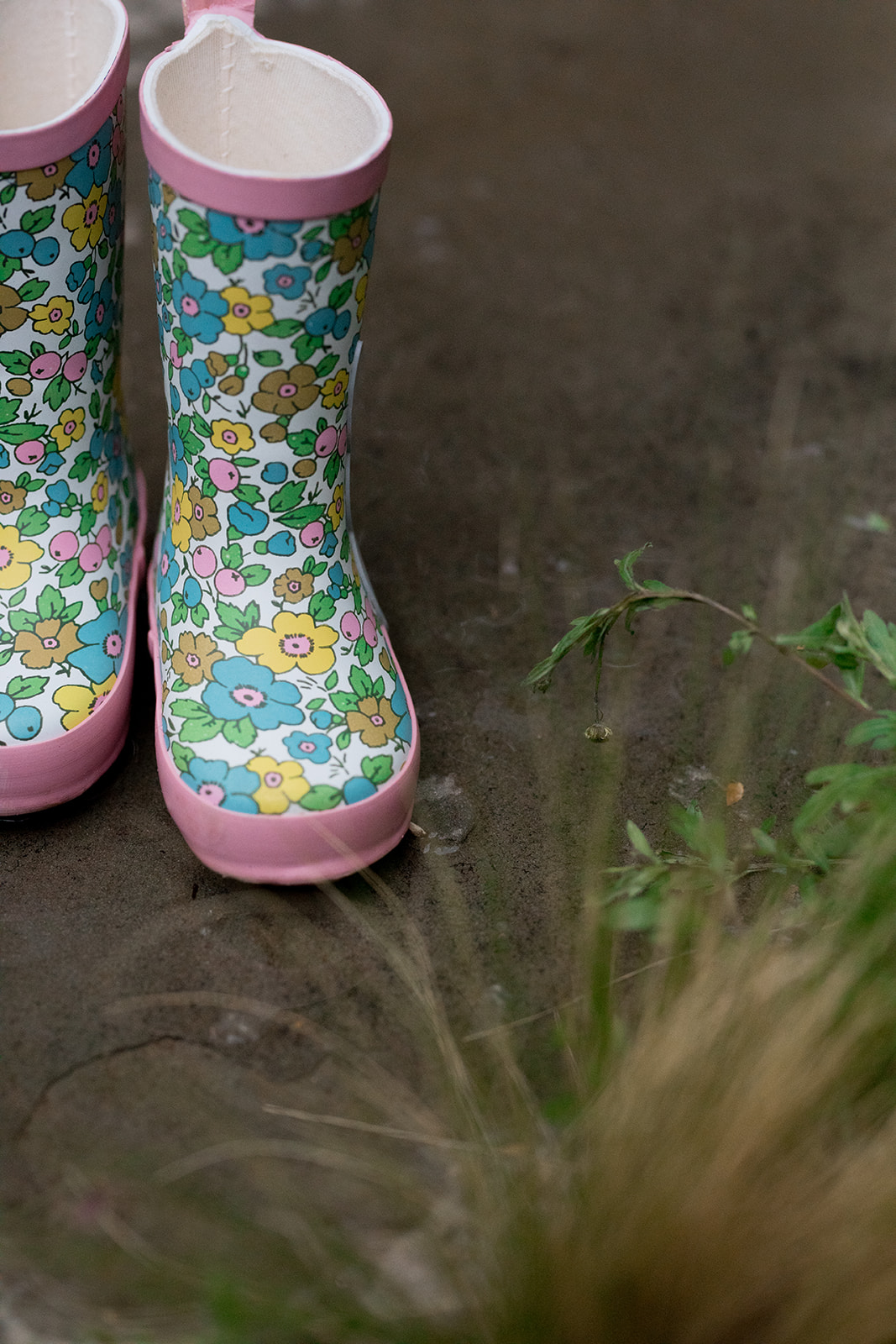
Why I'm Gardening With My Kids (Even Though I'm Not Great At It)
- How It Works
- Marketplace

What is Slow Travel? And How to Do It
27. Oct. 2021
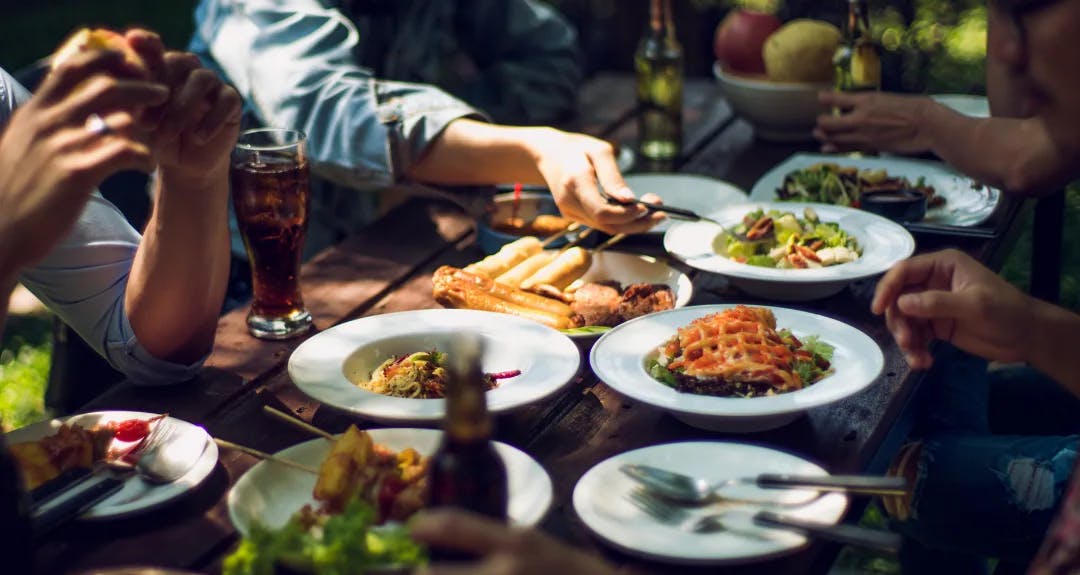
Is it just us, or is travel, and the desire to travel, everywhere? Travel has become a ubiquitous part of life for so many people, particularly now that technology has made it seem much more accessible. Take a look online. Instagram is full of travel-focused accounts showcasing the world’s most beautiful places. YouTube gives adrenaline-junkies a perfect platform to share their adventures. Airbnb provides stunning, photo-ready accommodations accessible at every price point. One study even showed that people were more likely to travel somewhere if they thought it would result in an increase in their social media following and engagement .
Seeing travel as a way to keep up with trends and become more popular online can actually stop you from experiencing the true benefits of getting out of your own bubble. The people who are leaving behind slow travel in favor of quick trips to stunning and inspiring places rack up more “likes”, so it can feel like we’re missing out if our own experiences don’t stack up against theirs.
Talk about FOMO.
If you find yourself making an extensive list of the places around the world that you want to check off of your bucket list, it may be time to take a step back and think about the reason behind your desire to travel. What do you want out of your travels? A fast and furious tour seeing ‘everything there is to see’, changing locations every 2-3 days? Or do you want to feel like a local, spending leisurely days strolling off the beaten path? If you’re craving a more authentic experience, one that leaves you with a feeling that you truly got to know the places, people and cultures that you’ve encountered on your travels it could be time to s l o w down. Learn more about this lifestyle by reading our guide on how to become a digital nomad .
Join a community of like-valued professionals on a work and travel program
What is Slow Travel?
Slow travel is an approach to travel that emphasizes connection: to local people, cultures, food and music. It relies on the idea that a trip is meant to educate and have an emotional impact, in the present moment and for the future, while remaining sustainable for local communities and the environment.
Heard of the slow food movement ? It originated in Italy in 1986 and aimed to preserve regional cuisine, local farming and traditional cooking methods through education of tourists and local residents. People were realizing that increased tourism was changing the way that people were eating, bringing larger, chain-based restaurants to major cities and taking away profits from family-owned establishments. The slow food movement worked to draw business back to traditional restaurants by touting the benefits of using regionally-sourced ingredients and stimulating local economies.
Different industry, same concept. Where travel is considered, a “slow” mindset urges tourists to take a step back from their to-do lists and Instagram-worthy photo ops and simply embrace what the local community has to offer. Instead of making sure you hit the “hot spots” outlined in a travel guide, focus on things that locals do everyday, things that excite them and give them joy. The impact that these connections have on you will last a lot longer than the memories that you have of racing from tourist attraction to tourist attraction.
This is not just a way to travel, it’s a mindset. It’s the outlook that the quality of your experience is more important than the quantity of your experiences when you travel.
You can wake up without plans for the day, unsure of the adventures that await you, but with the knowledge that what you’ll experience will mean so much more than a post to social media could convey.
Many travelers like to use the phrase “there’s always another trip” to convey that it’s impossible to see or do everything within a city in a short amount of time. It’s okay to save some of the sights for another visit. Instead of racing to do it all, indulge in experience-based activities.
When you visit a museum, give yourself enough time to fully immerse yourself in its artworks. Ponder the meaning behind a painting, or imagine the artist’s thoughts as he or she sculpted an object from clay or stone. Lose yourself in the meaning behind the duality of identity in Frida Kahlo’s self-portraits. Absorb and analyze the cultural impact of Salvador Dalí’s surrealist works. Remember: you don’t need to visit every wing or exhibit - you can always come back.
What other impactful local activities could you only experience if you were traveling slowly? Imagine learning how to create handmade beads from a local artisan, heading out with a resident fishing crew to reel in the day’s catch or getting to know the proper intricacies of drinking mate from a born-and-raised Argentinian.
You want to find something on this trip that leaves a fingerprint on your soul. Whether it be an evening spent wandering through a local park, a day pondering artistic intention in a museum or an afternoon white water rafting in the mountains, Whether it be an evening spent wandering through a local park, a day pondering artistic intention in a museum in Paris, an afternoon white water rafting in the mountains or going on a day trip from Mexico City , you’ll search for an adventure that will make you feel something.
Benefits of Slow Travel
Slow travel has many benefits for the traveler and the community that they’re visiting. In a way, it’s a return to the reasons that people had traveled in the past, for a cultural experience or a chance to lose themselves in a new place without the need to document every moment. Here are a few reasons you should consider travelling slowly:
Prevent “tourist burnout”
Have you ever left a trip more tired than when you arrived? That’s a little thing that travelers call “tourist burnout”. Trying to see or experience as many things as possible within a short period of time can be exhausting, and actually leave you with a negative view of your time on the road as a whole.
Ditch your typical frenetic mentality and slip into the pace of the local culture. Instead of thinking of your trip as a list of as a checklist, reframe it as an opportunity for growth, education and development . That to-do list that you created doesn’t need to be fully completed in order for your travels to have been successful. You can always head back to that destination later to see what you missed!
Traveling slowly can be a more inexpensive option than a typical tourist jaunt. Chain hotels and big-name restaurants tend to be pricier, and they don’t offer the type of charm or experience that a local spot would. Beyond the places that you’ll visit during the day, you can save money on the space where you’ll lay your head at night. Seeking out local Airbnb options or even homestay opportunities could be the key to a connected, life-changing experience on your next trip. If you have a kitchen in your accommodations, bonus! You won’t have to eat out quite so often (though you may be tempted to with all of that amazing cuisine), and you can find regional ingredients with which to make a culturally-relevant meal with your own two hands.
Make connections
We’re going to let you in on a secret: you won’t meet anyone who has the ability to change your life if your head is stuck inside of a tourist guide. Look up and look around. Learn a bit of the local language before you arrive so that you can engage in brief conversation with shop owners. A short conversation with a man working at a bakery could turn into an opportunity to learn how to make your own bread and, later, a traditional meal with his family where you can make even more connections. You never know what could happen when you take the time to slow down and get to know the people in the city that you’re traveling in.
Break out of your comfort zone
This way of travelling isn’t always simple, planned or easy. It requires a certain level of confidence that things will work out, or that you will be able to figure them out along the way. There will be moments during your experience that scare you, but these are the moments that can teach you a lesson that you could carry with you for the rest of your life. You may need to overcome language barriers and differences in cultural customs. These experiences will make you a more knowledgeable traveler and give you global perspective. Unlike a tourist experience, where translated tours abound and Yelp directs you to a place where you’d most likely enjoy the food, a more authentic experience could end up with you tasting a scorpion for the first time in China. You’ll also leave little to no negative impact on the local community because you won’t be working with exploitative tour operators. That’s what will make it one of your best trips ever.
How to Slow Travel
All it takes is a shift in perspective and mindset to get started. Here are a few tips for turning your next trip into a more authentic experience:
Live like a local
Talk to the people that you meet when you arrive at your destination and find out their favorite places to eat, relax, and learn. They know this city better than you do, so take their advice and run with it. That little hole-in-the-wall cantina might have the best guacamole that you’ve ever had.
Don’t try to see everything on your list or, better yet, don’t make a list at all
Leave a few things up to chance for once. When every minute is planned to a tee, you don’t leave room for surprise or happenstance. When you wake up on the first day of your travels, surrender to whatever the world has in store for you and live without fear of missing out.
Get ready to grow
Traveling is not the time to seek out the ordinary. Embrace the feelings of discomfort and use your trip as a chance to grow and learn more about how people around the world. Haggle in a local market. Say ‘yes’ to an opportunity that you never would in your normal life. Arrange a homestay where you’ll have to socialize with locals around the kitchen table on a daily basis. Whatever you do, don’t hold yourself back because of worry or discomfort.
Bring it on home
Finally, the idea of slow travel doesn’t have to just apply to ‘other’ places. Once you have grasped this mentality, implement it in a place that you are familiar with, perhaps even your hometown. Have you been too caught up in everyday tasks and responsibilities to notice the little things? Do you frequent new, hip restaurants or do you try out places that have been around for generations? Is it a priority for you to make new connections within this city, or are you content with the relationships that you already have?
Think of yourself as a tourist within your own city. This could be your chance to make your hometown feel new again, and create an emotional connection to this place that has felt too stagnant or comfortable for so long.
It may not be for everyone or all types of trips (we don’t blame you if you want to climb Machu Picchu or take a photo in front of the Eiffel Tower), but it is achievable. It doesn’t take any extra effort or resources to do, just a change of mindset and an openness to its possibilities.
With that subtle switch, travel again takes on a meaning. It can create memories that are more lasting than fleeting in an instantaneous world absorbed with the FOMO-inducing landscape of social media. As you consider your next travel experience, think about what you could take away from it if you implemented a slow travel mindset and remember, “there’s always another trip”.
Remote Year Trips You Might Be Interested In
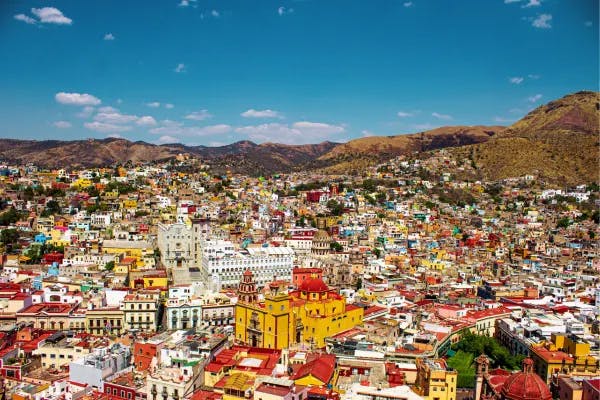
Regional Immersion
4 Months with Samba
4 Countries
Jun 30 - Oct 26, 2024
$2,350 / month
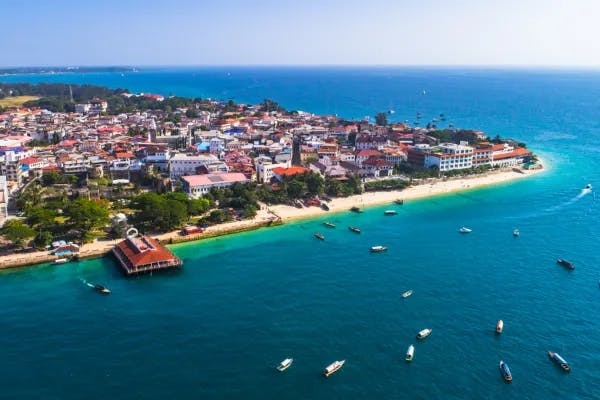
4 Months with Fela
Sep 29, 2024 - Feb 1, 2025
4 Months with Messi
Jan 5 - May 3, 2025
Keep me updated
What Does the Phrase “Slow Travel” Actually Mean?
By Sebastian Modak

This is part of a collection of stories on slow travel—read more here.
For about a decade, Paul Salopek, a Pulitzer-winning journalist, has been walking. By that, I don’t mean he’s consistently hit his 10,000 steps on daily constitutionals. In 2013, Salopek set out on the Out of Eden Walk , a project to follow the 80,000-year-old footsteps of our forebears, following the 24,000-mile route of human migration from Ethiopia to the southern tip of South America —all on foot just as they had done. Salopek’s still-unfolding, extraordinary journey might be considered the ultimate experiment in so-called “slow travel,” a term that is being used more and more frequently to describe everything from backcountry bikepacking expeditions to mega-ship cruises. But when I reach Salopek on Zoom to ask him about it, he is in the Chinese province of Shaanxi and is audibly confused about what the term even means. “There’s been no other way but ‘slow travel’ for 99 percent of our history,” he says. “I guess in today’s world to premise anything on going slowly is revolutionary.”
It’s hard to pinpoint its exact beginnings but the slow travel revolution—an intentional move towards more mindful, more environmentally responsible, less purely convenient modes of getting around—organically emerged from another revolution. In 1986, a journalist named Carlo Petrini, in the most Italian protest ever conducted, handed out bowls of penne pasta to passersby and demonstrators who yelled, “We don’t want fast food. We want slow food!” The target? A McDonald’s, the first in Italy , set to open at the foot of the Spanish Steps in Rome. The McDonald’s did indeed open, and is still there, but by actively resisting the very concept of fast food, Petrini started what became known as the slow food movement, a culinary practice that emphasizes natural ingredients, traditional cooking methods, and long, languorous meals where food is relished rather than treated as fuel.
If slow food is defined, at least partially, by what it’s not, then the same can be said for slow travel. Slow travel can be best understood as a collective reaction to our post-industrial obsession with convenience, where time, and using as little of it as possible, is the biggest priority in getting from point A to point B. Some have tried to give slow travel a more concrete definition. In 2010, for example, a decade before the coronavirus pandemic saw skyrocketing interest in trekking, cycling, and domestic trips, two tourism researchers out of the UK, Janet Dickinson and Les Lumsdown, wrote that slow travel was “an emerging conceptual framework which offers an alternative to air and car travel, where people travel to destinations more slowly overland, stay longer and travel less.” Seems simple enough. Take a train, a bike, kayak, or your own two feet instead of a plane and car and just like that, you’ve taken your vow of mindfulness; welcome to the church of slow travel?
Of course, like any trend that starts with a kind of radical thoughtfulness, the definition of slow travel gets slippery with the more questions you ask. What if, on that train ride, you do nothing but scroll on TikTok? What if the place and the people you really want to get to know and learn from are just too difficult to reach without getting on a plane, because of other obligations, money, or a disability? Does that disqualify you? Run a Google search of slow travel and you won’t need to scroll long before you’re accosted with shiny images of beautiful people on pristine beaches and “must-have” checklists for worthwhile “slow travel” experiences. What if you can’t afford the five-digit price tags associated with the two-week yacht trips, luxury train rides, and wilderness resorts that market themselves as the ultimate in slow travel indulgences?
What emerges then is a far more complex definition of what it means to travel slowly. Traveling slowly can mean exploring your own backyard, avoiding environmentally damaging transportation when possible, spending a lot of time in one place instead of a little time in many—but it also is an internal process. It means tamping down our own built-in, conditioned obsessions with time and allowing the world to move just a little slower so that we can actually notice it. Slow travel is a mindset: you don’t need three weeks of vacation to slow down. A day spent strolling through an unfamiliar neighborhood without a crammed to-do list or exploring a state park with nothing but a route map and a bag of snacks could fall under the umbrella of slow travel. It comes down to how you engage with the world as you move through it.
“It’s about taking the time to make a connection—to the land and each other,” says Chyanne Trenholm
“If slow travel is about stopping and taking the time to properly connect with a place and its people, then yes, it’s something I’m all for,” says Chyanne Trenholm, a member of the Homalco First Nation, and the assistant general manager of Vancouver Island-based Homalco Wildlife and Cultural Tours . The Indigenous-owned company organizes visits to local communities, and Bute Inlet wildlife excursions. Trenholm says the idea of taking it slow and being present has been ingrained in her culture as a steward of the land. “Slow tourism is not the term we’ve used much, because it’s not just how we think of our brand—it’s who we are,” she says. She feels a certain sense of responsibility in instilling that kind of thinking in visitors who might arrive looking to get that one shot of a grizzly bear with a fish in its mouth and then leave. “It’s about taking the time to make a connection—to the land and each other,” she says. “I think humans in general can learn a lot from the act of making those connections.”
Monisha Rajesh , the author of three books on long-distance train travel, thinks that moving slower gives our brains the time it needs to process our experiences. “On a plane, you lift out of one place and drop into the next without any awareness of the in-betweenness,” she says. “On a train, the journey starts the second you get on board. I don’t know who is going to enter my story and the surroundings are part of the adventure.” Instead of the time it takes to get from origin to destination being a kind of blank nothingness—a necessary, if somewhat annoying, component of travel—suddenly, it teems with possibility.
When people hear about long, slow journeys—a cross-country bike trip , a paddle down the Mississippi, a 10-year-and-counting walk in the footsteps of early Homo sapiens—the reaction is usually a mix of “you-did- what?” shock and “I-could-never” envy. It’s a strange reaction considering our history as a species. Salopek tells me that he’s noticed something almost primeval about entering a community that is not your own by foot. “They see you coming from a distance. By the time you walk up to them and say hello there’s this ritual of greeting that you’re both prepared for,” he says. “We’ve been walking into each other’s viewsheds for 300,000 years and that’s why it feels so good.”

By signing up you agree to our User Agreement (including the class action waiver and arbitration provisions ), our Privacy Policy & Cookie Statement and to receive marketing and account-related emails from Traveller. You can unsubscribe at any time. This site is protected by reCAPTCHA and the Google Privacy Policy and Terms of Service apply.

Slow Travel Guide: The Best Slow Travel Destinations
by Melissa Giroux | Last updated Feb 19, 2024 | Budget Travel , Travel Tips
By now, you have probably heard of the latest travel trend, slow traveling.
Many backpackers and budget travelers enjoy slow traveling – spending a month or two in each place before moving on.
In the past few years, many travelers are now opting to travel to fewer destinations and stay in each one for longer.
So what exactly is slow traveling, how do you do it, and which countries should you do it in?
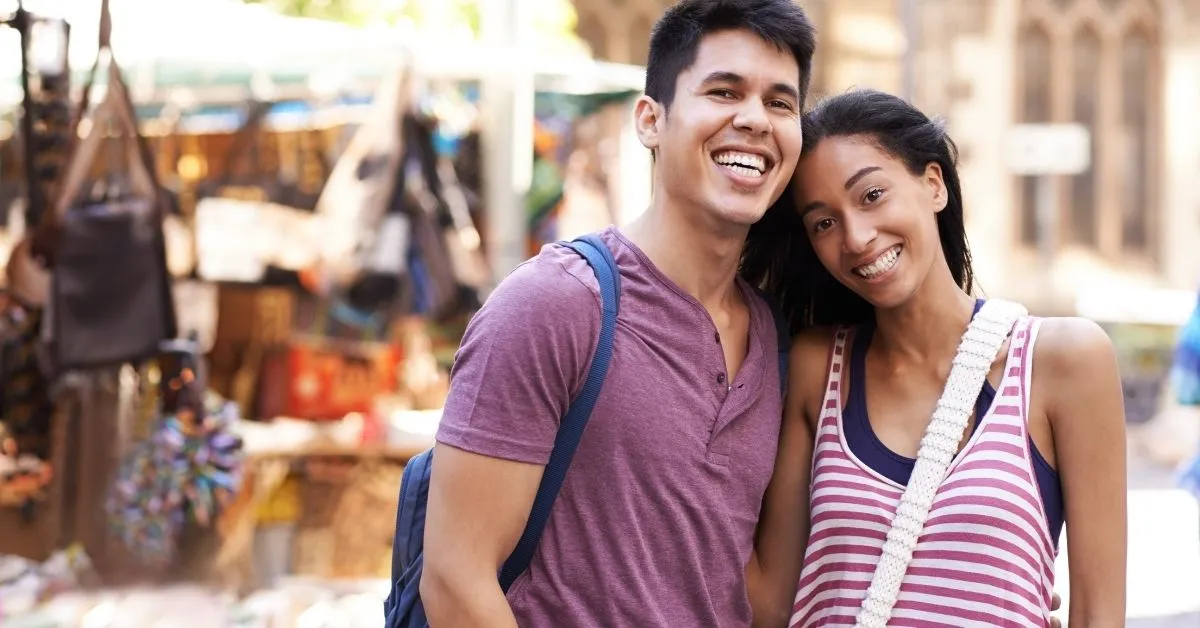
What Is Slow Travel?
Most backpackers typically seek to visit as many destinations as possible on a trip. Therefore, they choose to spend a few days in each place, seeing only the highlights before moving on.
By traveling in this way, you can visit around ten or so spots on a one-month trip, swiftly getting through your bucket list.
A slow traveler typically spends longer in a destination than a traditional backpacker.
Slowing down your trip in this way allows you to experience each place on a deeper level, learn more about the culture, and even get involved in the community.
A slow traveler who spends one month in a particular city will have a completely different experience than a backpacker who passes through for a weekend.
Slow traveling allows you to get a greater sense of life in other parts of the world. By spending a few weeks to a few months somewhere, you may feel more like you temporarily live there rather than on vacation.
The additional time allows you to explore more of the city and the surrounding areas. You are also likely to do more ‘local’ activities than just the tourist attractions.

How To Slow Travel
Slow travel is ideal for anyone who wants to travel for longer. However, it can seem that a one-year trip would be much more of a financial investment than a one-month vacation.
Therefore, many travelers worry that they will run out of money if they travel slowly like this.
However, there are ways that you can slow travel around the world without spending more money than you would on a shorter backpacking trip.
Here are five tactics you can use to travel slowly on a budget.
Visit Destinations During Low Season
We slow travel to break away from the traditional tourist mindset.
Therefore, to see a destination differently and save money, I recommend planning your trip so that you visit each destination in the low season, or at least towards the end of the high season.
As you know, hotels, tour operators, and even restaurants raise their prices at the beginning of the high season in anticipation of flocks of tourists.
However, as the season draws to a close and the crowds leave, prices come back down. So, arriving at this point is a brilliant idea if you want to travel on a budget.
Not only will you get better deals everywhere in the off-season, but you will also experience a much more peaceful and relaxed atmosphere.
Without the tourist crowds, it’s much easier to see a city for what it truly is and integrate yourself into the community.
However, the low season can mean extremely high temperatures in some parts of the world. Or, like in many tropical countries, the low season corresponds to the rainy season.
Even so, tropical rainstorms are usually short and heavy and don’t last all day. Therefore, you will still have plenty of opportunities to enjoy your time there.
Spend (At Least) One Month In Each Place
I recommend staying in each place for one month. If you’re used to staying just a few days in each location, one month may seem very long.
But I promise you, it is not. Aside from slowing down and exploring at a leisurely pace, you can snap up great accommodation deals if you commit to staying for a month.
You can usually get monthly discounts at hotels and Airbnbs. However, you might be able to rent a studio apartment for one month for even cheaper.
You’ll also be able to save money on car or scooter rentals. Usually, rental companies have better deals for long-term rentals.
Live Like A Local
To keep your day-to-day costs low, look at and copy how the locals live.
Although the western restaurants may feel familiar and comforting when you’re in a foreign land, the food in these restaurants is often 5 times the price of local eateries.
While it’s OK to treat yourself to home comforts once in a while, doing so daily will seriously dent your budget.
Some local restaurants also aim more towards tourists than locals, so prices will be higher. An easy way to find a proper local restaurant is to look for where you see the most locals eating.
Unless you’re traveling in Asia or South America, where eating out is extremely cheap, you’ll probably want to cook your own meals too.
Visiting food markets and buying groceries is a brilliant way to experience local life and keep your daily spending under control simultaneously.
PSSST. Want to get FREE accommodation in exchange for work?

Choose Land Travel Instead Of Flying
Traveling without any time restraints opens up the opportunity to travel via different (and cheaper) modes of transport.
Instead of flying, look into the possibilities of traveling between destinations via car, bus, or train.
Yes, the journeys will be much longer and less comfortable than taking a flight.
However, you could save a considerable amount of money. Plus, traveling by land allows you to see very rural parts of the country.
Volunteer In Exchange For Accommodation
One of the best ways to slow travel around the world on a budget is to volunteer in exchange for free accommodation and food.
For example, many hostels will let you stay for free if you spend a few hours each day cleaning the dorms and common areas.
While it’s not glamorous work by any means, the money it will save you could allow you to double the length of your trip!
Many other ‘ volunteer for accommodation ‘ options are available if you’re not a fan of the hostel environment. I recommend using a trusted platform like Worldpackers to find opportunities.
Worldpackers vet and verify all the ads posted so you can rest assured that the placements are legit and trustworthy.
On Worldpackers, you can find community projects run by local organizations or NGOs. This is a fabulous way to get involved in the community and make a real difference during your time there.
Volunteering on these kinds of projects can bring real meaning and purpose to your trip, with the bonus of having free accommodation, meals, and other benefits.
There are also work exchange placements in schools, where you will get to teach English to underprivileged children.
Or, if you want to get in touch with nature, you can volunteer on a farm, an eco-lodge, or a campsite.
Want to learn more? Read our Worldpackers review .
GRAB YOUR DISCOUNT ON WORLDPACKERS
Best Destinations For Slow Traveling On A Budget
Now, let’s talk about the best destinations for slow travelers.
United States
The great news is, if you’re based in the US, you don’t need to leave the country to travel.
The USA’s diverse states and landscapes make the country perfect for slow traveling.
What’s more, you can take scenic road trips from one destination to the next without having to splash out on any expensive flights.
However, the downside of traveling in America is that it is generally more expensive than in other parts of the world. Even so, one way to significantly cut your costs is to volunteer for accommodation at each destination.
Worldpackers has over 150 US volunteer programs on its platform, ranging from hostel work to homestays to farm work. Some unique opportunities you can get involved in in the USA include:
- Caring for abandoned and neglected horses in Reeds
- Working in a hostel bar in Lake Tahoe
- Volunteering on a yoga retreat in Hawaii
- Browse more opportunities here
South America
South America is a slow traveling paradise for those on a tight budget, dance lovers, and anyone looking to learn Spanish.
The continent is exceptionally cheap, both to travel around and for day-to-day expenses. Plus, South America is just as diverse as North America.
Slow traveling in South America presents a wide range of potential opportunities.
For example, you can trek Machu Picchu, explore the Amazon, party in Rio de Janeiro, and learn to salsa in Cartagena.
With so much to do and see here, you’ll undoubtedly want to extend your stay. You will find many brilliant charity organizations working across the continent.
They are always keen to offer free accommodation and meals to anyone who helps them out.
In fact, South America is one of the easiest parts of the world to find volunteering opportunities in.
For example, Worldpackers has over 1000 listings for volunteer placements in Brazil alone! You can:
- Learn about sustainable farming in Brazil,
- Paint artwork in a hostel in Chile
- Help to build an Earthship inspired art studio in Argentina
- Take care of the stray dogs in Peru’s Sacred Valley.
Asia is an incredible place to slow travel. You can take your time to experience the unique way of life in each Asian country and give some much-needed help to the communities.
Asia is also full of beauty, and short backpacking trips often miss out on so much. By slow traveling, you can get off the beaten path more and discover some of the hidden gems of this vibrant continent.
If you’re a native English speaker, you will find hundreds of volunteer opportunities to teach English to underprivileged kids in Vietnam, Cambodia, India, and many more countries.
There is also plenty of charity and community work that you can get involved in where you will actively see your help making a difference.
Some cool and meaningful volunteer placements you can find on Worldpackers include:
- Working with Autistic children in Ha Noi, Vietnam
- Teaching yoga in the Philippines
- Caring for stray animals on Thai island
- Volunteering in an orphanage in Nepal
- Browse opportunities here
Australia is one of the most loved backpacking destinations worldwide. The country offers so much natural beauty, tons of adventure, and plenty of once-in-a-lifetime experiences.
However, traveling around Australia and taking trips to the Great Barrier Reef, Whitsunday Islands, and Uluru can quickly become costly.
Many backpackers in Australia fall in love with a particular town or city and begin volunteering in hostels, enabling them to extend their stay.
It’s easy to find hostels that will let you volunteer in exchange for a bed in a dorm.
However, there are also other types of volunteering options available that offer a more authentic Aussie experience.
For example, on Worldpackers , you will find opportunities to:
- Help on farms in Western Australia’s wine regions
- Care for llamas in the Southern Tablelands of New South Wales
- Clean the campgrounds on the gorgeous South Stradbroke island
There are so many wonderful European countries worth visiting, all with their own unique heritage and charm.
There is so much to see, like the lush green English countryside, Portugal’s medieval cities, Italy’s beautiful wine regions , and the immense Swiss Alps.
Therefore, it is essential to travel slowly through Europe.
However, like the USA, Europe can be an expensive continent to travel around. Therefore, volunteering for accommodation is a helpful way to explore more places while controlling your expenditure.
There are so many fun volunteer opportunities on offer in Europe. Many help the environment, too, such as rejuvenating a forest in Portugal.
Other unique European volunteer placements on Worldpackers include:
- Au pairing in France
- Leading pub crawls in Croatia
- Living and helping on a yacht in Montenegro
- Taking care of reindeer in Norway
Final Thoughts On Slow Travel
As the travel industry finds its feet again, many parts of the world choose to keep additional entry requirements in place.
Therefore, it’s the perfect time to travel slowly, spend longer at each destination, and volunteer for a good cause.
And to help you have the best slow travel experience, we’re giving you $10 off your next Worldpackers membership .
Want to learn more about volunteering abroad? Read one of the following blog posts:
- Hostel work
- Workaway vs Worldpackers
- Worldpackers promo code

MY TOP RECOMMENDATIONS
BOOK HOTEL ON BOOKING.COM
BOOK HOSTEL ON HOSTELWORLD
GET YOUR TRAVEL INSURANCE
LEARN HOW TO START A TRAVEL BLOG
LEARN HOW TO VOLUNTEER ABROAD

- Skip to content
- Skip to footer
| The Art of Living for Students of Life
What is Slow Travel? (+ 3 Slow Travel Myths)
By Kyle Kowalski · 14 Comments
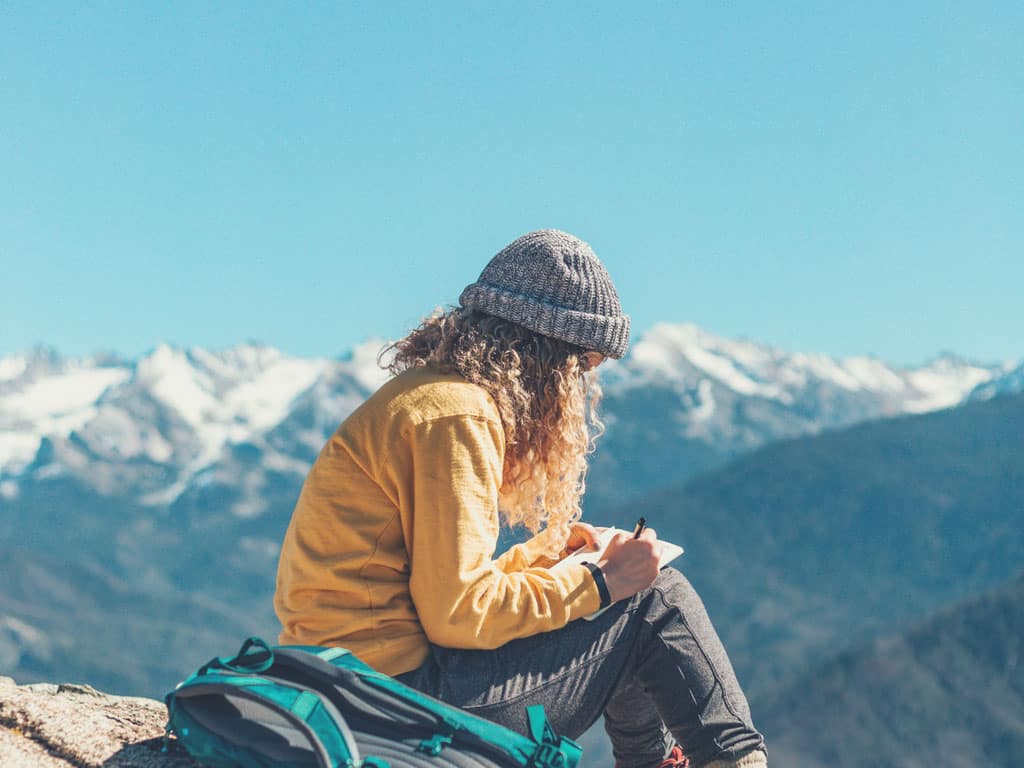
If you Google “slow travel,” you may be surprised by the lack of compelling information and resources you find. Unlike slow living, the slow movement , or slow food, slow travel doesn’t seem to be something as widely adopted or even discussed yet.
Traveling can be one of the most rewarding human experiences — opening your mind and worldview to new places, connecting with new people, and immersing yourself in local cultures. It can be meaningful, memorable, rejuvenating, and energizing.
Or, it can be the opposite. Slow travel ensures that you not only get the most benefit, but the local people and world around you do too. And, you won’t come back and need a “vacation from your vacation.”
So, what is it?
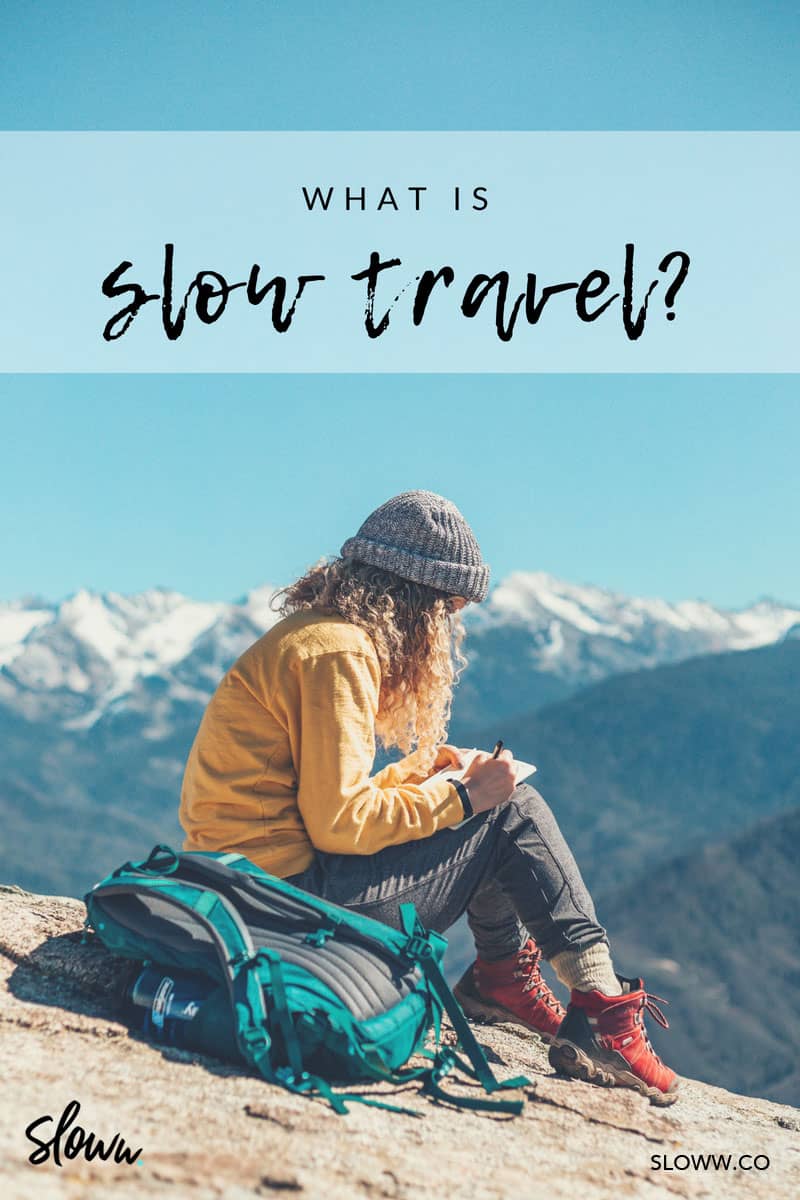
What is Slow Travel?
Maybe you’ve heard it described as mindful travel, sustainable tourism, or low-impact traveling. To me, slow travel is simply taking the principles of slow living and applying them to travel.
Slow travel is for you if you want a balanced itinerary where you can pace yourself and eliminate the stress of rushing around. It’s intentional and immersive — allowing you to go deeper on the things that matter most to you while traveling. It’s conscious and connected — connected with yourself, those around you, and the world.
Here were the best slow travel definitions I came across during my research:
Slow travel is a mindset that rejects traditional ideas of tourism and encourages you to soak in your environments and keep yourself open to new experiences. — The Art of Slow Travel¹ Slow travel is about the journey, not just the destination. Being excited about where you’re going, but being just as excited by how you get there, the people you meet, the sights you see and the experiences you have along the way. About slowing down to acknowledge that the journey you’re on allows, for the briefest moment, the chance to peer into someone else’s life and to share that moment in time with them. — The Travel Word² There’s an awful lot of clutter in modern life, and the only logical antidote to clutter is simplicity. Slow travel excels at simplicity. Freed from the pressure of ‘seeing everything’, you can actually relax a bit and enjoy your holiday. There’s a better chance you’ll meet local people, see a few sights off the traditional tourist path and get an appreciation for a different way of life (which some would argue is the whole point of travel in the first place). — Intrepid Travel³
3 Slow Travel Myths to Bust Before Your Next Trip
These slow travel myths are similar to slow living myths in general.
Myth #1: Slow travel has a minimum duration of one week. You don’t have to spend a certain amount of time in a place in order for it to qualify as slow travel. I’ve read a bunch of articles that state you must travel for a minimum of a week in order for it to be slow travel. But, slow travel is a mindset and approach that can be applied to any length of travel — even an afternoon outing in your hometown. If anything, slow traveling on your shorter trips is good practice for when you take a longer trip.
Myth #2: Slow travel means physically traveling as slowly as possible. It’s about traveling at the right speed. Pacing instead of rushing. Finding the right balance between too fast and too slow.
Myth #3: Slow travel is anti-technology. There’s a big difference between digital minimalism and being opposed to all technology. Digital minimalism simply advocates for technology to be used as a tool (instead of technology using us ). Technology can be a great tool while you travel — just don’t let it get in the way!
Check out the next post for 10 slow travel tips to try on your next adventure.
Do you have any experience slow traveling? Please share in the comments!
- http://www.theartofslowtravel.com/what-is-slow-travel/
- https://www.thetravelword.com/2012/02/07/what-is-slow-travel-heres-what-we-think/
- https://www.intrepidtravel.com/adventures/slow-travel-movement/
About Kyle Kowalski
👋 Hi, I'm Kyle―the human behind Sloww . I'm an ex-marketing executive turned self-education entrepreneur after an existential crisis in 2015. In one sentence: my purpose is synthesizing lifelong learning that catalyzes deeper development . But, I’m not a professor, philosopher, psychologist, sociologist, anthropologist, scientist, mystic, or guru. I’m an interconnector across all those humans and many more—an "independent, inquiring, interdisciplinary integrator" (in other words, it's just me over here, asking questions, crossing disciplines, and making connections). To keep it simple, you can just call me a "synthesizer." Sloww shares the art of living with students of life . Read my story.
Sloww participates in the Amazon Services LLC Associates Program. When you purchase a book through an Amazon link, Sloww earns a small percentage at no additional cost to you. This helps fund the costs to support the site and the ad-free experience.
Reader Interactions
July 17, 2019 at 2:43 AM
Your blog about slow travel educated me of the real sense of the meaning of the word. Thanks a lot for sharing this information on the www
July 17, 2019 at 8:14 AM
Sure thing, Tanisha!
September 12, 2019 at 10:06 PM
Thanks for your awesome guide on traveling. I am a passionate traveler and your guide inspired me to travel more.
September 19, 2019 at 12:04 PM
Amazing, thank you Tiana!
January 17, 2020 at 12:24 AM
Really love this post. I hate the box ticking mentality that so many people have developed. Social media has a lot to answer for. Last year, here in Scotland, the Outer Hebrides were promoting “InstaMaps.” I can’t think of anything worse.
January 29, 2020 at 8:43 PM
Thanks, Melanie! I haven’t heard of InstaMaps yet (maybe that’s a good thing). I do use digital tools like TripAdvisor, Yelp, AllTrails, etc to plan trips. But maybe that’s the key…it’s all pre -trip research. Now that I think about it, I don’t use my phone much during trips (no social, no taking photos/videos for social, etc). The box-ticking mentality is a surefire way to not check the box on the most important thing: actually being present!
March 27, 2020 at 1:59 AM
Whenever I read your blog, I learn a lot interesting points about the world. Keep writing.
April 10, 2020 at 3:38 PM
That’s wonderful to hear, Alexander. Plenty more writing coming your way!
August 26, 2020 at 2:54 PM
My partner and I love slow travel. It has changed the way we experience everything. It’s the small details that stick out to us and make us love the place even more! I wish more people knew and adopted this mentality, thanks for sharing.
August 30, 2020 at 1:35 PM
Thanks, Maria! Keep sharing the good word of slow travel.
February 9, 2021 at 5:40 AM
Thanks for writing this post! I start to understand why I always need to plan my own trips to feel I get what I want. I am a slow traveller without knowing it 😀 From the very beginning I started to travel I soon realized that the tour guides just didn’t like me. I was always the one asking to please stay a little longer because I was not done with exploring my surrounding. And they would always look at their watches saying – no we have another place to be in a short time. So, in the end, I totally gave up on all kind of travel booked through travel companies. Now it totally makes sense!
March 2, 2021 at 4:09 PM
Glad you enjoyed it, Cathrine!
June 4, 2022 at 4:53 PM
Thanks for your insights around slow travel Kyle! My husband and I love slow travel. We find it very rewarding to travel in a way where we contribute directly to the local community. Your article has also given me food for thought about more ways to incorporate it into our future travels.
July 29, 2022 at 7:09 PM
Wonderful, Hannah!
Leave a Reply Cancel reply
Your email address will not be published. Required fields are marked *
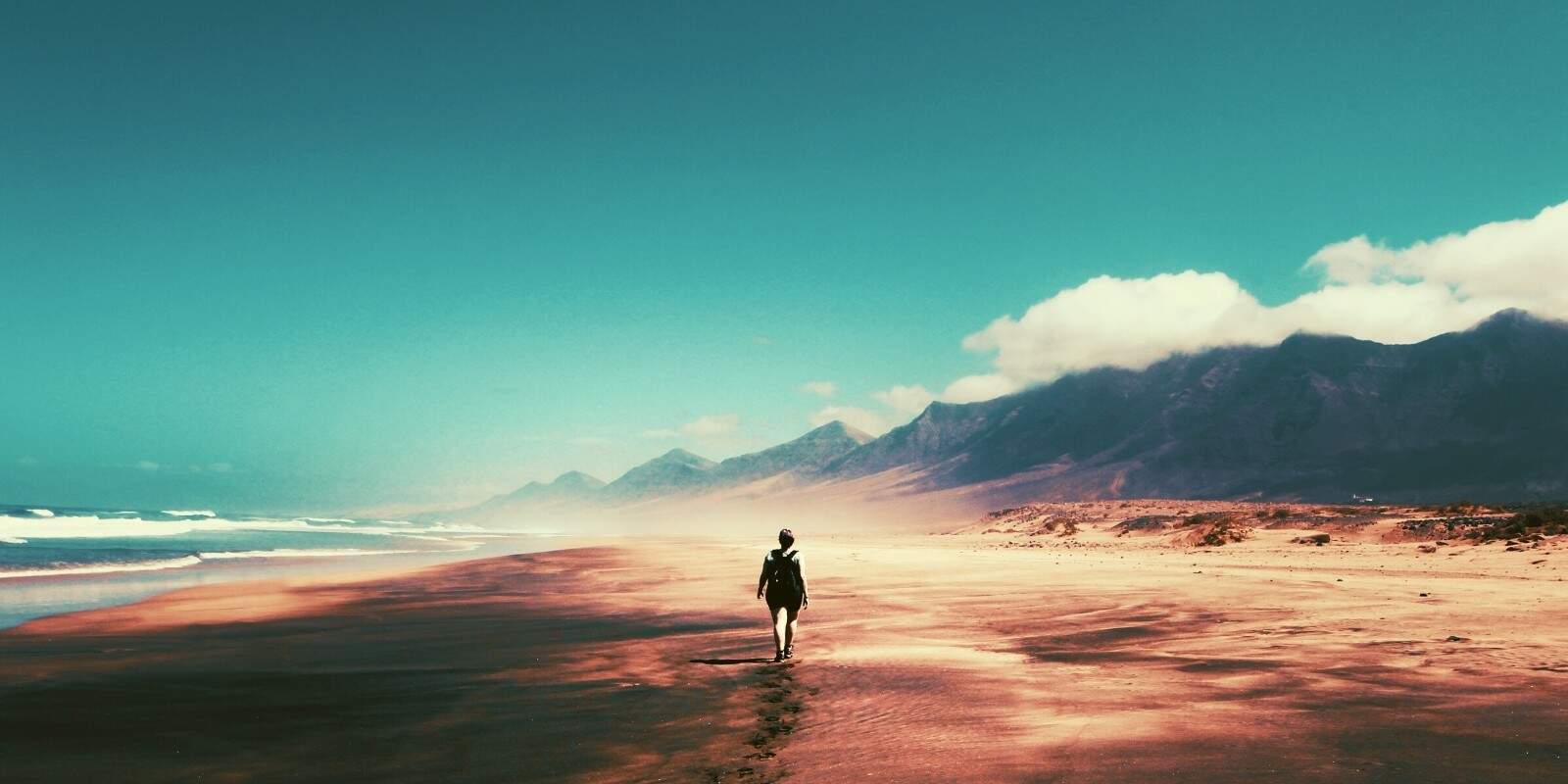
Popular Posts
Join the sloww movement.
📧 10,000+ lifelong learners read the Sloww Sunday newsletter (+ free eBook "The Hierarchy of Happiness"):
🆕 Synthesizer Course
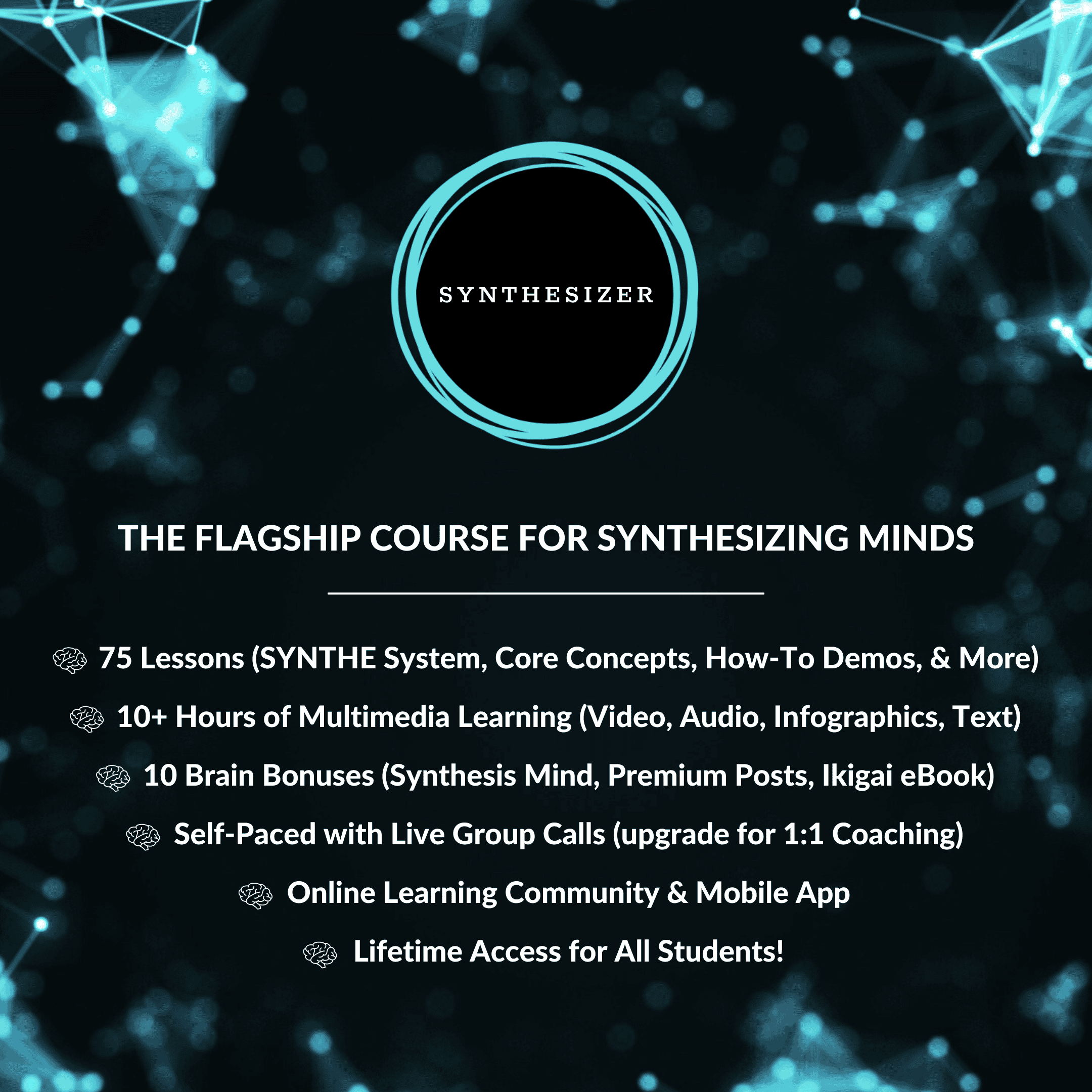
Sloww Premium
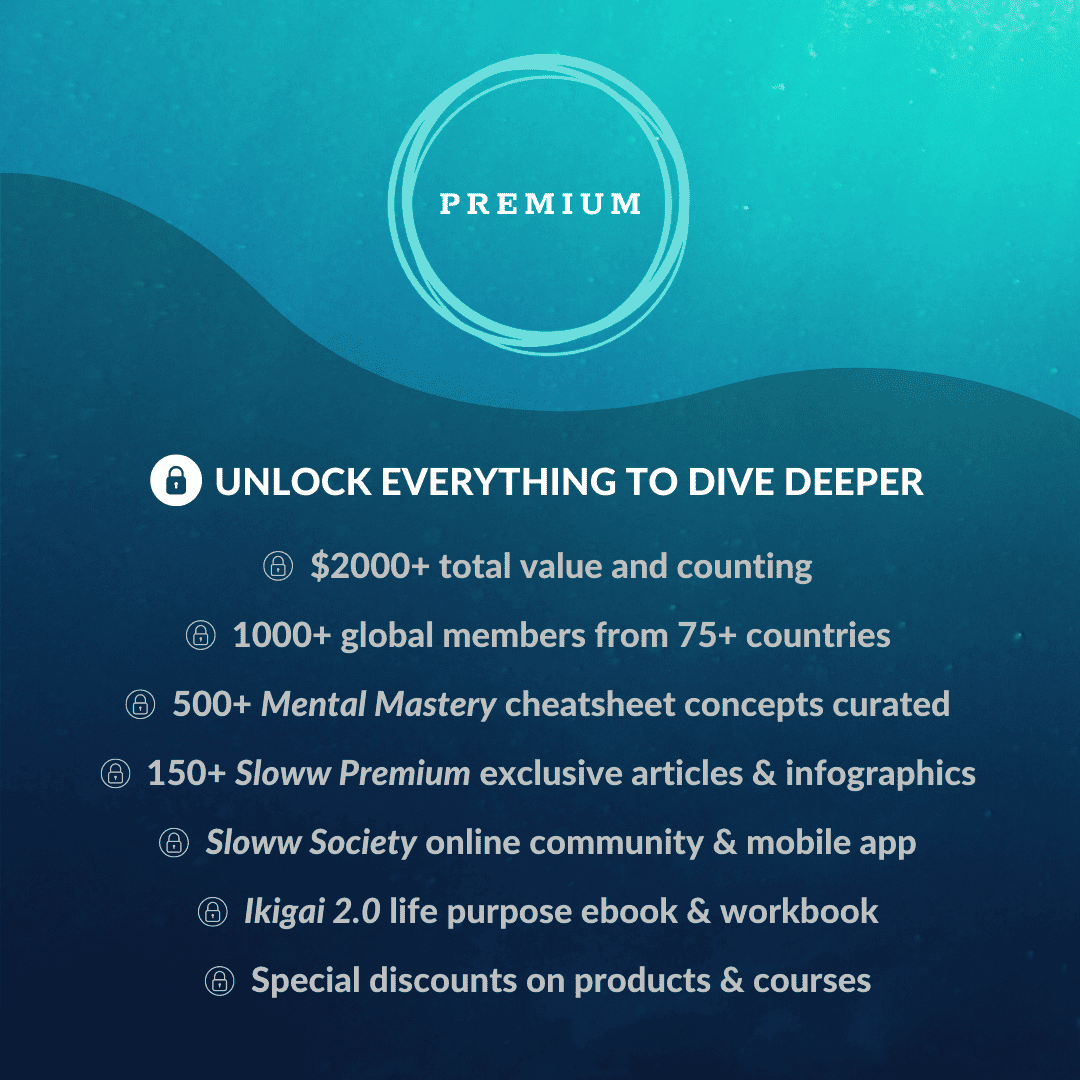
Sloww Social

What is Slow Travel? Benefits and How To Be a Slow Traveller
LAST UPDATED: 28th February 2024
We hear people say slow travel is better than fast tourism, but do you know what is slow travel?
Slow tourism has gained popularity due to its alignment with the changing values and priorities of modern travellers. Embarking on an immersive travel experience offers a more sustainable, flexible, and mindful approach to exploring the world.
So, let’s learn about authentic travel, the benefits of slow travel, and, practical tips on travelling slower.
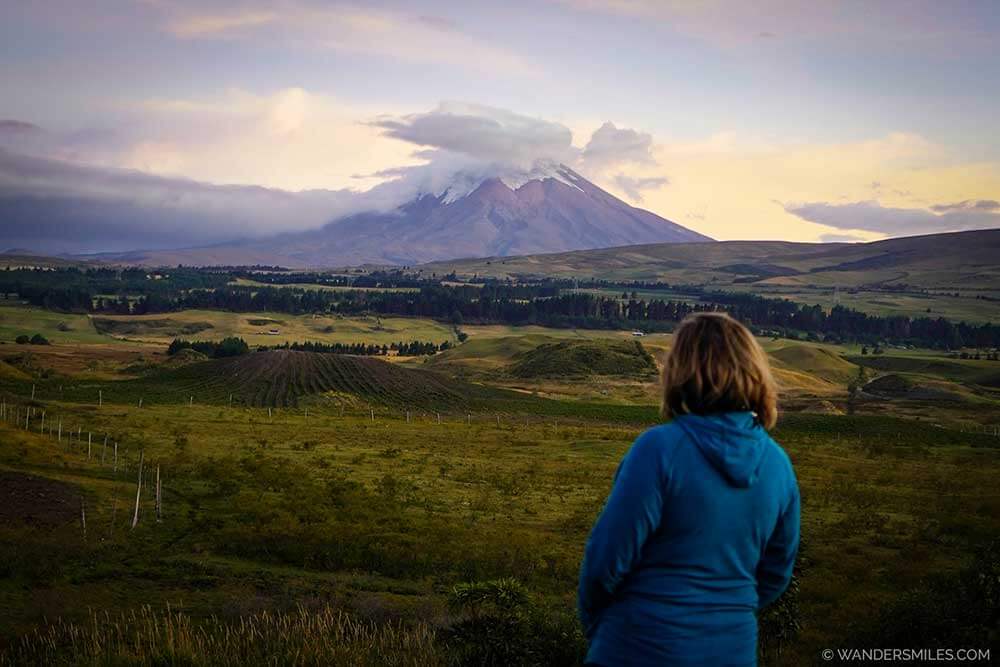
What is slow travel?
Slow travel is a deliberate, unhurried approach to exploring destinations, emphasising meaningful experiences, and cultural immersion.
Travelers stay longer in one place, support local economies , and seek sustainable, mindful journeys that promote a deeper connection with people and environments, in contrast to traditional, fast-paced tourism.
Why slow tourism is becoming more popular?
Slow tourism has seen a surge in popularity for several reasons, including:
Rise since COVID-19
The COVID-19 pandemic prompted a re-evaluation of travel practices. Travellers, concerned about the safety and eager to avoid crowded places, turned to slower, less hectic tourism. Many preferred remote and less touristy destinations, fostering the growth of slow tourism.
More people working remotely
The increase in remote work has freed people from the constraints of traditional office jobs, allowing for greater flexibility in travel. Slow tourism complements this lifestyle, enabling travellers to work while exploring new places at a more relaxed pace.
Increased interest in sustainable living
As people become more environmentally conscious, they are drawn to travel options that align with sustainable living principles. Slow tourism often involves eco-friendly practices, supporting local communities, and reducing the carbon footprint.
Self-care and well-being
The pandemic underscored the importance of mental and physical well-being. Slow tourism provides opportunities for relaxation, mindfulness, and disconnecting from the stresses of daily life, contributing to personal self-care and rejuvenation.
What are the benefits of slow travel?
Slow travel reduces carbon footprint.
Staying longer in one place reduces the need for frequent travel , and supporting local businesses promotes sustainable practices. This approach aligns with environmental conservation efforts, mitigating the impact of traditional travel on the planet.
Fast travel with short-haul flights causes more emissions than public transport . Travelling slower allows time to prioritise more eco-friendly transportation options , such as trains or bicycles. For travellers who do not have the luxury of slow travel, it is still worth taking on board the more responsible and eco-friendly ways to travel .
Slow travel saves money
Many hotels or guest houses will offer better deals on accommodation for longer stays to guarantee their income, and to compete with the AirBnB market.
Not being in a hurry to get from A to B will help cut your transport costs . Having the luxury of hanging around until the cheap flight comes up or the next public bus goes really does help the wallet.
Slow travel helps disconnect
Slow tourism enables travellers to cut off from their busy lifestyles . Fast travel can be stressful in itself, rushing out of the office to your destination, squeezing in some downtime, and heading back home. Slow travel helps us break free from the daily grind.
Deep travel gives us time to truly connect with other travellers . Meeting new like-minded people is part of the adventure, getting to know their story, and even planning part of your journey together if you are heading in the same direction.
Slow travel helps travellers to cut off from digital overload . Whilst it is easy to get targeted with ‘bad news’ on online media, I found it good for the soul to remove myself from the daily negative news on TV for a longer period.
Slow travel helps burnout. The increase in wellness retreats and digital detox experiences demonstrates how we are crying out to disconnect to give our minds and bodies a chance to heal and reenergise. Whether you decide to spend time on a retreat or just time out of normal life, this truly helps with general weariness.
Slow travel alleviates travel fatigue by emphasising leisurely exploration over rushed itineraries. Travelers have time for rest, reflection, and acclimatisation, reducing the stress and exhaustion associated with rapid travel. The relaxed pace and mindful experiences of slow travel contribute to overall well-being and a more fulfilling travel experience.

Slow travel is more immersive
Slow travel encourages engaging with the local community , fostering deeper cultural insights. Travelers learn about the lives of residents, their traditions, and daily routines. Getting involved in cultural festivals allows for first-hand experiences of local customs, traditions, and celebrations, contributing to a richer and more immersive travel experience.
Learning the regional language during slow travel promotes cultural understanding and meaningful interactions. Many backpackers will start their Latino trip with time in a Spanish School or living with a host family as I did in the Galapagos.
Engaging in volunteering while slow traveling enhances the journey’s meaningfulness. It allows travelers to give back to the community they visit, contribute positively, and create lasting impacts. This hands-on involvement provides a deeper understanding of local needs, fosters connections, and adds purpose to the travel experience, making it even more enriching and rewarding.
Slow travel is adventurous
Time gives us to travel to off-the-beaten-path destinations much easier. Exploring the lesser-visited places where transport is limited, or primitive, such as heading into the Darien jungle in Panama, or being about to journey down the Colombian Amazon instead of day trips from Leticia . Getting away from the obvious places to visit which suffer from mass tourism, opens our eyes to new cultures and intrepid experiences.

Tips on how to be a slow travel ler
Stay longer in each place.
Extend your stay to immerse yourself in the culture of the destination. It’s hard to get the feel of a place when you are passing through.
Build in stop days. It is easy to get caught up in seeing ‘everything’. When creating your itinerary on your slow adventure, plan some down days to sit back, and avoid travel fatigue.
Be flexible
Overplanning can restrict opportunities that may arise along the way. There is always some random offer by a group of travellers that has a spare place for something exciting, or a festival you didn’t know was happening. Have a loose list of what you want to see in a destination but leave a bit of wiggle room for the unexpected.
Seek local recommendations
Don’t pre-book your trips with bigger online companies. Ask around when you arrive at a destination means the money is going directly to the families
Local people know the hidden gems to discover off-the-beaten-track authentic experiences. Make sure you ask more than one person too, each local will have different insider tips.
Eat like a local to get the best culinary delights possible. Find out where they eat, and what traditional dishes you should try.
Shop at local markets to support the community. In some countries such as Ecuador, locals would come down from the highlands with their home-grown produce. Ask to try their r egional fruits , and buy your favourites.
Buy local artisan products. Ask locally where the best market is to buy the ‘genuine’ handicrafts. For example, in San Cristobal de las Casas , I was made aware of which streets have imported cheaper products taking away from the real artisans of the community.
Stay at locally-owned guesthouses or homestays to foster cultural exchange and support local economies. I have stayed in many guesthouses on my travels that offer more authentic experiences with wonderful characters who know the area well.
Spread the spend
Explore lesser-visited areas to spread the economic impact whilst uncovering hidden gems.
Travel at off-peak times brings money to communities and allows you to stay longer as the cost per night will be more favourable.
Be informed of the transport options
Whilst slow travel means you are less concerned about time, it is best to familiarise yourself with the travel options, and factor in these considerations;
- If you have landed in a remote location, local buses or transport may only go on certain days .
- If you want a little comfort, sometimes shuttles can get booked up .
- Depending on your country, buses and local transport can often take longer so if you are booked for a tour or hotel in the next destination
- You may wish to avoid travelling at night for safety reasons so best to plan your route ahead of time.
Prepare for border crossings
Border crossing experiences can vary widely between countries and regions, so thorough research and preparation are crucial for a smooth and hassle-free transition from one country to another. Here are some essential steps to consider:
Research and Documentation: Understand the visa and entry requirements for both countries.
- Understand the visa and entry requirements for both countries. Ensure you have the necessary visas, passports, and any required permits.
- Check visa validity and make copies of important documents.
- Keep track of entry and exit stamps or documents provided by border officials for visa extension or exit.
- If driving, carry your vehicle’s registration, insurance, and any required permits.
- Check if vaccinations or health certificates are required for entry. Carry necessary medications and health insurance.
Currency and Money: Think about what you might need money for on each side.
- Exchange currency or carry enough local cash for border fees, transportation, and expenses upon entry.
- Change your currency to the local one for easier transactions on the other side. It’s worth chatting with other backpackers in the hostel who may want to sell some currency from their last country.
Transportation: Plan your route and transportation method, and consider the availability of local transport on the other side of the border. Ensure your vehicle meets local requirements if you’re driving.
Border Timings: Borders may have specific operating hours; confirm the opening and closing times and plan your arrival accordingly.
Communication: Have a working phone with local SIM cards or international roaming to stay connected in case of emergencies. I use Airalo for these situations to avoid me feeling vulnerable as a solo female traveller.
Local Language: Carry a phrasebook or language app to help with communication, as border officials may not always speak English.
Stay safe with slow travel
Ensure you have comprehensive travel insurance covering medical emergencies, trip interruption, and lost or stolen belongings. Here are my tried-and-tested travel insurance options.
- SafetyWing for Digital Nomads . Benefit from 24/7 assistance, comprehensive and medical cover including Covid-19. Buy insurance whilst you are travelling, with the option of global health insurance.
- Get 5% off your travel insurance with IATI . Discover a range of policies from basic to premium, and multi-country trips for up to 3 months. IATI will cover countries where the FCDO advises against all travel. All include 24/7 Emergency Travel, Crisis, and Medical Assistance services.
- Get 5% off your travel insurance with HeyMondo . Benefit from 24-hour medical assistance, 365 days a year with single, multi-trip, and long-stay insurance (up to 90 days), cover for COVID-19 and non-refundable expenses. The handy app makes this a simple process! They give a little back too by contributing to ‘Doctors Without Borders’.
PIN FOR YOUR SLOW TRAVEL ADVENTURE

Disclosure : This post contains affiliate links, which means I may receive a small commission if you click a link and purchase something that I’ve recommended. It comes at no cost to you. Thank you for your support.

I'm a content creator for She Wanders Miles ♡ Digital marketer, photographer, hiker, and nature lover ♡ Passion for slow, sustainable and responsible travel ♡ Join me in discovering our beautiful world across 7 continents.
Similar Posts

Review: Las Qolqas Eco Resort Ollantaytambo

Fading tradition: Face-tattooed tribal women in Chin State

Places to visit in Salisbury England | Best itinerary to follow

Visit Guano from Riobamba Ecuador | What to Do + Eat

This Big Wild World | World Adventurers Series

Bukhara Guide | Holiest City in Central Asia
Absolutely 100% in agreement.
With each successive trip, my travel has become slower — and much more fulfilling and healing.
Totally agree. If you can afford the luxury of time to get to know a place better, slow travel becomes a more fulfilling experience.
Leave a Reply Cancel reply
Your email address will not be published. Required fields are marked *

- Embracing a Simpler Lifestyle: The Essence of Downshifting
- Gleaning and Food Recovery: Reviving Ancient Traditions for Local Community Bonds
- Making the Connection to People: The Heartbeat of the Slow Movement
- Mindful Living: Navigating the Pace of Modern Life
- Slow Schools and Slow Education: Bridging the Gap Between Academia and Life
The Essence of Slow Travel: Immersion, Connection, and Transformation
- The Rise of Slow Cities: An Echo of a More Grounded World
- Bioregionalism and the Slow Movement: A Return to Rooted Living
- Slow Weight Loss – Why its a better approach
- Economic Structures and the Ethos of the Slow Movement
- Slow Movement: Strengthening the Local Economy
- Slow Books: Rediscovering the Pleasure of Reading
- 5 Reasons Why SemaGlutide is Working Very Slowly
- Who Should Not Take Semaglutide | Risks & Warnings
- Does Semaglutide Make You Tired?
- Can Semaglutide Cause Diarrhea?
- PhenQ vs Semaglutide
- Does Semaglutide Cause Hair Loss?
In an era where bucket lists dictate travel itineraries and tourists hop from one landmark to another, a contrasting philosophy emerges – Slow Travel. It's not just about reducing pace but immersing oneself in the experience, forming genuine connections, and embracing the nuances of the journey.
The Heart of Slow Travel At its core, slow travel is an invitation to become part of local life, weaving oneself into the fabric of a community, its culture, and its daily rhythms. It rejects the whirlwind trips that leave you exhausted, opting instead for a more profound connection.
Engaging in local festivities can be a mesmerizing experience, drawing one closer to the community's heart.
Living, Not Just Staying The essence of slow travel is to live in a place, not merely stay. Instead of fleeting hotel visits, slow travellers often opt for holiday rentals that range from quaint cottages in the UK to agriturismos in Italy. These accommodations, equipped with essential amenities, offer the comfort of a home, enabling travellers to cook, relax, and live like a local.
The beauty lies in the details: shopping for groceries, daily interactions at the local café, or even casual chats with neighbors. Such interactions weave a richer, more intimate tapestry of memories than any rushed sightseeing trip ever could.
Slow travel isn't confined to bustling towns. Tranquil rural settings or serene beaches offer their own unique charm.
Deep Dive Exploration True to its name, slow travel encourages a gradual exploration. Instead of ticking off tourist hotspots, travellers immerse themselves in the immediate surroundings. Initial explorations might be on foot, expanding to bike rides and eventually venturing further, perhaps by train or car.
By prioritizing conversations over checklists, slow travellers often uncover hidden gems, from local stories to lesser-known spots, that standard tourists might overlook.
Engaging in traditional practices can be an enriching experience, revealing layers of a culture.
Beyond Just Sightseeing A significant advantage of slow travel is the time and flexibility it allows. It opens doors to unique experiences, be it volunteering at a local school, learning a new skill, or engaging in wwoofing. The concept of "voluntourism" melds travel with volunteering, providing travellers a chance to offer their skills in aiding local communities, making the journey both fulfilling and transformative.
Destinations Embracing the Slow Travel Ethos Recognizing the profound impact and potential of slow travel, some destinations are curating experiences tailored to the slow traveller. Slow Islands, for instance, champion not just the ethos of slow travel but also the gourmet delights of slow food.
Conclusion Slow travel is more than a trend; it's a transformative experience. It beckons travellers to dive deeper, form authentic connections, and return not just with souvenirs but with enriched stories and lasting memories. As the world becomes increasingly hurried, slow travel stands as a testament to the age-old adage: "It's the journey, not the destination."
Available now
How to explore the yoga lifestyle, by author name.
The Ultimate Guide to Slow Travel

Art & Culture
Sightseeing
Food & Drinks

Kelsie Colclough | Live the World
July 4, 2022
Slow travel to discover true wanderlust.
Slow travel is becoming more and more popular. We think it’s the future of travel. Our Ultimate Guide to Slow Travel is all about embracing this immersive travel trend. We’re not here to judge other ways of travelling. Heck, more people travelling is a good thing any way you can! But, if you’re curious about how to slow travel then our guide is just what you need.
Find the best activities for you on our map!
Trust us - travelling slowly is exactly what you need to do to fall in love with your next travel destination. We’re not about judging how people travel, only to show you that there’s another option! We’ve put together our Ultimate Guide to cut down all those myths about slow travel, tell you why we love it so much, and tell you how to slow travel to get you started!
Say bon voyage to the tourist crowds and join us on an in-depth journey. Keep reading to have all your questions answered, plus the best slow travel destinations recommendations and sustainable travel tips! Our ultimate guide is everything you need to begin your journey down the slow travel rabbit hole…
The slow travel basics

These are the questions we get all the time about slow travel; What is slow travel and how do I do it? The meaning of the word “slow travel” can seem obvious once you first see it, but we’re here to share all the info you need to really dig in and get your journey started.
What is slow travel?
Slow travel is a way of travelling that gets to the heart of why we love the journey. Go at your own pace to discover authentic experiences as you get off the beaten track and discover local gems. The slow traveler explores their dream destinations at their own pace, avoids the traps of mass tourism, and enjoys a rich travel experience. Keep reading to get all the info you need on the art of slow travel!
Where did slow travel come from?
Slow travel is a branch of the slow movement. You’ve probably seen the slow fashion movement that pushes against mass production of clothes in fast fashion. Maybe our foodie friends know slow food restaurants, which focus on local and seasonal dishes for authentic experiences rather than mass produced meals. Slow travel originates from the “slow food movement”, which got its start in Italy as a protest against McDonald’s.
Some define slow travel as public transport or taking months to explore one place. None of those definitions are exactly wrong, but they miss out on what makes slow travel so great. Whether you’re enjoying a 2 day city break or taking a road trip across Europe, any trip can become a slow travel trip as long as you stick to the intention and our top tips.
Who goes slow traveling?
You might have gone on a slow travel-like trip without even realising. Backpacking, camping, and hyper focused city trips all fall under the beautiful umbrella of slow travel. The slow travel movement is an accessible movement for all from students on a budget, luxury travellers, and retirees. No two slow travellers look alike! Slow travel has nothing to do with age or your income. It’s all about what experience you want out of traveling.
Since you can really customise a slow travel trip and delve in deep to a local culture, we find that slow travel is the best option for many solo travellers and those interested in getting a full and authentic experience of their destination.
Are slow travel and sustainable travel the same thing?
Eco conscious travel or sustainable travel does have some overlap with slow travel. But they’re not exactly the same thing. By moving away from mass tourism and into more sustainable practices, slow travel is by its nature more eco-friendly than other trips. Unlike the usual sustainable travel tips though, slow travel has its own mentality.
While sustainable travel focuses on the effect that trips have on the environment, slow travel looks more inward. All those busy trips, crowded places, and wanderlust social media posts can have a negative effect on our mental health. In slowing the pace and taking things one step at a time, slow travel is (in our opinion!) a better experience for all involved - you and the planet!
Can slow travel be luxurious?
You can absolutely make slow travel trips on a higher budget. We know there’s this myth that slow travel is all about backpacking and while that type of thing does fall under slow travel, that’s not all it's about. Taste local expensive food, stay at luxury Airbnbs, and discover the best of the local culture on a luxury budget that’s right for you.
Our top 5 reasons to travel slowly!
Now you know what slow travel is all about. But have we convinced you to plan your next trip in the slow travel way? We’ve got all the reasons why you should hop onto the slow travel movement right here to get you thinking.
You support the local economy
Hey, big spenders! There’s just something nice about going to your local market and actually meeting the sellers. Slow is that, but on an even bigger scale. Major travel companies do have a habit of pushing you to major tourist spots and always giving you popular itineraries. We’re not saying that’s a bad option if that’s what you want from your travels, but slow travel gives you a local and authentic option.
By travelling slowly, you’ll probably be spending more time in one place. Dive in deep to the local scene to discover hidden gems, restaurants, and local events. You’ll be giving your hard-earned cash to smaller businesses and local artisans who need the money a fair bit more than your average top 100 travel company.
Slow travel can keep your budget low
We all want to travel more often! Slow travel helps to keep your travel costs down by focusing on one place and its surrounding area. You don't need a bunch of flights or train tickets to get the most out of your journey. Of course, if you’ve got a higher budget there’s plenty of slow travel destinations, hotels, and things to do for you as well!
Many digital nomads (those who work remotely while travelling) are often slow travellers. Taking a slower pace by spending more time in one area before moving onto your next destination keeps your transport costs much lower. And, of course, you get all the benefits of seeing the most of your next travel destination.
Slow travel can help the environment
Slow travel trips can involve public transport or some other sustainable way of travelling. Public releases way less emissions than the average plane! Slow travel can be done via the plane too, so long as you take your time at the destination, search for hidden gems, and keep your focus on the local culture.
You meet new people
Yes, you will meet new people however you travel! But we’ve found the slow travel community to be super welcoming. As you join in on sustainable travel groups and hunt down the best local things to in your area, you’ll find yourself surrounded by people who share the same mindset. You’re not just one in a crowd of tourists - you become an explorer ready to find the next gem.
Of course, if you’re hunting down authentic experiences there’s nothing better than getting tips from locals. Mass tourism might bring in the money, but it can have backlash. But you’re actually here for an authentic trip, in our experience, locals are way more friendly once you express that especially in places where tourism has had some downsides.
Remember why you love to travel
Have you ever been stuck in the airport wishing you were back in bed? Have you ever arrived at a destination you thought was beautiful on social media, but you arrive and there’s just a queue of people taking photos?
Slow travel gets to the core of why we fell in love with travelling in the first place.
Not to sound like a boomer, but when you travel just for travel's sake then it loses a lot of its magic. The local food that just melts in your mouth. Discovering the amazing places and hidden gems no one tells you about. Relax in the forest, up a mountain, or even in the Roman ruins inside a city park! Slow travel is about having a truly immersive travel experience. Escape your normal life and totally immerse yourself in the sights, sounds and smells of a new place, of a new culture.
Whatever you love about travelling, slow travel will dial it up to 11 . So what are the types of slow travel journeys and where should you go? Here are our top recommendations!
The types of slow travel journeys

Slow travel is more of a mindset than a pigeon hole category, but there are some holiday types that fall naturally into this type of travel. Road trips, backpacking, cycling journeys, and camping, can all be types of slow travel trips.
So long as you’re seeking out authentic experiences and taking your time, you can make any journey into a slow travel one. But here are some of our favourite easy slow travel trip types to give you some ideas.
Hop in your car and drive wherever you want! Road trips are an easy way of getting the group together and getting around to your dream destinations. Take a road trip across Europe, America, and more. Driving might not seem sustainable at first glance, but it’s better than taking the plane to each stop! Make sure to stop along the way at the best local places! Along the road, you’re sure to find a hidden gem or two.
Backpacking
Nothing is slower and more beautiful than getting around on foot. Take your time climbing to the mountain top and enjoy the view! Is there anything more authentic than Mother Nature? Feel the rocky cliffs and rivers beneath your feet on a slow travel backpacking trip. You can go backpacking almost anywhere. Some countries, like Thailand and Sri Lanka, have seen a major increase in the number of backpackers paying them a visit. We actually recommend visiting a less popular country for backpacking to avoid crowds and have the least touristy experience possible.
A solid choice for any traveller! Pitch up a tent and sleep under the stars surrounded by nature. Camping is a great choice as sites tend to be not far off great slow travel attractions. It’s good to take it slow sometimes and just enjoy your time with family and friends! Use your tent as a starting point on your adventure as you make your way to the national parks or nearby cities. We actually think camping is an underrated option, especially when there’s more options than you’d expect in the camping world.
Campsites are one of the most sustainable places to stay on your holiday, but to really max out those slow travel points we’ve found Pitchup to be super handy to find campsites in Europe that use renewable energy .
Get on your bike and get peddling! Why wait for your flight or get stuck in the crowd, when you can peddle past them all? Explore your next destination on wheels. You’ll cycle through national parks, to castles, ruins, and make your way through the cities. Some countries are a lot better for cycling trips than others, so keep reading to find the best slow travel destinations!
Train Trips
Follow the tracks across the country, across continents even! On the train, you can travel affordably and sustainably across country borders. You’ll be literally travelling more slowly and taking more time to enjoy the journey as well as the destination. Europe is a super popular destination for train journeys. Check out our slow travel destinations below to get some ideas going…
Our top slow travel destinations

You can slow travel anywhere in the world. But at Live the World we absolutely love Europe for slow travel beginners. Here are our top slow travel destinations in Europe, plus the best things to do for each country. Take your pick!
Netherlands
Known for its windmills and tulips, the Netherlands is one of the most beautiful countries in Europe. SUP your way across the canals of Amsterdam, hike the beaches of the less travelled but unique Frisian Islands, or even pick out plastic as you sail across the rivers. The Netherlands is the perfect destination for a cycling trip, a city day trip, and more.
Amsterdam is the major tourist attraction, but other cities have great activities to offer too. Check out our map to find the best slow travel places to go!
The heart of Europe! Belgium is an underrated destination full of hidden gems and gorgeous city trips. Belgium has some of the prettiest castles and nature reserves you’d never know if you didn’t see it for yourself. A perfect pick for a road trip through Europe and city breaks, Belgium is one of our top slow travel destinations.
Follow our 2 day itinerary in Brussels for a slow travel experience in Belgium’s capital!
Czech Republic
Backpack in the Czech Republic to enjoy a central European location with gorgeous mountains on its border like Sněžka. Take a city break in Prague to uncover hidden gems in its castle, local markets, and so much more. Prague is the #1 stop in the Czech Republic, but there’s great places across the country too like the beautiful city of Czechy Krumlov.
Our top tips on how to travel slowly

After racking our brains and hunting down the top experts in the eco-travel field, we’ve got all the best slow travel tips just for you. From ditching the packed itineraries to bamboo cutlery, these are the top tips from experts. Read even more tips on how to travel sustainably here.
1 . Buy local
This top tip came up no matter who we asked! So often, tourists will stroll by all the local and independent shops and gather at only the major centres. Of course, you’re helping out the locals this way. But you’re also keeping your carbon footprint low, by reducing all the miles goods have to travel when you shop locally. We’ve found some surprises at farmers markets, from gorgeous flowers in Prague to handmade wooden clogs in the Netherlands. Check out our map to find local trading posts!
2 . Do what you can, when you can
When you’re trying to do right by the environment and yourself, it’s easy to get a bit depressed about climate change. We spoke to Coren Munday, founder of bamboo cutlery company SeaForYourselfco , to get her perspective on slow travel. Coren, like so many of us travellers, was shocked by all the plastic she saw on the beach. When you’re in that situation, what can you do about it?
Coren let us know that, in the true spirit of slow travel, it’s best to focus on the here and now. Do what you can! Whether that’s picking up some plastic bottles as you backpack, swapping to bamboo cutlery, or simply taking a bag with you when you travel so you don’t leave your rubbish behind. Every little bit helps!
3 . Electric Detox
OK, hear us out. We know how handy our gadgets can be when you’re in a whole new world. Our friends at IndieCampers let us know how important taking some time off can be, though. Take a break from your phone and social media! I actually tried this out on a recent trip to Nottingham. It was weird going without my laptop and phone most of the time, and sometimes I did have to use my phone just to get directions. If, like me, you’re not quite ready to go cold turkey then just turn off your notifications and enjoy a stress-free day without refreshing your email inbox!
4 . Give back
The mindset of slow travel doesn’t start and end with just one person. You can spread the mindset of slow travel by giving back as you go. We don’t just mean money, though supporting local artists and events does go a long way. We mean supporting the local culture and community. Whether that’s chatting to the locals in their language when you can, supporting local businesses, or volunteering on projects around the world, you can travel in a way that isn’t all take. Sometimes we need to give back too!
5 . Take it slow - literally
We’ve said it before and we’ll say it again. Slow travel doesn’t just mean sticking to the train. But! We’d be lying if we didn’t include this top tip. After all, public transport is one of the best ways to get around depending on where you go.
The main thing is not to rush about from place to place. If you’re in a rush, then you’re not enjoying the journey. You could be in the most beautiful place in the world, but if you’ve been jostled about by the tourist crowd, honked at in traffic, and need to go to the next activity in an hour, then it doesn’t seem that pretty. It’s important to take things at your own pace, so you can really enjoy your experiences.

Everything you need to pack for a slow travel journey
Alright, you’ve picked your destination and you basically now have a degree in slow travel. You’re ready to go. But what are the essentials to pack for a slow travel trip? Of course, having an umbrella, jacket, and spare bag for waste, are always needed. We’ve put together a list of the best things to bring!
While you’re out exploring, you’re sure to find beautiful places and hidden gems. Get your phone camera or DSLR ready for your best shot. Slow travel is all about taking your time and enjoying the moment. What’s more slow travel than capturing the moment forever on film? The big thing to remember is the intention. If you get caught up just taking photos to show people later, then you’re not enjoying the trip anymore. Use your camera to help you remember what you love later - don’t make the camera the star of the trip.
2 . Portable phone charger
Sometimes you’ll be out hiking and your phone will run out of battery and, next thing you know, you’re following a random sign to the nearest village in the hopes of getting directions. Don’t be like me. Learn from all the mistakes of trekkers before you and bring along a portable phone charger to save yourself the stress. Perfect too for group campaign trips and city day trips. You’ll never regret bringing one of these guys along.
3 . Cross body bag
Nearly every traveller under the sun has one of these for a reason. Keep an eye on your most important belongings without lugging around a massive bag as you go. Crossbody bags are a great pick for day trips in the city and hikes too (easy access to snacks!). You can get ‘em second hand, but sometimes you just want to splash out and get something nice. For a more luxury budget with a slow fashion heart, check out STOW .
4 . A notepad
Here’s a tip from me. When you’re in the pub, you’re not going to remember all the recommendations locals give you. And they give you plenty. Use the note app on your phone or go back to basics with pen and paper, to keep track of the ever growing list of things to do in the local area. You can also double up your notepad as a travelling journal. Look back on those memories years from now!
5 . A map or guide
Having an actual map or guide is handy if you have poor connection. But we don’t just mean that. Use our map and guide to find things to do near you that are recommended by locals. Dive in deep on your slow travel trip and find activities to fit your interests, not just the “top ten essentials to do” that you’ll find on every blog list. Keep reading to find our top things to do wherever you go for the best slow travel trip ever!
The best things to do on a slow travel trip

So, you banished your former ideas about travel and you’ve got our travel guide at the ready. But what do slow travelers do on their trips? We’re finishing up our ultimate guide to slow travel with some ideas to get your trip planning started.
1 . Take a hike
Hiking is booming and for good reason! Slow things down by travelling on foot. You never know what you’ll find. We’ve seen hikes marked by artsy sculptures, a walking trail through a witchy village, or go for a classic woodland trail. Whatever flavour of hike you pick, you’ll be enjoying the local nature and taking a breath of fresh air.
You can always find a good hike at the nearest national park, but we recommend using our map to find the best hikes and tips to make your trek the best one yet. You can find some good walks not too far from the city too!
2 . Explore the markets
We will keep on banging this drum. There’s no point going to a city just to explore the major shops. Sure, you’ll find some goodies there but you’re not really picking up the local vibe. Head on down to the local market to meet the artisans, the farmers, and so much more. Blend in with the local crowd!
3 . Find hidden gems
A slow travel trip is best when it includes a hidden place or two. Keep your eyes peeled for those places by asking the locals and checking out hidden gems on our map in Belgium, the Czech Republic, the Netherlands, and more to come soon! What we love about hidden gems is that they can be anything from a 19th century castle in the Netherlands to an alleyway covered in amazing street art.
4 . Taste it!
Don’t forget to taste the local food and try out the beer and wine. Take a brewery tour, book a wine tasting, and discover local spots on our map! We’ve found amazing local food trucks, rooftop bars, and even little wineries across our favourite destinations.
While you’ll always find plenty of cafes and restaurants in the city centre, they’re usually not the most authentic. Sometimes they’re good, sometimes they’re tourist traps! Wander out a little further to find the best options in the city.
5 . Go sailing!
OK, this one depends where you are but if you’re near a lake or river then you can’t go wrong by renting a boat. Sail out onto the waters and feel that sea - or river! - breeze. Want to be even more active? You can always go canoeing or grab a SUP board. SUP is basically stand-up paddle boarding! We’ve even found SUP rentals in the canals of the Netherlands.
6 . Bring your bike
Join the locals on the wheels. Slow down your travels by taking yourself from place to place. Sustainable, convenient, and a great thing to do, biking is one activity you have to add to your slow travel checklist. Cycle your way across nature reserves, past the cities, or even follow along a local ice skating route.
Our slow travel book recs
Need further reading? Want some more inspiration? We’re not here to give you homework, but you don’t have to take our word for it on how great slow travel is. Delve in deeper into the slow travel movement and community alongside these writers, backpackers, trekkers, and more. Discover new destinations and tips in their pages, then go out and explore for yourself!
The Art of Slow Travel by Bhavana Gesota
Read the true story and personal experiences of passionate slow traveller Bhavana Gesota. When I was reading this book, I was amazed by how deeply Gesota experienced each place she visited. But this book doesn’t just focus on the places. The Art of Slow Travel is one of the best travel books you can read as it actually goes into the internal journey we go on when we travel.
Slow Travel: A Movement by Penny Watson
This is your basic introduction to slow travel. Best for inspiration rather than a how-to guide, this book might not have all the answers you need to understand slow travel but it will pull you in and leave you wanting more. Discover beautiful places, tips, and tour company recommendations. We recommend Watson’s books for beginners to slow travel! Thanks to its fairly recent publication in 2019 and iconic photos, this book always ranks highly and our booklist would not be complete without it.
The Idle Traveller: The Art of Slow Travel by Dan Kieran
This book is essentially a longish essay on why you should slow travel. Reflect on why we should travel and if we have lost that purpose… Keiran’s book is best for those interested in the mindset of slow travel and the philosophy behind it. Some of the best parts of the book are Keiran’s adventures and anecdotes from his travels across the UK and Europe. More limited in location than The Art of Slow Travel by Bhavana Gesota, but still an interesting read.
Fancy embracing the slow travel way on your next trip? Check out our map for 100s of local, authentic activities that’ll perfectly fit a slower style. Find the best activities for you on our map! Psst! Try selecting Green Horizons and Local Trading Posts for some of our slow travel faves…
If your chosen slow travel destination isn’t there yet, don’t worry, we’re working on it! Follow our socials to be the first to know when we launch a new destination. In the meantime, happy (slow) travelling!

Let our AI assistant help plan your trip
Create a personalized plan and share it with your friends
Never run out of things to do! Sign up to our newsletter today, what are you waiting for?

The Art of Slow Travel: A Minimalist’s Guide
Posted on Last updated: 23/06/2024
Categories Intentional Living Choices

Planning your next travel adventure or just looking for a more intentional way to experience the world? In this guest article from Mia Barnes at Body+Mind magazine, we explore the art of slow travel .
For many minimalists, travelling is more than taking Instagram-worthy pictures — it’s about immersing yourself in a place’s essence. Instead of rushing from one location to another, why not take the time to forge social connections or live like a local? Discover this travelling mindset and its principles, as well as how to practice it on your next trip.
WHAT IS SLOW TRAVEL?
Many individuals fill their travel schedules with exciting activities, which often leads to burnout. This method is also often more expensive and leaves no room for surprises. This is where slow travel comes in. As its name suggests, the concept refers to allowing yourself and the world to move slower so you can live in the moment.
It hinges on the idea that a trip should focus on connection to the local community, food, cultures and environment. Slow travelling isn’t about ticking boxes — it’s all about losing yourself in experiences.
Editor’s Note: Mia’s article reflects my current travel ideas. We recently had a week away down by the sea. I didn’t plan any day trips to see the local sites, or drag the kids around on educational visits to nearby places of historical interest – much to their delight! We ate ice cream on the beach, found a local fish restaurant recommended by the locals, and sat on the sand listening to the waves washing in and out whilst the kids explored the rockpools and kicked around a football. A slow holiday of family and fun and an itinerary intentionally empty and whimsical. It just goes to show that travel doesn’t have to be big and costly to be memorable. Welcome to the art of slow travel!

WHAT ARE THE BENEFITS OF SLOW TRAVEL?
Slow travel is becoming an increasingly popular travel style, and it is estimated to grow at a 10% annual growth rate due to its benefits.
1. Less Stress
A fast-paced trip can be exhausting, leaving little to no time for relaxation. Slow travel allows you to appreciate the beauty of each passing moment. Instead of racing to visit all travel spots, this mindset will enable you to slip into the pace of the local culture, even if you’re travelling for just a few days.
2. Improved Physical and Mental Well-Being
Slow travel positively impacts overall wellness. Engaging in sustainable activities like walking, biking, and hiking can prevent stress and burnout. These activities are excellent exercises that can improve heart health.
3. Better Understanding of the World
Ask any slow traveller what the highlight of their trip is, and they’ll probably tell you it’s the conversations they had with locals. They find sharing stories and experiences with people much more rewarding than visiting tourist hotspots. Slowing down allows you to build meaningful connections with locals and fellow travellers, which can lead to lasting friendships.
Leisurely exploring a destination offers more time to understand the area’s history, increasing your appreciation of cultures and the environment. Think of visiting a museum not to take photos but to immerse yourself in the art.
4. Growth Opportunities
One of the best things about slow travel is it motivates you to venture out of your comfort zone. As you wander, you become more adaptable to new environments and customs. For instance, you might take a bed in a shared room or try unfamiliar cuisine. These new experiences can boost your growth and self-confidence, even if you’re just vacationing for a few days.
5. More Savings
You’ll enjoy slow travel if you’re a budget-conscious minimalist. Five-star hotels and big-name restaurants are pricier and don’t offer the same charm as a local spot. Finding homestay and Airbnb options could help you save money on costly hotel fees. Choose an accommodation with a kitchen so you can cook your meals.

TIPS FOR SLOW TRAVELLING
Discover the basic principles of the slow travel mindset:
1. Travel Without a Well-Structured Plan
This might seem intimidating if you haven’t tried it before. However, travelling with a flexible itinerary or no plans at all allows you to live in the moment and adjust your day as you go. For example, you might come across a beautiful park nearby and spend the entire afternoon there with your family. This tactic will encourage you to interact with locals and discover lesser-known sites.
If you can’t leave without a plan, make time for relaxation and spontaneous trips. This flexibility often leads to the most unforgettable travel experiences. It also allows you to be adaptable to unforeseen situations, such as weather changes. Instead of getting disappointed over disrupted plans, think of them as part of your adventure.
2. Visit Off-the-Beaten Paths
Explore unique destinations in your quest for a deeper understanding of the world. Instead of flying to the other side of the world, consider visiting places within your own country that allow for slow travel. Here are some destination ideas that might appeal to you:
- Portland Head Lighthouse : This area is surrounded by 90-acre Fort Williams Park , where you can fly a kite, explore the rocky beach and have a picnic for free. The Lighthouse is the oldest original lighthouse in Maine. Drop by the Bite Into Maine to indulge in local lobster rolls.
- Sedona, Arizona : Admire the stunning rock formations and landscapes of Sedona. Engage in outdoor activities like hiking and stargazing. Its beauty will surely leave you rejuvenated.
- Albuquerque, New Mexico : This city is an amazing mix of Indigenous cultures, mid-century beauty and well-curated museums. One of the best ways to live like a local is to enjoy outdoor activities such as camping, fishing and hiking. You can also meet interesting people from different cultures in the Historic Old Town.
3. Live Like a Local
Make sure to try foods unique to your destination. Use online platforms like TripAdvisor, Google Maps and Yelp to search for nearby restaurants, markets and food trucks. Know where locals dine and experience it for yourself.
Local markets are excellent places to support independent artists and find unique items. If you’re looking for a souvenir, find something made by the shop owner. A short conversation with an artist could become a learning opportunity and potentially a traditional meal with their family where you can make even more connections.
4. Choose Sustainable Travel
Choose public transportation or carpool over air travel if possible. Sustainable travel options can help reduce your carbon footprint while giving you plenty of opportunities to enjoy more of the scenery. Instead of taking that one-hour flight, ride a train and enjoy the landscapes while sipping coffee. That way, you can better understand and appreciate the local environment.
Riding a bike is another way to reduce your carbon footprint while getting exercise. It can be a fun and active way to see all the in-between spots locals visit. Remember to review the road rules first before venturing out.
5. Pack Light
Heavy luggage requires more fuel when traveling by plane, bus or car. Only bring essentials to make travel more convenient and reduce your carbon footprint. Choose a lightweight suitcase, bring clothing you can wear often and put your toiletries in small, reusable containers.
Doing laundry is also part of travelling light. Practice washing your clothes in a sink to see how long they take to dry. Bring one or two pairs of multipurpose footwear. Consider packing light trail-running shoes for maximum comfort. Make sure your shoes are comfortable to reduce blisters and injuries.
6. Participate in Local Events
Research the local customs and events before you arrive. This will help you blend in and embrace the local ambience more easily. Including unique celebrations in your itinerary will allow you to experience new traditions, making your adventure more fulfilling.

TRAVEL INTENTIONALLY
Minimalism is about prioritising what truly matters to you. Apply the same concept when you explore the world by traveling more intentionally. When you next go on a trip, remember to follow these tips and focus on experiences that enable you to immerse yourself in the destination.
ABOUT THE AUTHOR
Mia Barnes is a freelance writer and researcher with a passion for mental wellness and healthy living. Mia Barnes is also the Founder and Editor-in-Chief of the online health publication, Body+Mind magazine .
Privacy Overview
- Share full article
Advertisement
Supported by
Who Needs a Whirlwind Trip When You Can Take It Slow?
The slow travel movement has come into its own during the pandemic, as many travelers contemplate the need for more thoughtful, sustainable forms of exploring.

By Elaine Glusac
For many travelers, the prepandemic pace of whirlwind getaways and bucket-list-skimming trips seems so 2019. Now, as destinations cautiously reopen, travelers who spent a year or more confronted by climate change, social activism and a lack of human connection are embracing slow motion as a sustainable speed for exploring the world.
Marguerite Hanley, a native Californian who lives in Amsterdam, is one of those travelers. “After a year of being forced to look inward, we have all realized the value and impact of our actions, both globally in terms of Covid, as humans infringing on habitat, and how we treat people in our community,” said Ms. Hanley, who recently decided to decelerate an ambitious honeymoon in Africa planned for next March. Instead of a whirlwind trip that included a Botswana safari, a visit to Cape Town and an exploration of South African wine country, she scaled down to concentrate on a few camps in Botswana that support conservation and local communities.
“It made sense to stay longer, bring our euros to a couple of communities and reduce our carbon footprint, too,” she said.
Slow travel grew out of the slow food movement, which emphasizes sustainable, local and organic food, and prizes artisanal traditions. It isn’t new — the appeal of walking the Camino de Santiago pilgrimage route in Spain, for example, has endured for centuries. But it’s attracting more travelers now for a variety of reasons: as a salve to social distancing, a response to flight-shaming, a meditative breather or an exercise of pandemic-inspired caution. These more mindful trips involve visiting fewer places and sometimes transiting slower, whether by car, train, bike, foot or canoe.
“While typical travel is all about what you do, slow travel emphasizes how you do it,” Kyle Kowalski, the founder of Sloww , a website devoted to slow living, wrote in an email. “Instead of a jam-packed itinerary, slow travel is about intentionally choosing where you will do less in order to experience more. Instead of rushing from one thing to the next, slow travel is about balance and pace, leaving open time to create space and spontaneity.”
A pandemic-inspired pace
Whether they wanted to or not, many people have experienced a slower life during the pandemic, which has fed the slow travel movement.
The environmental gains witnessed during the pandemic as travel ebbed convinced Julia Douglas, a social media manager in Los Angeles, to walk whenever possible rather than order an Uber. On a recent trip from New York City to Buffalo, N.Y., she took an eight-hour train ride rather than fly as part of an effort “to make small changes that would prolong the improvement in pollution, which the world saw when traveling by plane almost completely stopped,” she said.
While commuter train ridership has suffered during the pandemic, long-distance train travel has shown signs of resurgence. Amtrak Vacations , a tour operator that bundles hotels, excursions and travel by train, said bookings were up 47 percent this year to date compared to 2019. In Europe, where 2021 has been designated the European Year of Rail by the European Union to highlight sustainable transportation, long-distance train travel has been revived. Night train networks have made a comeback and one start-up, Midnight Trains , plans to launch luxury sleeper cars on routes from Paris to more than 10 cities beginning in 2024.
Work-from-anywhere policies, born of the pandemic, enabled many to stretch their trips. Airbnb said its stays of 28 days or more had increased 10 percent in the first quarter of 2021 compared to the same period in 2019. Exclusive Resorts , a membership home rental service, said bookings of 21 days or more grew 550 percent in 2021 compared to 2019.
The time-consuming requirements of travel today, such as testing or applying for entry, also tend to slow things down.
“In the before times, it was common for travelers to pack in as many destinations and countries as possible, and a Southern Africa safari could include two, three or four countries,” said Jeremy Townsend, the marketing director for Next Adventures , based in Berkeley, Calif. “Today, with required Covid tests for entry and spotty flight connections, our clients are opting for single-country safaris to places like Kenya, Uganda or Zambia that offer a wide variety of experiences with the convenience of reliable international access.”
Getting a Covid-19 test 72 hours before returning to the United States from abroad, as required , is a natural brake.
“Traveling is complicated right now, and we’re recommending that clients add on a few days at the end of their vacation near to their departure point, in order to more easily deal with the requirements for testing before getting onto a flight home,” said Simon Scutt, the director of On Foot Holidays , which specializes in European walking tours.
Anti-checklist travel
But it’s not just practicalities pumping the brakes. There’s a calming appeal to travelers who may feel overwhelmed after more than a year of nervous coexistence with the coronavirus.
In anticipation of Norway’s recent opening to vaccinated American travelers, Up Norway , a bespoke travel company, began selling the concept of “ kos ,” a Norwegian term for peace, harmony and gratitude cultivated “when one takes their time traveling, soaking in the simple joys of culture and natural beauty,” according to a news release touting 28-day stays in remote areas of the country.
It’s a far cry from seeing Big Ben, the Eiffel Tower and the Roman Colosseum — the package-trip hit parade — in a week.
“We used to book a lot of Europe and Asia where people just wanted to check spots off their list,” said Denise Ambrusko-Maida, a travel adviser and the owner of the travel agency Travel Brilliant in Buffalo, N.Y. “People are pulling away from tourist hot spots. They don’t want to be crammed in and shuffling along in lines.”
Rebecca Werner, a Chicago-based travel adviser with Protravel, recently booked a summer train trip to Glacier National Park for a Wisconsin family of four who are fans of the Netflix mini-series “The Queen’s Gambit.” It was a “good way to catch up with their kids and see some good scenery, plus play some chess on the train,” she said.
For these travelers, pursuing personal passions has supplanted the bucket list.
Working with the bespoke travel agency Untold Story Travel , David Demers of Naples, Fla., is organizing two nearly monthlong trips next year to Israel and the Mediterranean with ample time to pursue his interests in history, theater, food and art.
“In the past, travel was about packing in as much as you can, running around checking boxes, which becomes mechanical,” said Mr. Demers, who recently sold his health care company. “The pandemic taught us all that it’s OK to not go fast, to focus on what’s important.”
With that in mind, the travel company Sojrn recently launched monthlong trips staying in one destination, each with an educational theme such as philosophy in Athens, wine in Italy or Spanish language in Colombia. Travelers stay in local apartments and participate in weekly dinners and events, leaving lots of unstructured time to work and explore.
“I’m trying not to plan everything out to the minute like I have done in the past,” said Cara Wright, of Apple Valley, Minn., who plans to continue working for a nonprofit while in Italy in October with Sojrn.
A sustainable speed
For others, like Donna Hetrick, a potter based in Pittsburgh who is bound for Africa, slow travel is about reducing their environmental impact.
“I couldn’t justify a two-week safari,” said Ms. Hetrick, who instead plans to spend several months biking in Africa beginning in 2022 with TDA Global Cycling . In addition to amortizing her carbon footprint and seeing a place in depth, the long trip offers connection. “When you’re on a bicycle, you are accessible to people,” she said.
As a form of tourism that espouses treading lightly, going off the beaten path, connecting with community and patronizing locally owned businesses — all tenets of sustainable travel — slow tourism is also being championed as a correction to overtourism, the kind of overcrowding that plagued destinations such as Dubrovnik before the pandemic.
“Slow tourism is more sustainable because people tend to spend more time in a destination and spread out,” said Martha Honey, the former executive director of the Center for Responsible Travel and co-editor of the book “ Overtourism: Lessons for a Better Future .
She describes slow travel as a “win-win” for both the traveler, who engages more deeply in a destination, and the destination, which sees the benefits of travel dispersed, and credits the recent buy-local movement, forged in the pandemic as communities pulled together to keep local businesses afloat, for popularizing slow principles.
“It’s less disruptive and more economically beneficial,” Ms. Honey added.
As indicated by the popularity of destinations such as Alaska and Montana this summer, travelers continue to avoid densely populated places. In a recent survey of more than 800 travelers in five countries, including the United States, by Flywire , a payment-processing service, three-quarters said they would look for an uncrowded destination when they travel.
For eco-conscious explorers who cling to Phileas Fogg -like ambitions of circumnavigating the globe, but fret over their impact, the sustainable tour operator Responsible Travel recently introduced an 11-week trip — roughly 80 days — around the world by train and cargo ship, crossing Europe to Central Asia, following the Silk Road to China, then shipping out across the Pacific for North America.
“The journey becomes part of the travel experience rather than just a way of getting from A to B,” said Anna Rice, a manager at Responsible Travel who spent a year beginning in 2011 traveling around the world by train and ship, and discovering, among other things, that Vietnam, China, Russia and Poland all had a similar dumpling with a different name. “You become much more aware of your surroundings and how countries are connected in subtle ways in terms of culture and their environments.”
Moving at the speed of humans
For those to whom trains and freighters are too mechanized, human-powered travel, such as hiking, biking and paddling, allow for maximum exposure to nature and the small details blurred at higher speeds.
“You get to see things you don’t see in a car because you’re going slow,” said Kristi Growdon, a personal golf trainer based in Seattle who took a cycling trip to Utah in April with VBT Bicycling Vacations . The company has nearly sold out all domestic departures this year. At the Maine Island Trail Association , which manages a route across more than 200 undeveloped islands along the Maine coast, membership, which includes access to trail information, jumped 23 percent last year.
A sea kayak “takes you into a place other boats cannot go, the intertidal zone,” said Michael Daugherty, the co-owner of Sea Kayak Stonington , which offers boat rentals and guided trips to some of the islands on the trail. “There’s tide and swell and it’s dynamic, and you’re much more aware of that in a small boat.”
He runs the business with his wife, Rebecca Daugherty, an artist, and together they have paddled 625 miles along the Maine coast, producing the 2020 illustrated book “ Upwest & Downeast .”
“I’m a painter, and it takes a while to see a place,” Ms. Daugherty said. “I felt on that 55-day trip, it wasn’t slow enough.”
New ways to slow down
Where there’s a trend in travel, tour operators follow, as indicated by a new wave of relaxed vacation packages.
The active travel company Backroads , launched a division this year called Dolce Tempo , offering a less ambitious pace. Nearly all 2021 trips are sold out; in 2022, it plans to add 100 new Dolce Tempo departures at home and abroad, including Scandinavia, England and along the Danube River.
Motorists can drive from Denver to Moab, Utah, in about five and a half hours. But beginning in August, riders of the Rocky Mountaineer train can cover the route in two days on a scenic ride with an overnight stay in Glenwood Springs, Colo. The new Rockies to the Red Rocks route has been so popular the company has added capacity and extended its inaugural season to Nov. 19. Notably, there is no Wi-Fi onboard.
In southern Utah, the new Aquarius Trail Hut System stations five backcountry huts — fashioned from recycled shipping containers and powered by solar energy — across a 190-mile bicycling route from Brian Head Peak to the town of Escalante. Cyclists pedal in the Dixie National Forest through the hoodoos of Red Canyon and skirt Bryce Canyon National Park.
Jared Fisher, who owns the Las Vegas-based cycling outfitter Escape Adventures , developed the Aquarius Trail Hut System over five years to make “bike-packing” — or backpacking via bike — accessible by including food and bedding, which reduces the amount of gear and planning required. An avid bike-packer, Mr. Fisher has ridden across the United States three times.
“Personally, I enjoy the freedom and head space” of traveling by bike, he said. “I love to be out in nature and feel it, smell it, taste it.”
Follow New York Times Travel on Instagram , Twitter and Facebook . And sign up for our weekly Travel Dispatch newsletter to receive expert tips on traveling smarter and inspiration for your next vacation.
Explore Our Style Coverage
The latest in fashion, trends, love and more..
USA Olympic Uniforms: What does it mean to dress to represent the United States? As far as Ralph Lauren is concerned, it appears to mean a navy blazer .
Piece of Me: R.O. Kwon’s jade rings , passed down by her mother, remind the author of the connection she has to her ancestors.
Dries Van Noten Says Goodbye: In an exclusive interview, the designer reveals why he is retiring , his fears and why fashion is “an addiction.”
Behind the Crown: When Miss USA and Miss Teen USA quit, it rocked the pageant world. But those inside the organization weren’t so surprised .
Living Out Loud: For people bothered by the liberal use of speakerphones, the public sphere can be a circle of hell. Here’s a closer look at the etiquette debate .
Tourists are taking things slow with the new 'slow travel' trend

Aug 6, 2018 • 2 min read

If you’re the type of traveller that enjoys the journey as much as the destination and prefers to experience every detail of their trip at a relaxed pace, then “slow travel” might be just the thing for you.

“We embrace the notion of slow,” is one of Original Travel’s mottos, and the London -based tour operating company is one of the leaders when it comes to slow travelling experiences, and their numbers confirm the popularity of this form of travel. “Enquiries about boating and walking holidays are already up 40% compared to 2017’s inquiries,” Original Travel told Lonely Planet.

It’s not just boating and walking, though. The tours include all kinds of transportation, as long as it allows guests to breathe and enjoy the slow pace of the journey. Some of their guest-favorites slow travel experiences include cruising down the Nile from Luxor to Aswan in Egypt and sailing around the Galapagos Islands in Ecuador ; enjoying a ride in a colonial-era train from Kandy to Ella in Sri Lanka and turn into Agatha Christie by rolling into Venice on the Simplon-Venice Orient Express; doing a horseback-riding safari in Kenya where 4x4 can’t reach or trot through the hills of Andalucia in Spain .

If you’re more of a bike person you can choose a cycling tour of rural Japan along the shores of Lake Biwa, or pedal along the base of Uluru in Australia ; and for walkers, there’s a tour of Epiros and Meteora in Greece that will let you reach the Vikos Gorge, the deepest gorge in the world, or you can choose the Dagala Thousand Lakes adventure in Bhutan .

But why are slow travels gaining so much popularity? “With an ever-increasing pace in our daily lives, full of overflowing schedules, [we find] clients are wanting to slow down, relax and reconnect with travel,” Original Travel told Lonely Planet.

If you feel like you too need to relax and slow down, you can learn more about Original Travel’s tours on its official website here .
Explore related stories
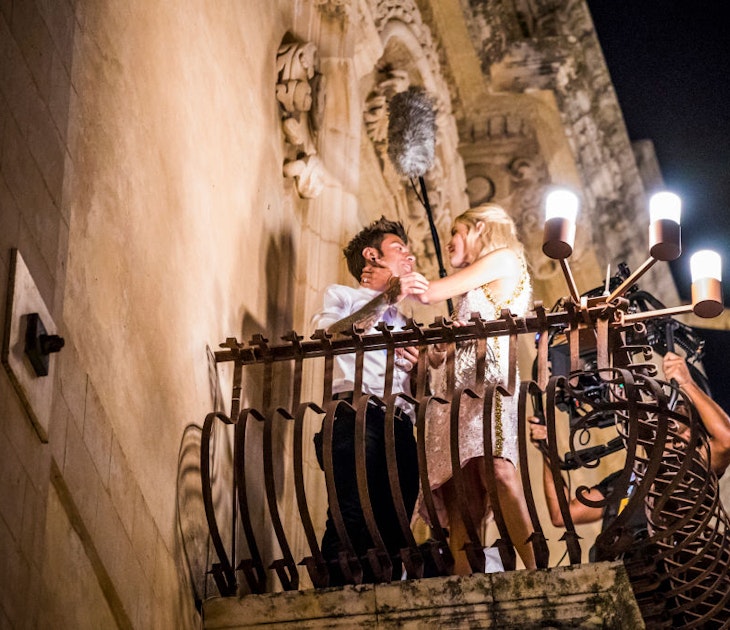
Jan 15, 2024 • 7 min read
They've got fame. Their weddings cost a fortune. But you'll fall in love with the destinations they've picked to tie the knot.

Oct 20, 2022 • 5 min read

May 21, 2021 • 4 min read
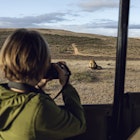
Feb 2, 2021 • 4 min read

Oct 6, 2020 • 2 min read

Sep 3, 2020 • 2 min read

Aug 25, 2020 • 2 min read

Aug 7, 2020 • 7 min read

Mar 1, 2020 • 5 min read

Feb 6, 2020 • 5 min read

The World on my Necklace
A Travel Blog by Katie Chavez
The Essential Slow Travel Guide For 2024
This post may contain affiliate links. If you make a purchase through an affiliate link, I will earn a commission at no extra cost to you. Thanks for your support.
Check out this simple slow travel guide to help get you started on your slow travel journey…
Are you already thinking about your 2024 holiday plans? Before you book anything, consider whether slow travel could be the way to go. It’s the latest travel trend; one that’s rapidly growing in popularity. And it may just change the way you think about going on holiday for good.
The cost-of-living crisis, climate emergency, and the scourge of “ overtourism ” – there are many good reasons for hitting the reset button on our travel habits. Slow travel is one such antidote. So, how can you go about taking this more tranquil approach to traveling?
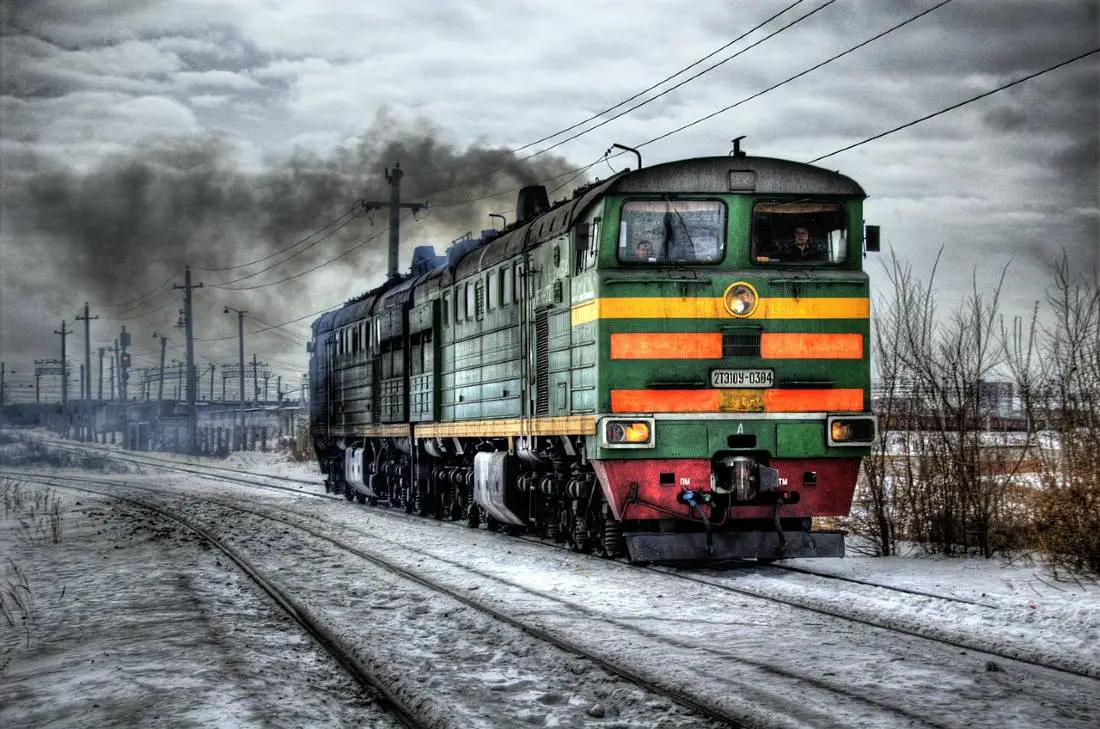
How To Embrace Slow Travel: A Slow Travel Guide
Limit your locations.
We’ve all heard of those “30 countries before 30” or “ultimate travel bucket list” challenges. It’s an attitude that puts pressure on tourists to pack as much into a holiday as possible. And at the same time, those popular destinations are straining to cope under the weight of so many people coming to visit.
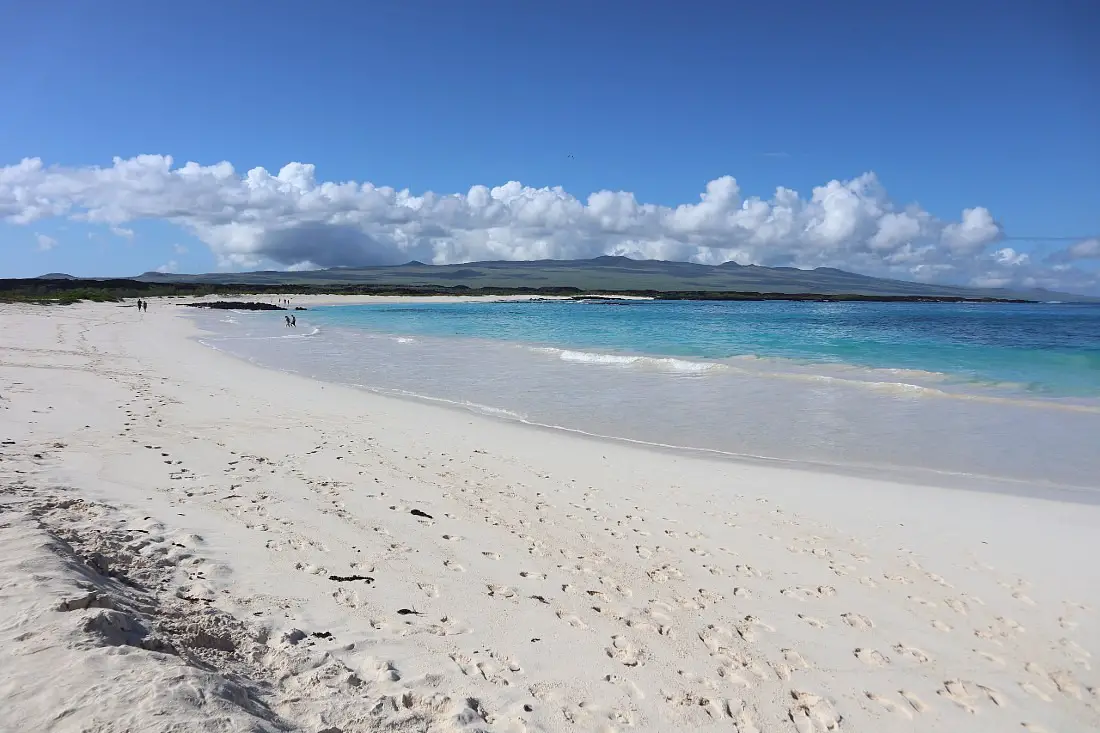
Instead, adopt a mindset that scales back the number of places you’ll visit.
Don’t scratch at the surface of five, six, or seven destinations. Take the time to get to know one or two places intimately. Get off the beaten track and indulge in the local culture. There are so many incredible offbeat destinations you should consider like these offbeat West Coast National Parks and these offbeat islands .
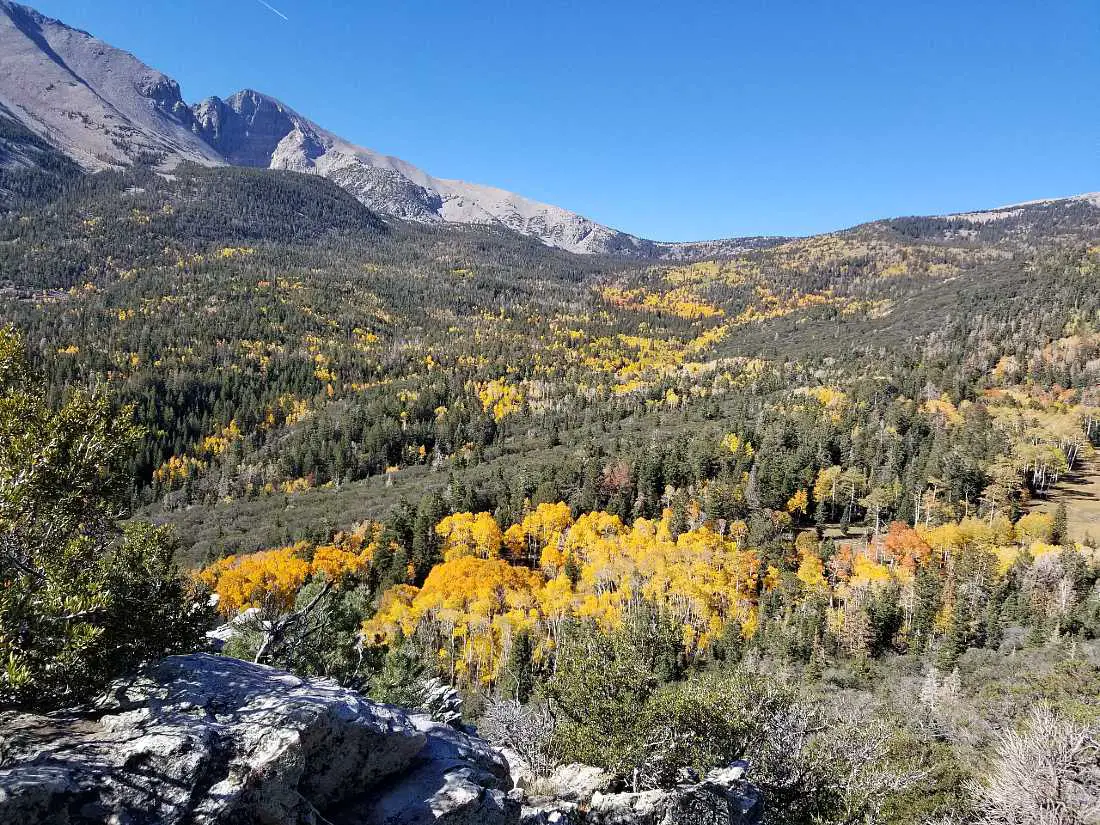
Drop the Bucket List
It can be tempting to draw up a bucket list covering multiple experiences and destinations, but sometimes with these lists, you end up rushing around and don’t really see the forest for the trees.
Your vacation shouldn’t be exhausting, you need to give yourself time to just be in a place, to soak it all up, rather than just rushing around to tick things off your bucket list.
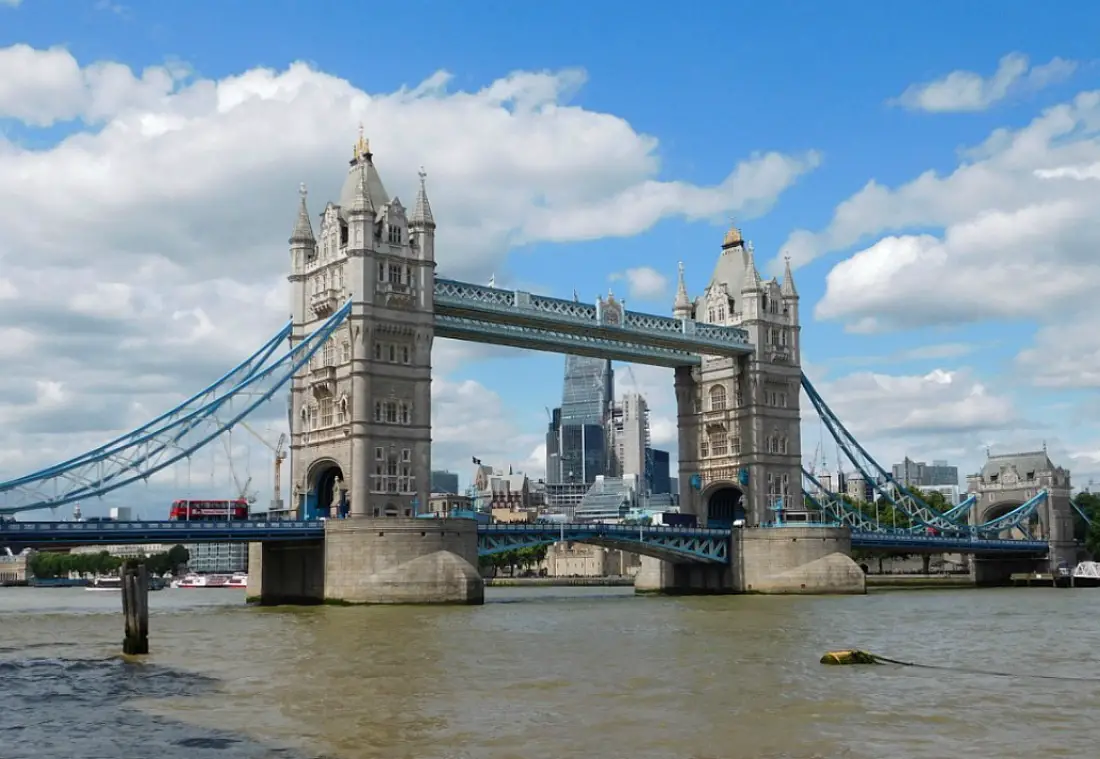
Don’t put so much pressure on yourself. Have a few things you want to do in a place but stay longer and give yourself time to enjoy just being there, to experience the culture, to walk around aimlessly. The days when you don’t have any plans often end up being the most rewarding and memorable.
Explore More on Foot
Roads and railways can be an effective means of getting from A to B – or for exploring a place in detail. Even better, however, is swapping cars and carriages for bikes and hikes.
After all, it’s easier to get much closer to nature and breathtaking scenery by using a less-invasive method of getting around. It’s a form of travel that’s on your own terms at all times too.
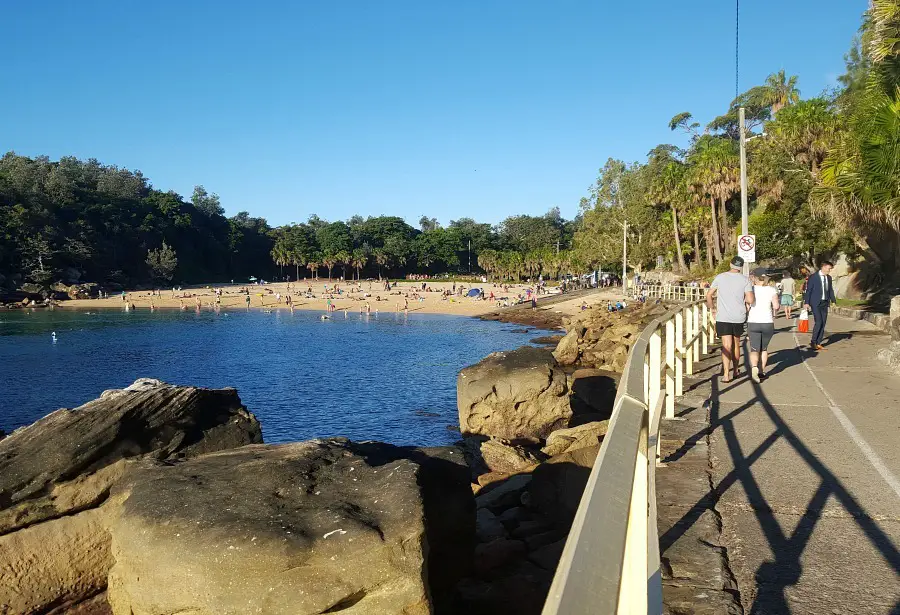
In addition, hiking and biking are effective ways to support local communities who don’t live in tourist areas – swapping hotels for homestays and chain restaurants for native cuisine.
Take To the Sea
Going off-grid can be great for your emotional well-being. Few places are better for doing it than on the water – embracing the gentle swish of the waves. It also lets you explore a coastline like never before. It could be on a stand-up paddleboard, in a kayak, or aboard a boat.
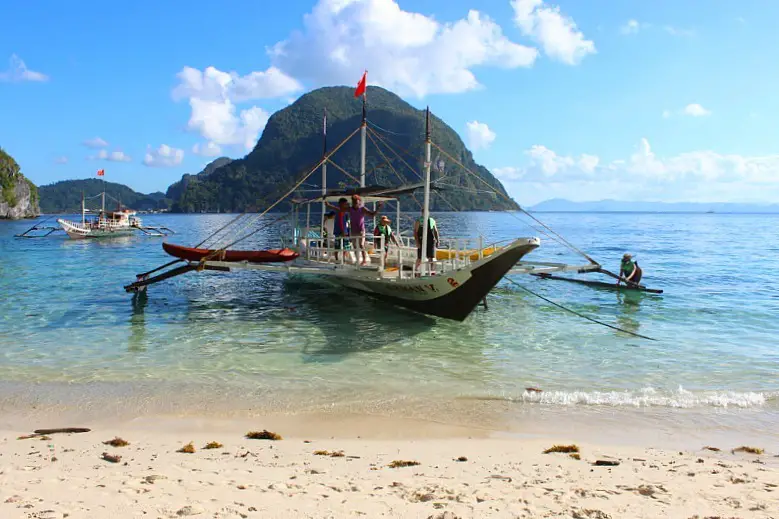
If you do take to the water, always be aware of the risks and sailing conditions – not least when on the open sea. Take care to watch the weather, consider protecting your vessel with a comprehensive boat insurance policy , and go out with guides if you are unsure of the area.
However slow you plan to travel, safety comes first with water sports.
Make New Friendships
Building new bonds with like-minded travelers and local communities is one of the ultimate joys of slow travel. We are, after all, social creatures. Even tiny interactions with others are hugely beneficial to well-being, so why not make the effort to talk to locals?
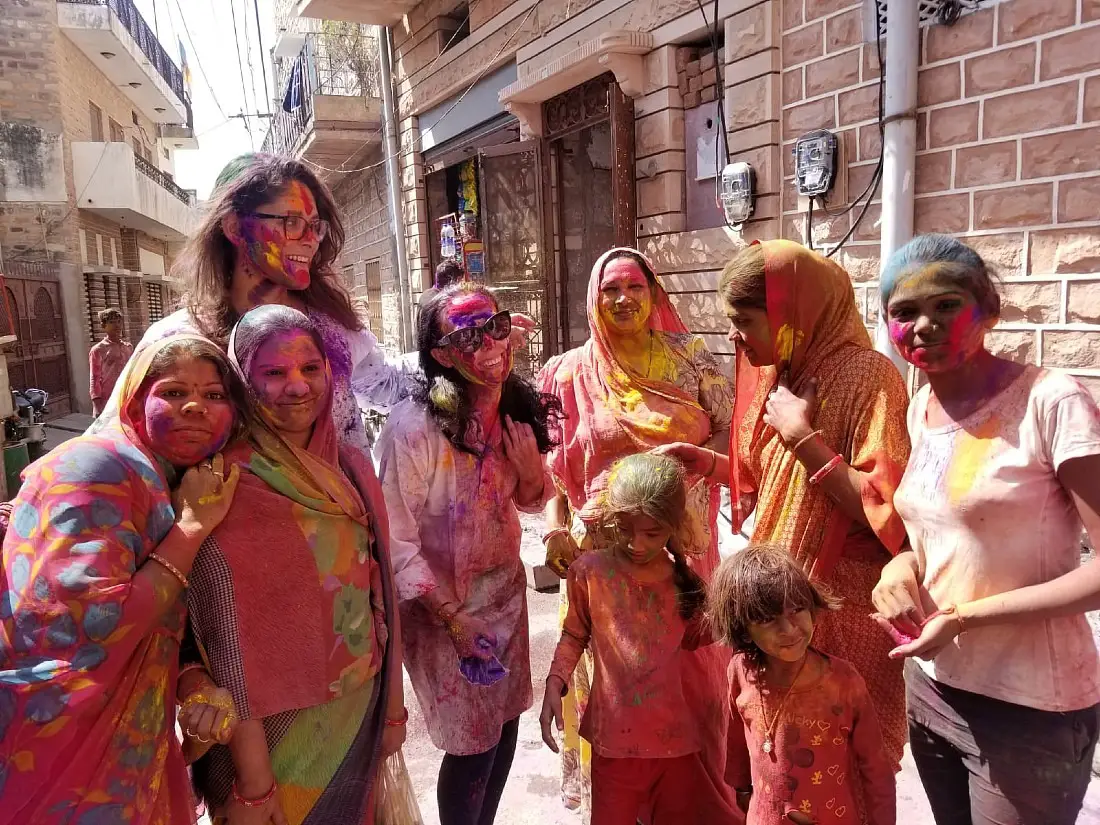
You may not be a master of the language, but just a little effort can go a long way to being appreciated. By creating new relationships, you have the chance to learn about new cultures. Not only that, but it can open up a world of cuisine, traditions, and experiences you’d never known existed.
Support Local Businesses
As you are traveling slower, you will have more time to explore local businesses during your travels. Find your favorite cafe, frequent your local market, and buy local clothes from an independently-owned boutique. This is all part of slow travel and you are also making sustainable and responsible travel choices.
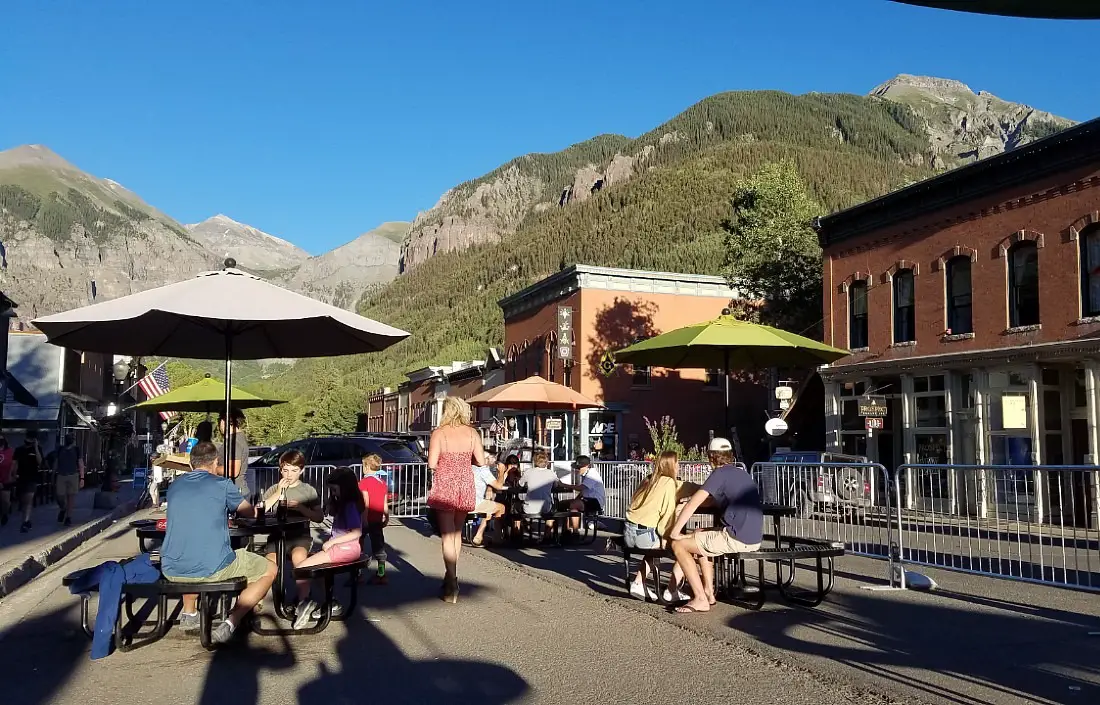
These simple tips in this slow travel guide will get you started on the way to an enriching slow travel vacation. And I think once you experience slow travel, you may never go back to how you traveled before. It is the future of travel.
If you enjoyed this post, check out some of my other travel tips:
- 21 Best Tips To Help You Become an Eco-Traveller
- Top Budget Travel Tips For Saving Money While Traveling
- How to Become a Housesitter: 10 Best Housesitting Tips
- Ultimate Lightweight Annapurna Circuit Packing List
- 10 Best Carry-on Packing Hacks for Stylish Travel
- How to Live an Amazing Life When You’re Not Traveling
- How I Save to Travel: Easy Money-Saving Tips
1 Comment on The Essential Slow Travel Guide For 2024
Thank you for sharing this enlightening guide. It has certainly inspired me to approach my future travels with a newfound sense of intention and mindfulness.
Leave a Reply Cancel reply
Your email address will not be published. Required fields are marked *
This site uses Akismet to reduce spam. Learn how your comment data is processed .
- Skip to primary sidebar
- Skip to content
- Skip to footer

My Five Acres
Make Travel Truly Transformational
15 Reasons to Travel Slowly + 10 Tips on How to Do It!
Do you want to travel slowly? Or are you just curious about what slow travel is? Fast travel can be stressful and exhausting, but slow travel has the power to transform . Read our slow travel guide to find out why you should try travelling slowly and get tips on how to do it.
What’s in our guide to travelling slowly?
As full-time travellers, sometimes we travel slowly, sometimes we travel fast. When Stephen’s yoga teaching schedule is in full swing, there are times when we have to be in a new city every weekend.
Fast travel is stressful, exhausting, and soul destroying.

That’s why, when our schedule is our own, we slow down as much as possible. We book a place and stay for a week or more. Or we rent bicycles and move from place to place at 15 km per hour.
Our days of leisurely travel remind us why we started travelling in the first place. These are the moments we live for — and the ones we will remember for the rest of our lives.
If you want travel to be truly transformational try travelling slowly.
If you want to become a slow traveler, read on for our top…
15 Reasons to Travel Slowly + 10 Slow Travel Tips
Get More from Your Travels Grab our 63 tips for a truly transformational trip , our guide to eco-travel and our tips on being a greener traveller .
What is Slow Travel?
Why people travel too fast.
We meet a lot of people when we travel and, naturally, the conversation turns towards where they’ve been and where they’re going during their travels.
It usually goes something like this:
Us: So, where were you before this? Traveller: Well, we started in Paris, then flew to Rome, Amsterdam, London, Venice, and now we’re here. Us: Oh wow, how long have you been travelling? Traveller: 10 days. Us: [Silence as we nod slowly, trying not to let the shock and dismay show on our faces.]
It’s no mystery as to why people do this to themselves. Many feel that this trip to Europe or Asia or America is once-in-a-lifetime. If they don’t see it ALL now, they never will.
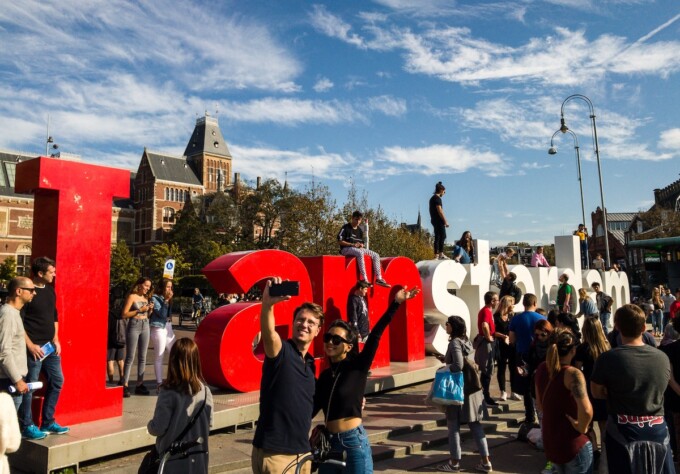
First of all, that’s just not true. Most of us, as long as we make travel a priority in our lives, will get to see more of the world than we think.
Second, if it is your only chance to travel, do you really want to spend the whole time rushing from place to place, never really seeing anything? Do you want to be so focussed on the next destination, the next experience, that you forget to enjoy the moment you’re in?
One of my favourite novelists puts it this way:
We residents sometimes pity you poor tourists not a little—handed about like a parcel of goods from Venice to Florence, from Florence to Rome, living herded together in pensions or hotels, quite unconscious of anything that is outside Baedeker, their one anxiety to get ‘done’ or ‘through’ and go on somewhere else. The result is, they mix up towns, rivers, palaces in one inextricable whirl. E.M. Forster, A Room with a View
This style of travel, where tourists see everything but absorb nothing, is the antithesis of slow travel. And it’s becoming increasingly common.
In our Instagram world, most people only spend as long in a place as it takes to get the perfect shot, then it’s on to the next sight without ever stopping to appreciate or understand what they’ve just seen.
So what is slow travel?
There’s no single definition of slow travel — and you don’t need a long vacation to try it. You can travel slowly for a weekend, a week, or take years — it’s up to you.
More than anything, slow travel is a way of thinking about travel that prioritizes immersion and experience over sights and tourist attractions. It’s a preference for sinking your teeth into the culture, rather than following the guidebook blindly.
Slow travel gives you the chance to learn not only about the culture you’re visiting, but about yourself as well.
Done right, travelling slowly has the power to transform your life.
Why Travel Slowly?
1. travel slowly to save money.
Not only is slow travel better (at least we think so), it’s cheaper!
First, slow travel helps you save on transportation costs, often the biggest travel expense. Accommodation can also be cheaper because you can avoid booking big chain hotels that are usually right next touristy attractions. Instead, stay further out to experience more local life at cheaper prices.
Slow travel also helps you save on food. You’ll have time to explore local restaurants and avoid the tourist traps that charge more for less.
2. Travel Slowly to Save Time
If you just have a short break it might seem smart to travel faster, packing as many places in as you can. But the flipside is, whe you travel quickly, you waste a ton of time in the act of travelling. Transferring to and from the airport, sitting on trains and busses, checking in and out of hotels, queuing up for attractions and tickets…
All of this time could be spent relaxing and absorbing a new culture.

3. Travel Slowly to Save Energy
Have you ever needed a vacation from your vacation? We’ve been there, trust us!
If you pack every minute of your itinerary with a different activity or sight, you’ll be exhausted by the end of each day. Pile a week or two of busy days on top of each other and, by the time you get home, you’ll need a week off to recover.
Travelling slowly gives you time to sleep in, take a nap in the afternoon, or just sit sipping coffee while the world goes by.
Slow travel gives you time to relax — and isn’t that what a vacation is really for?
4. Travel Slowly to Save the Planet
Airplanes suck (and not just because they treat you like cattle). Planes are extremely destructive to the planet — and they’re my least favourite thing about our travel lifestyle.
If you can take a train or bus to reach your destination, definitely do it, even if it takes longer. And if you have to fly to get there, don’t compound the problem by taking a lot of short hop flights during your trip.
Overland travel, by bus or train, will help decrease the environmental impact of your trip.
Staying in homestays, apartments, or small hotels, which is easier if you are travelling slowly, also reduces your impact, since these places tend to be more eco-friendly and less wasteful than big hotel chains.
5. Slow Travel Helps you Avoid Tourist Crowds
One of the biggest bonuses of slowing down your travels is getting away from other tourists!
On a slow trip you’ll have time to explore off-the-beaten track places and destinations. And when you do choose to visit the big sights, like the Sistine Chapel or the Louvre, you can choose a day and time when crowds are thinner. You’ll avoid the queues and have more time to spend in a staring contest with the Mona Lisa!

6. Make a Bigger Impact
This is one of our favourite things about slow travel. Fast travellers book their hotels for proximity to the biggest sights, and these hotels usually belong to international conglomerates.
When you travel slowly, you are more likely to stay in independently owned accommodation, like a family Airbnb or an out-of-the-way homestay. This means your travel money makes its way directly into the local economy and benefits local people.
7. Connect with People
When you choose to stay in locally owned accommodation, you’ll have contact with locals (the hotel owners) from the second you arrive. We’ve had amazing, enlightening conversations over dinner or coffee with our hosts around the world.
They are also able to recommend independent drivers, restaurants, and other attractions — you might be the only tourist there! Locals are naturally curious about a tourist who manages to find their favourite haunts, so don’t be afraid to strike up a conversation and learn what it’s really like to live in a destination.
8. Connect with the Culture
You’ve heard the expression “going native”, right? OK, it probably has racist origins, and it can be used in a derogatory sense. But we’re not ashamed to adapt to foreign cultures.
Staying in one place a little longer lets us learn all the similarities and wonderful differences between our culture and the one we’re living in. We are happy to adopt aspects of the local culture that seem better than how we do it back home.
9. Connect with Yourself
Not every moment of your slow trip will be spent partying with the locals. Perhaps our very favourite aspect of slow travel is that it gives you time to absorb what you’ve experienced.
Instead of seeing a bunch of stuff back to back to back, you’ll have time in between experiences to consider them, contemplate, and decide what they mean to you. As you learn more about the world, these slow reflective moments will teach you more about yourself, too.

10. You’ll See More Travelling Slowly
This one sounds counter-intuitive. How will you see more if you’re moving around less? Well, what we mean is, you’ll see more of your destination and less of the airports, train stations, busses, trains, and taxis.
Travelling quickly often means taking long journeys between places — all you’ll remember is the tarmac flashing by outside your bus window. With slow travel, you might tick less off your bucket list, but can go deeper in one place, allowing yourself to follow the unexpected twists and turns of a slow journey.
11. Slow Travel is Where Adventure Lives
When you have time to follow intriguing pathways, duck down twisting alleyways, or say yes to unexpected offers, something incredible happens — your holiday turns into an adventure!
We’ve been invited into stranger’s homes for coffee, taken on hikes in incredible hidden places, and found beaches that only locals know about.
The world is full of hidden marvels and when you slow down you have a chance to discover them.

12. You’ll Make More Lasting Memories
Some itineraries are so jam-packed that there’s no time so sit back and absorb the experiences. When we don’t have time to think, our brains don’t have a chance to make permanent memories. One sight or city pushes the memories from the last place out of your mind.
(I think that’s why people take selfies at iconic places. It helps us remember places that we didn’t really experience at the time.)
When you get home after a period of fast travel, the trip might seem hazy, like a dream, each memory indistinct. When you slow down, you give your brain more time to form complete memories, and you’ll be able to call up the scents, colours, and feeling you had for years to come.
13. You’ll Learn to Live with Less
If you take a longer trip and travel slowly, you might just start to realize an important truth.
You don’t need all the gadgets, gizmos and tchotchkes you have at home. When you’re out in the world with just what you can fit in your suitcase, you start to realize that it is more than enough.
You might find a sudden urge to declutter, minimize, and downsize when you get back home.
14. Travel Slowly to be Happier
Modern life tends to prioritize being busy over being happy. We rush from here to there, every moment of the day scheduled to the last second, until we fall into bed, exhausted.
(That’s exactly how most people travel, too.)
Travelling slowly is a great way to prime you for living more slowly when you get back home. We hope you’ll realize that the most valuable moments on your trip were the slow, silent moments — and start to build those into your regular life, as well.
Once you do that, you’ll make room for happiness to grow.

15. Travel Slowly to Change Your Life
If we believed the glossy marketing in travel magazines and on billboards, it’s the grand (expensive) travel experiences that change you. We’ve found the opposite to be true. The big experiences and sights, shared with hundreds of other tourists, are interesting enough. But there’s nothing transformational about wrestling 100 other tourists for your chance to glimpse the Mona Lisa.
Wandering down a quite alleyway, sipping espresso in a cozy cafe, hiking up a peak, cycling the outskirts of a busy city… these moments make travel special.
The moments when it’s just you and your sense of adventure, are the moments that tug at your heart, feed your soul, and call on you to transform into the person you’ve always wanted to be.
How to Travel Slowly — 10 Tips to Change the Way you Travel
1. plan to not plan.
Whether you’ve got two weeks or two months, it’s easy to let travel planning take over your life. Before our big bike trip, I spent hours with a map, planning our exact route, what sights we would see, and where we would stay. It only took about 24 hours before the plan was shot and were winging it.
It’s hilarious when I think about it now, but what a waste of time!
Travelling slowly means leaving the moment-by-moment plan far behind and letting the world take you where it wants you to go.
So for your next trip, plan the bare outlines of your journey, and let the blanks fill themselves in as you travel.
2. Don’t Fly
Sure, you might need to fly to get to the country or region you want to visit (if you don’t need to, don’t!). But from there, use only ground transportation, preferably busses and trains.
You don’t usually have to book ground transport ahead of time, so it’s far easier to change your plans on the spur of the moment.
Ground transportation is also more efficient, better for the environment, and allows you to actually see the place you’ve come so far to visit.

3. Rent a Room in an Apartment
If you really want to become part of local life, rent a room in an Airbnb apartment. No, don’t rent a whole apartment — get a room in someone else’s house. If you find a good one, you’ll get a chance to chat with your host, or maybe even share a meal, and learn about what life is like from their point of view.
4. Try Housesitting
If you really want to “try on” somebody else’s life, housesitting is the perfect way to do it. We have experienced what it’s like to be an expat in Hanoi, Brno, Brighton, Casablanca, Riga, and lots of other places around the world. Housesitting is brilliant, too, because it’s free accommodation (woohoo!) and if you’re lucky, you’ll get a fluffy pet to keep you company.
We recommend TrustedHousesitters to find your next house sitting gig.
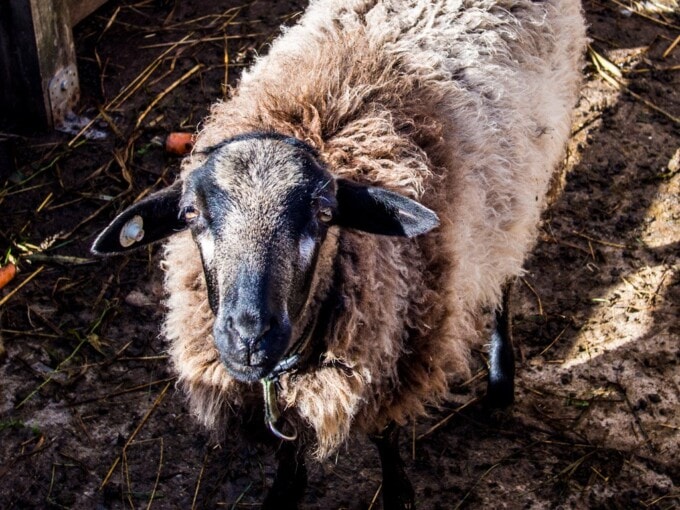
5. Make Time to do Nothing
For some of us, doing nothing sounds like heaven. For others, it’s the worst punishment ever. If you’re in the second category, I suggest you deliberately schedule “nothing” time into your travel calendar. But don’t worry about being bored. Doing nothing in a strange place is the quickest route to adventure that we’ve ever found.
6. Learn a Few Words in the Local Language
Since you’ll be travelling slowly, you can take a little time to learn a few words of the local language.
Start with “hello” and “thank you”. Then work you way up to “how are you?”, “what’s your name?”, and other phrases of small talk. Even if that’s all you can say, it’s worth it to see the expressions of delight on local’s faces when you actually adress them in their own language.
7. Get Lost
Wander wander wander. If we have one rule for slow travel, this is it. Put down your map, people, and just go!
The “do nothing” time you built in your schedule is the perfect time to wander. Keep your eyes open, observe the people, the buildings, and the life around you.
Once you’ve had enough wandering for the day, pull out your smart phone and use your favourite map app to get unlost.
8. Take a Tour
We used to think that tours were only for fast travellers or travellers who didn’t know what they were doing. Now, we realize that good tours are like your backstage pass to a destination!
A good guide will open doors that are usually not accessible to tourists. Of course, you want to avoid big group tours that chug you from place to place in a giant, smelly bus. Look for small group tours with companies who focus on independent-style travel. These types of tours can reveal facets of your destination that you would never experience on your own.
For independent and transformational small group tours, we love Intrepid .

9. Try a Cycle Tour
Cycle touring is not for everyone, obviously, but if you’ve ever felt the sheer joy of hopping on a bike, we highly encourage you to try a cycle tour.
If it’s your first time travelling by bike, we recommend joining a short multi-day tour. That way, everything is provided for you, you’ll have all the right gear, and a guide who can show you the ropes.
I don’t think it will take long for you to discover the indescribable joy of travelling by bike — our favourite method of slow travel.
If you want to get out on a bike anywhere in Asia, we recommend Grasshopper Adventures .
(Related: Read Jane’s post The Truth About Cycle Touring to see if it’s right for you) →
10. Book a Retreat
If you really want to make your slow travels transformational, a retreat is a good option. You can spend your entire trip on a retreat, or just dedicate a few days of a longer trip to a retreat.
Many retreats include yoga, others teach you about nutrition or cooking, while still others focus on your mental wellbeing and include lots of massages! Whatever style you choose, a retreat will give you vital time to slow down, peel away the busy-ness of life, and remember who you are and what makes you happy.
If you’re looking for a retreat, you’ll find a great selection on BookRetreats .
So, are you ready to try to travel slowly? Can you let go of your guidebook, your minute-by-minute plans, and your checklists and just let yourself slip into the local lifestyle? Where will you slow travel to next?
♥ Happy transformational travels, Jane & Stephen
We’re not going to lie, it takes a LOT of work to create travel guides like this. But it’s easy to help us out! If you book or buy something using one of our personal links in this post, we’ll earn a small fee at no extra cost to you. Of course, we would never recommend anything we didn’t 100% believe in! Huge thanks in advance! –S&J

Share With Your Friends
Get 101 travel tips.
Get our free ebook, 101 Travel Tips for Mindful Adventurers. It’s packed with our best tips for saving money, planning for travel, booking flights and accommodation, traveling sustainably, and staying on the road for longer! We ask for your email address so we can send you an email about once every month with our latest travel tips, destination advice, and personal stories about life on the road.
Thanks for joining My Five Acres.
Oops. Something went wrong. Please try again.
No spam ever. Your privacy is protected!
About Jane Mountain
Hi, I'm Jane, founder and chief blogger on My Five Acres. I've lived in six countries and have camped, biked, trekked, kayaked, and explored in 50! At My Five Acres, our mission is to inspire you to live your most adventurous life and help you to travel more and more mindfully.
Get Your Copy of How to Transform Your Life Through Travel!

About My Five Acres
Eight years ago, we sold our house and quit our jobs. Now we travel full-time and help others transform through travel.
We're here to help you find life-changing travel experiences that widen your perspective, challenge your beliefs, and shake you awake into your own life.
Find out how →
Useful Links
- Our Favourite Travel Tools
- Our Latest Blog Posts
- Press & Awards
- Privacy Policy & Disclaimers
Affiliate Disclosure
Search my five acres.
Take control of your money! Save, budget and navigate your finances easier with AARP Money Map.
AARP daily Crossword Puzzle
Hotels with AARP discounts
Life Insurance
AARP Dental Insurance Plans
AARP MEMBERSHIP
AARP Membership — $12 for your first year when you sign up for Automatic Renewal
Get instant access to members-only products, hundreds of discounts, a free second membership, and a subscription to AARP the Magazine. Find how much you can save in a year with a membership. Learn more.
- right_container
Work & Jobs
Social Security
AARP en Español
- Membership & Benefits
- AARP Rewards
- AARP Rewards %{points}%
Conditions & Treatments
Drugs & Supplements
Health Care & Coverage
Health Benefits

AARP Hearing Center
Advice on Tinnitus and Hearing Loss

Get Happier
Creating Social Connections

Brain Health Resources
Tools and Explainers on Brain Health

Your Health
8 Major Health Risks for People 50+
Scams & Fraud
Personal Finance
Money Benefits

View and Report Scams in Your Area

AARP Foundation Tax-Aide
Free Tax Preparation Assistance

AARP Money Map
Get Your Finances Back on Track

How to Protect What You Collect
Small Business
Age Discrimination

Flexible Work
Freelance Jobs You Can Do From Home

AARP Skills Builder
Online Courses to Boost Your Career

31 Great Ways to Boost Your Career

ON-DEMAND WEBINARS
Tips to Enhance Your Job Search

Get More out of Your Benefits

When to Start Taking Social Security

10 Top Social Security FAQs

Social Security Benefits Calculator

Medicare Made Easy
Original vs. Medicare Advantage

Enrollment Guide
Step-by-Step Tool for First-Timers

Prescription Drugs
9 Biggest Changes Under New Rx Law

Medicare FAQs
Quick Answers to Your Top Questions
Care at Home
Financial & Legal
Life Balance

LONG-TERM CARE
Understanding Basics of LTC Insurance

State Guides
Assistance and Services in Your Area

Prepare to Care Guides
How to Develop a Caregiving Plan

End of Life
How to Cope With Grief, Loss
Recently Played
Word & Trivia
Atari® & Retro
Members Only
Staying Sharp
Mobile Apps
More About Games

Right Again! Trivia

Right Again! Trivia – Sports

Atari® Video Games

Throwback Thursday Crossword
Travel Tips
Vacation Ideas
Destinations
Travel Benefits

Outdoor Vacation Ideas
Camping Vacations

Plan Ahead for Summer Travel

AARP National Park Guide
Discover Canyonlands National Park

History & Culture
8 Amazing American Pilgrimages
Entertainment & Style
Family & Relationships
Personal Tech
Home & Living
Celebrities
Beauty & Style

Movies for Grownups
Summer Movie Preview

Jon Bon Jovi’s Long Journey Back

Looking Back
50 World Changers Turning 50

Sex & Dating
Spice Up Your Love Life

Friends & Family
How to Host a Fabulous Dessert Party

Home Technology
Caregiver’s Guide to Smart Home Tech

Virtual Community Center
Join Free Tech Help Events

Create a Hygge Haven

Soups to Comfort Your Soul

AARP Solves 25 of Your Problems
Driver Safety
Maintenance & Safety
Trends & Technology

AARP Smart Guide
How to Clean Your Car

We Need To Talk
Assess Your Loved One's Driving Skills

AARP Smart Driver Course

Building Resilience in Difficult Times

Tips for Finding Your Calm

Weight Loss After 50 Challenge

Cautionary Tales of Today's Biggest Scams

7 Top Podcasts for Armchair Travelers

Jean Chatzky: ‘Closing the Savings Gap’

Quick Digest of Today's Top News

AARP Top Tips for Navigating Life

Get Moving With Our Workout Series
You are now leaving AARP.org and going to a website that is not operated by AARP. A different privacy policy and terms of service will apply.
Go to Series Main Page
Why You Should Consider Slow Travel for Your Next Trip
Traveling deeply rather than widely brings special pleasures — and fewer hassles.
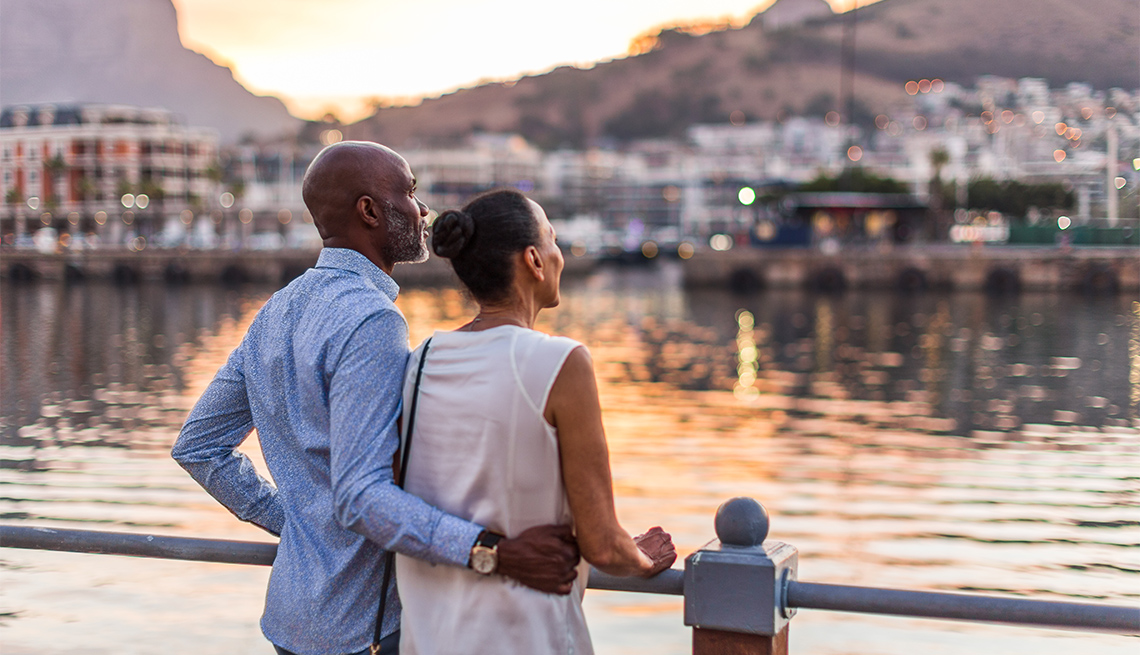
Gasping for breath, I painstakingly pedaled my bike up the steep, winding mountain road, elevation well over a mile above sea level. I was pushing hard to reach Logan Pass, the stunning high point of the famed Going to the Sun Road in Glacier National Park. The sun beat down on my body, the breaths came short, my legs burned after 25 miles on the road, but I was almost there. Then a voice shouted: “Why ... are ... you ... doing ... this!?”
A woman leaning out the window of a passing car shouted her question, not unfriendly, just inquisitive, wondering why in the world I was working so hard when I could have just driven up to the pass. She had a valid point, one that gets at the very purpose of leisure travel: Is the goal of traveling to see as much as you can and to get from place to place as quickly as possible? Or should travel be more about appreciating the journey itself, and diving deep into the destination once you arrive?

Get instant access to members-only products and hundreds of discounts, a free second membership, and a subscription to AARP the Magazine. Find out how much you could save in a year with a membership. Learn more.
For those considering the latter, a slow travel trip may be right for you, particularly as this style of touring expands post-pandemic. “We’re seeing about triple the number of bookings (in 2023) over 2019,” said David Loy, CEO of the slow travel specialist culinary tour operator Epitourean, in an email to AARP.
What is slow travel?
Slow travel is an offshoot of the slow food movement that began in Italy in the late 1980s, a response to fast-food franchises running rampant in the country. The slow food philosophy encourages guests to relax and appreciate the overall experience of dining, rather than rushing through a restaurant to maximize calories and minimize time.
Similarly, with slow travel, the goal is not to quickly load up on passport stamps for bragging rights, or check off bucket list destinations like they were part of a drive-thru menu. Instead, slow travel encourages you to see more by moving less, seeking depth and breadth of experience rather than mileage. “We encourage our guests to slow down to truly see the world,” says John Lansdell, product development manager at Butterfield and Robinson, a Canada-based travel company specializing in slow travel, often by bike or on foot. “But it’s more than just moving slower,” he adds. “It’s about interacting with the place while you’re there.”
To that point, guided slow travel trips often include experiences like cooking or language lessons, with longer durations spent in one destination to allow for more in-depth activities. And most travelers are looking for those genuine experiences: 85 percent of respondents to the American Express 2023 Travel Trends Survey agree that they want to visit a place where they “can truly experience the local culture.”
You can also enjoy slow travel on your own, allowing time to meet locals in serendipitous moments as you stop and have a chat at a café or in a village square. “Anyone can carve themselves a slow travel itinerary no matter where they visit,” says Lori Sorrentino, 59, who lives in Naples, Florida, and writes a slow travel blog, travlinmad.com , with her husband, Angelo. According to Sorrentino, “It’s a mindset. Slow travel is a matter of resisting the temptation to explore an entire country in eight days, and immersing yourself in one place instead, getting to know the locals, talking about their families, their communities, their traditions.”
ARTICLE CONTINUES AFTER ADVERTISEMENT
Why slow travel is particularly appealing now
“Slow travel is an indication of the times we’re in,” says Misty Belles, vice president of public relations for the Virtuoso travel conglomerate, in an interview with AARP. “Before [the pandemic], it was a lot of collecting of passport stamps, but now people seem to have a desire to slow down and appreciate what’s around them more. Maybe it’s something people have learned while being tied close to home.”
These days, many travelers are choosing to drop anchor at a single location and explore it in depth, using a hub-and-spoke model like a home rental accompanied with multiple short regional excursions.
Recent information shows travelers are indeed lingering. Virtuoso says its network saw travelers increasing their average length of a single hotel stay by 63 percent in 2022 compared with 2020. When polled, nearly half of Virtuoso travelers said they plan to visit only one destination on their next trip.
Holland America Line
Up to $200 onboard credit on select cruises
“Slower and more immersive experiences in travel have grown in popularity,” the Travel Edge advisory network reported in 2022. “Not only are trips of 21 days or more more common, but travelers also seek more purposeful experiences during these trips. As a result, slow travel influences physical destination behaviors,” with visitors seeking more immersive local experiences in alternative locations.
Tour operator Explore Worldwide cited slow travel in their 2022 industry trend report, saying “Travelers have shown greater interest in longer, more immersive holidays that avoid over-touristed spots, explore at a gentler pace and really get under the skin of a destination.”
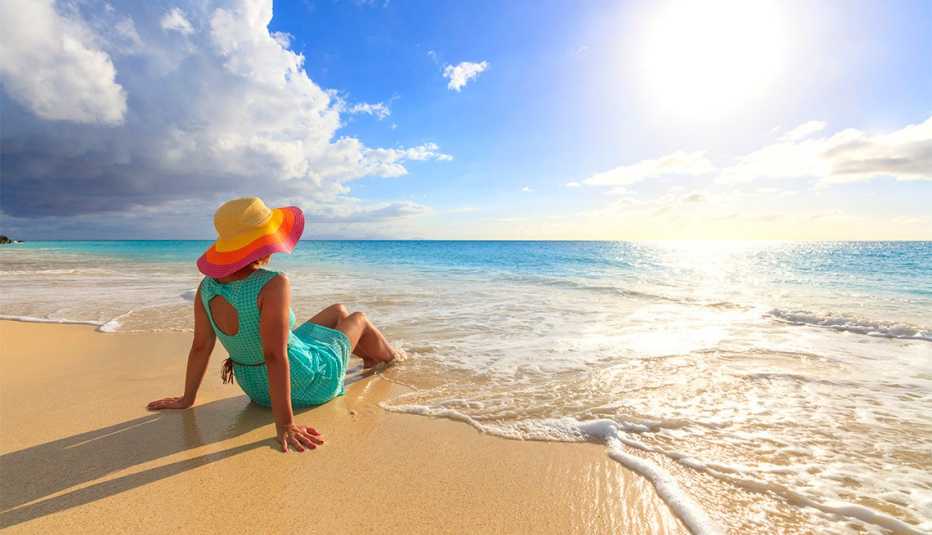
How to slow travel
Choosing a slower mode of travel is usually the first step of slow travel — often a literal step as you take a leisurely walking tour at a destination. Biking , as my trip in Glacier Park demonstrated, is a great way to gain a visceral feel for the landscape (as long as you stop and savor experiences along the way), combining a feeling of accomplishment and understanding along with the view. “Slow travel is about more than just getting the photo op,” says Butterfield’s Lansdell. “It’s about getting an education about a place.”
Bike Odyssey, an Australia-based tour company, has added a historical spin to slow travel, with cyclists pedaling the route of European military campaigns ranging from Hannibal’s route through the Alps to Patton’s World War II march to the Rhine. “On a bike you can really feel the terrain,” says Sam Wood, the company’s founder and director. “ You appreciate the challenge of attacking through the Alps, or the strategic advantage of invading on flat roads.”
But slow travel doesn’t have to be about suffering your way through a long slog. “We know the expression ‘An army marches with its stomach,’ so we make sure our guests get the best food on the journey, with luxury lodging at night,” Wood says. “Plus, with our average guest age being in the early 60s, we’ve incorporated e-bikes into our fleet, making these trips accessible to anyone.”
Walking tours have long been a popular slow travel option. Monica Valeri, from northern Italy’s Emilia Romagna Tourist Board, touts strolls along some of that region’s 19 pilgrimage routes. Among the benefits: “meeting with locals and discovering their traditions — including the thousand different food and wine variations that vary from town to town.” These pilgrimage walks are "great for seniors who have an interest in gaining a deeper understanding of culture, art, history, food and wine.”
Sorrentino suggests road trips for slow travelers, “because you’re forced to travel through the small towns, and anything that catches your eye, you can stop and explore. You end up seeing things that even locals may not know about.”
Where to slow travel
While Italy has long been a hub for slow travel, many other destinations can provide a similar variety of unique food, history, nature and cultural experiences based within a small region. Tour operators are increasing their slow travel offerings across Europe in particular.
Sweden is an up-and-coming slow travel destination, with many immersive experiences doable on a single trip including land and sea, urban and rural locations. Epitourean launched culinary tours there in 2019 “to experience firsthand why Sweden is called the ‘Edible Country,’ ” says Loy, the company CEO. He cited slow-travel favorites of local dining, shopping in food markets, taking cooking classes, joining fishermen on a “seafood safari” in local waters, and most importantly, partaking in and understanding the Swedish tradition of “fika,” the coffee-and-a-pastry-with-friends leisurely snacking ritual that embodies the spirit of the slow food and slow travel experience.
The slow-travel philosophy also encourages visitors to go beyond the most popular, fast-paced destinations. For Sweden this means escaping the capital of Stockholm to base a trip around the “second city” of Gothenburg, which local tourism officer Petra Gamerdinger describes as “the relaxed cool little sister of Stockholm.”
The slow-travel angle for visiting a city like Gothenburg is to not only explore the city at leisure, by munching your way through the Lindholmen Street Food Market, strolling around the Gunnebo Gardens, and puttering by electric boat through the medieval moat and canals, but to use the city as a base for exploring in depth the variety of local regional experiences from “shoreline to timberline,” as Loy describes it.
At the end of a weeklong immersive itinerary around a European "second city" like Gothenburg, you'll return home with much more enriching experiences and interesting stories to share than those tourists who checked off eight countries in seven days and returned only with a vague memory of short stops at packed museums and city squares.
Destinations in Mexico and the Caribbean are also increasingly popular slow travel destinations. Virtuoso’s Belles says pandemic-era near-shore remote-work opportunities exposed travelers to the benefit of booking extended stays in traditional resort destinations. With that knowledge, now “people are going beyond the usual ‘fly and flop’ vacation — they want to explore more of the area while they’re there, to get away from the beach and do more.”
But really, the destination is not as important as your attitude, slow travel’s proponents say.
“Anyone can be a slow traveler anywhere, even in their own town or city,” says Jenny De Witt, 51, who started a slow travel blog, jennyintransit.com , from her home in Florida in 2016 and is now (slowly) exploring France. “The best way to slow travel in your own town is to take a walk,” she adds. “Choose a new neighborhood or one that you don’t normally visit and make a point of going to a local shop there. Ask questions.” Most important? “Turn your phone off and be present.”
Editor's note: This article was originally published on January 14, 2022. It has been updated to reflect new information.
Bill Fink is an award-winning travel writer who has covered cultural travel for Lonely Planet , Frommer’ s, the San Francisco Chronicle and many other outlets.
More on Travel

6 Great Options for a Summer Trip That Celebrates American History
These cities say: ‘You are welcome here’

Plan Multi-generational Family Vacations Without the Stress
Big-group vacations are all the rage
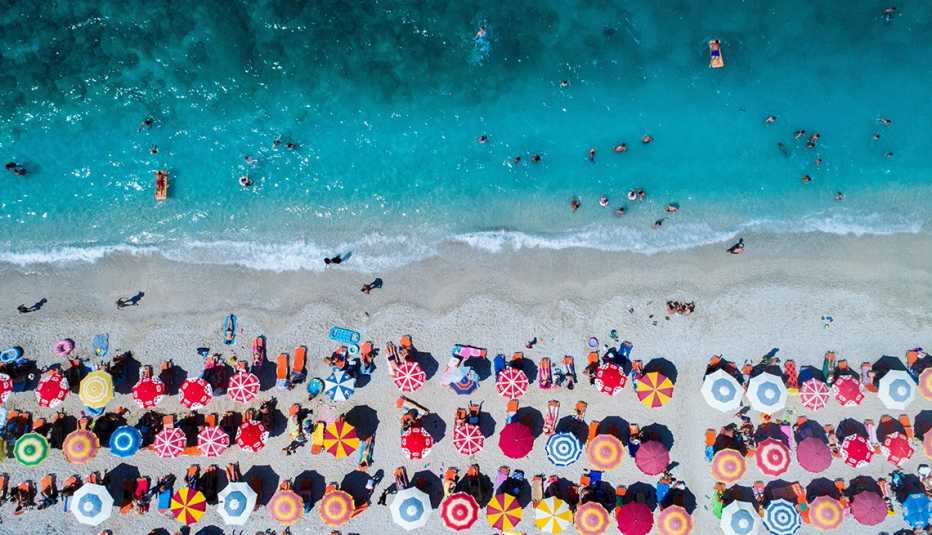
Plan Your Summer Vacation Now for Surprising Perks
Budget-friendly airfare and affordable rental cars are possible if you act now
Or Call: 1-800-675-4318
Enter a valid from location
Enter a valid to location
Enter a valid departing date
Enter a valid returning date
Age of children:
Child under 2 must either sit in laps or in seats:
+ Add Another Flight
Enter a valid destination location
Enter a valid checking in date
Enter a valid checking out date
Occupants of Room
Occupants of Room 1:
Occupants of Room 2:
Occupants of Room 3:
Occupants of Room 4:
Occupants of Room 5:
Occupants of Room 6:
Occupants of Room 7:
Occupants of Room 8:
Enter a valid date
You didn't specify child's age
There are children in room 1 without an adult
You didn't specify child's age for room 1
There are children in room 2 without an adult
You didn't specify child's age in room 2
There are children in room 3 without an adult
You didn't specify child's age in room 3
There are children in room 4 without an adult
You didn't specify child's age in room 4
There are children in room 5 without an adult
You didn't specify child's age in room 5
You have more than 6 people total
Please select a trip duration less than 28 days
There must be at least 1 traveler (age 12+) for each infant in a lap
Enter a valid From location
Enter a valid start date
Enter a valid drop location
Enter a valid drop off date
Select a valid to location
Select a month
Enter a valid going to location
Enter a valid from date
Enter a valid to date
AARP VALUE &
MEMBER BENEFITS

HX: Hurtigruten Expeditions
5% off cruise fares and a €100 per person onboard credit
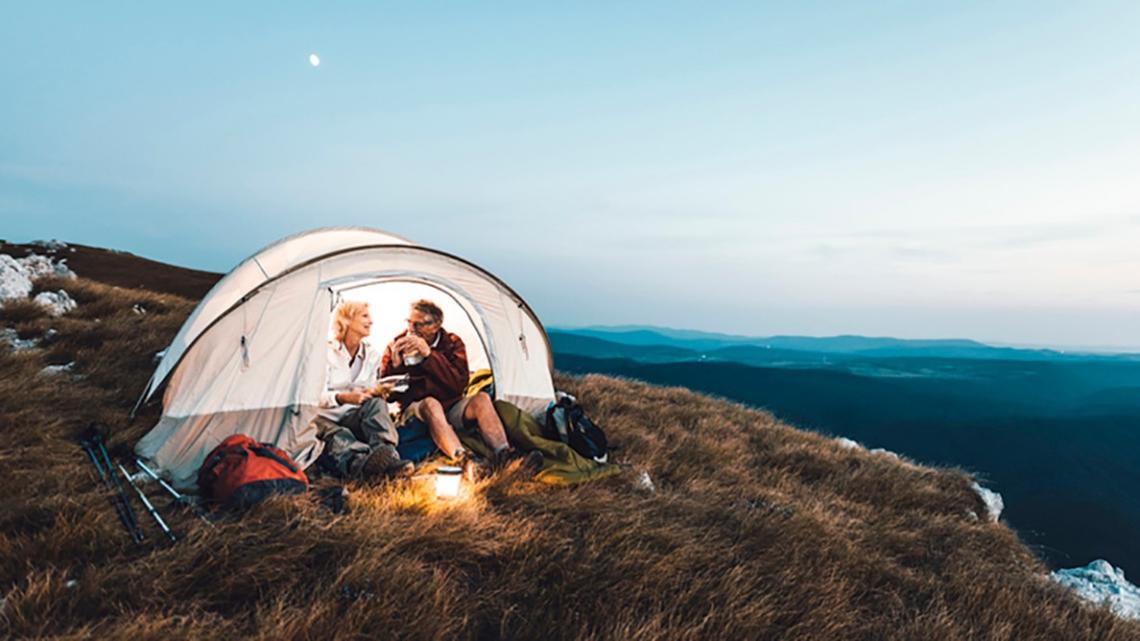
AARP Vacation Ideas
Ideas for every type of trip – from cruises to road trips

AARP Travel Center Powered by Expedia: Car Rentals
Up to 30% off select car rentals

AARP® Staying Sharp®
Activities, recipes, challenges and more with full access to AARP Staying Sharp®
SAVE MONEY WITH THESE LIMITED-TIME OFFERS

'Slow travel' is surging — but there's a secret to it
Holidays can often feel rushed, dashing to cram in as much as possible while wanting to feel adequately rested during that crucial time away.
In fact, it takes the average person three days to switch off , and the average trip length is just eight days. So, how does that match up? And is it possible to accommodate all our rest and relaxation needs?
Enter the ‘slowcation’ (AKA, ‘ slow travel ’), a trend encouraging tourists to take a slower, more meaningful approach to travel and incorporate more time to unwind and de-stress.
According to new research, 81% of Brits are using travel this summer to slow down and de-stress more than anything else. But in the same vein, 57% don’t think they could go away without their phone , while 50% couldn’t hack 24 hours without checking their social media.
That’s where ‘slow travel’ comes in, embracing switching off and detaching from everyday life, with Google searches for ‘slow travel trips’ having increased by 61% in the last three months alone. Likewise, the trend has been tagged almost 20,000 times on TikTok.
But ‘slow travel’ isn’t just about slowing your itinerary down – there’s a secret to mastering it.
What is a ‘slowcation’ or ‘slow travel’?
A ‘slowcation’ or ‘slow travel’ isn’t just about slowing down the journey: it also necessitates taking a different mindset.
‘Slow travel is more about a mindset as opposed to a pace of movement, it’s exploring somewhere on a deeper level, making space mentally and physically for things to happen spontaneously. For example, taking time to walk in nature, cycle through countryside, engage with the locals or taking a long-distance rail journey,’ Simon Lynch, Global Product Director at Scott Dunn Travel , explains.
What does ‘slow travel’ look like in 2024?
Train travel.
Not only is taking the train eco-friendly: it’s also the most obvious way to slow down a trip and embrace the ‘slow travel’ vibe.
‘Leisurely train travel is one of the best ways to experience ‘slow travel,’ allowing you to sit back and savour every moment with each stop of the route,’ Simon advises, noting that the company has seen triple the amount of bookings for train journeys between January and April this year compared to the same period in 2023.
‘A new wave of luxury rail itineraries has driven a thirst for cultural immersion, exploring the less-visited backroads of popular destinations.’
Likewise, the new figures reveal some of the most popular train journeys right now, which include the Belmond Andean Explorer in Peru, the first luxury sleeper train to travel across South America, alongside the Eastern and Oriental Express, connecting Singapore with Malaysia.
Adopting a ‘go with the flow’ approach
As Simon explains, ‘slow travel’ isn’t just about the time it takes to reach a destination: it’s also a mindset.
The research from Scott Dunn Travel also finds that Brits aren’t exploring as much as they used to, instead taking a fast-paced, pre-arranged approach to holidaying.
However, 30% reported that going on an excursion helps them to unwind on a trip and 31% said that mother nature also helps them to relax, proving the point that perhaps taking a ‘go with the flow’ approach might wield some benefit.
So, why not channel your spontaneous side the next time you go away? It could change the way you holiday forever.
Do you have a story to share?
Get in touch by emailing [email protected] .
For even more unmissable travel news, features and inspiration in your inbox each week, sign up to Metro's The Getaway newsletter

'Slow Travel' Might Be The Key To A Better Vacation. Here's What It Is.
Senior Reporter, HuffPost Life
In the rush of day-to-day life, we don’t always have the opportunity to slow down and move at our own pace. Even on vacation, there’s an urge to visit, do and taste as many things as possible in a new destination or multiple destinations.
“I’ve heard countless times how exhausted people are when they come back from their vacation and feel like they ‘need a vacation from their vacation,’ and that’s because many times we pack so much into a very short amount of time,” said travel blogger Esther Susag . “We want to see everything, do everything, and not waste a minute.”
There is, however, another approach to globetrotting that many seasoned tourists recommend: slow travel. But what exactly is slow travel, and how do you take full advantage of this kind of trip? Below, travel experts break it down.
What exactly is slow travel?
“Slow travel is about quality over quantity,” said Phil Dengler, a co-founder of travel information site The Vacationer . “It is also about immersing yourself in the local culture. Traditional vacations often involve seeing as many things as possible in a short time. While there is nothing wrong with that, it can feel very superficial. It can also feel overwhelming and not like the ideal relaxing vacation.”
As the name suggests, slow travel generally entails slowing down and savoring each moment, rather than rushing to check off bucket list items.
“Slow travel may mean different things to different travelers, but I define it as staying in one place for longer and going deeper into the local culture,” said Paul Jacobs, general manager and vice president of Kayak North America. “It’s taking the time to make real connections with locals versus jam-packing a schedule full of tours. It’s staying in Kyoto at a Ryokan instead of city hopping throughout Asia.”
He believes slow travel is becoming increasingly popular and pointed to data that shows the length of hotel stays is already up 10% in 2023 compared to last year. Still, slow travel doesn’t necessarily require long stays in one place.
“For me, slow traveling isn’t necessarily about the number of days you are spending in a place,” said travel blogger Sean Lau . “You can slow travel with just a few days or with a few months ― it all depends on the level of connection you would like with your destination, allowing you to gain a deeper appreciation of the culture and understand the local environment better.”
For travel expert and author La Carmina , slow travel is a meditative approach to traveling that allows people to stop and smell the roses ― quite literally.
“It’s about being fully present in the moment and experiencing the sights, sounds and sensations around you without distraction ― letting the experience unfold at its own pace and without expectations,” she said. “To me, slow travel doesn’t have a strict definition or certain mandatory elements, such as using slower modes of transport or sticking to a single city or country for a certain amount of time, but rather is about the compassionate awareness one brings to being a visitor in a destination.”
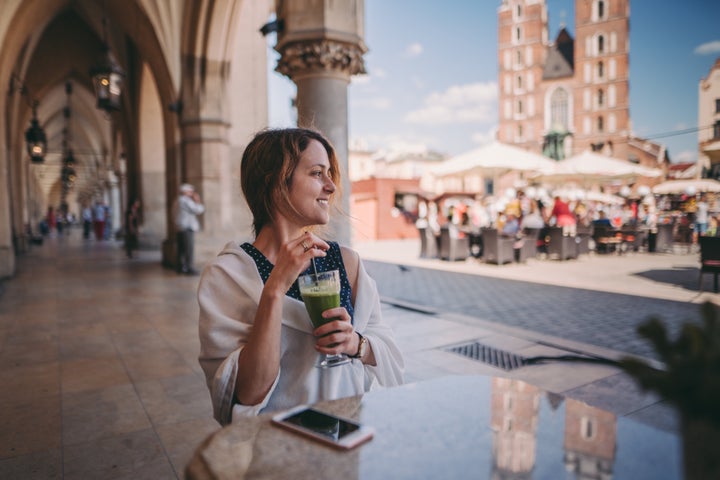
What are the benefits of slow travel?
“When you travel at a slower pace and not so rushed, you naturally immerse yourself in the culture and place that you’re in and really try to get to know it on a more personal level,” Susag said.
“You talk with more locals and do more ‘off the beaten path’ activities, and not just things you see on Trip Advisor,” she added. “Also, when you do start to talk with the locals more, usually they want you to have the best experience and will show you some of their favorite spots which naturally leads to a more immersive and personal experience.”
Getting to know locals and their culture and lifestyle more intimately and authentically will create rewarding experiences and memories you can carry with you long after your return home. You may even make deep connections and friendships that lead you to return in the future.
“If you want to really unplug and relax without the stresses of traveling then slow travel may be for you,” said Mark Wolters, the creator of the popular YouTube travel channel Wolters World . “You get to unpack your suitcases less, take fewer planes, trains and automobiles and just relax in a destination.”
He noted that slow travel is excellent for practicing foreign language skills, as there are more opportunities for meaningful conversations with locals.
“If you are traveling with children, slow travel is a good way to introduce them to international travel and getting them to see the differences in cultures,” Wolters noted. “When your kids are playing at the local playground with other children they see that there are not too many differences between themselves and the kids in this new country you are visiting.”
He said his children have also learned how to make pupusas in El Salvador, pasta in Italy, and sandwiches in Portugal because the family likes to return to the same eateries and make connections with the people working there.
“There is nothing like going back to the same restaurant a few times and the waiters and owners start to see you as a friend instead of a tourist looking for a quick bite to eat,” Wolters said. “Slow travel also gives your family a chance to focus on spending time together doing tourist activities, but also just being together as a family instead of just trying to get in as many museums as possible.”
There are practical upsides to this approach to travel as well.
“I love slow traveling for its environmental benefits,” Lau said. “By staying in one location for longer periods of time, there are fewer carbon emissions associated with transportation such as flights and buses.”
In addition to less transit between destinations, slow travel also tends to entail fewer car rides within a single destination due to fewer activities. Travelers can also feel less rushed in getting one place to another and take public transit instead. You may opt to stay away from the touristy city center and save money on accommodations as well.
“Slow travel is often more cost-effective than traditional travel since you are not doing as many things as possible,” Dengler said. “It is also more relaxing since you are not always worrying about the next item on your itinerary.”
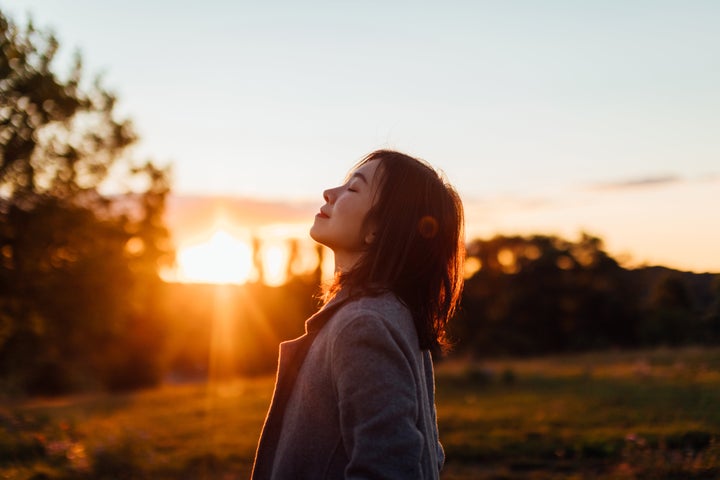
How can you maximize the slow travel experience?
There’s no one right way to engage in slow travel, but there are some helpful factors to keep in mind if you want to maximize the experience.
“Your to-do list should be very short or nonexistent,” Dengler said. “Either come with a plan to spend most of your time at only a few locations or take recommendations from locals on the fly. When visiting a spot or destination, you should aim to understand its meaning as opposed to just checking it off your list. In most cases, you will have to spend more time than usual, but you should come away with a much deeper understanding.”
Resist the temptation to see every sight and eat every dish in one or two days. It’s not about rushing around to check off the boxes of attractions.
“Spread out your tourist visits over a longer period of time,” Wolters said. “This way you can spend your morning at a café, then midday at a museum, then the afternoon and early evening at a park reading your favorite book, instead of seeing two museums in the morning and one in the afternoon and then a theater show at night with a ghost tour at midnight .”
His family frequently tries to take local cultural classes, like a painting or cooking class. In addition to learning more about the art or cuisine, you can ask the instructor additional questions and learn more about the area.
“In the era of remote work, it’s become easier to engage in slow travel,” noted Jessica van Dop DeJesus, the founder and editor of food and travel blog The Dining Traveler . “For example, spending more than a week in a destination and taking the time to walk around lesser-known neighborhoods, frequenting a cafe or restaurant several times, and attending a sporting or cultural event that’s important to those living in that location.”
Consider staying in an independent boutique hotel or vacation rental away from the typical touristy spots to get a sense of where locals live. Take advantage of the quiet and relaxation you can’t find in the typical crowded areas as well.
“One of my favorite ways to experience slow travel is by renting a villa by the beach,” La Carmina said, recalling a recent trip to Tulum . “Rather than being in a busy and commercial resort, I enjoyed peaceful days with only the sounds of the ocean near my doorstep. I had a fully stocked kitchen, so I could simply relax in my warm surroundings without feeling pressure to go out or sightsee. Some days were spent lounging in the modern villa’s pool, or meandering to the nearby beach.”
If you’re staying in a destination that lacks strong public transit infrastructure or you simply want to explore a little farther afield, renting a car can offer the opportunity to move at your own pace.
“Pull over and enjoy the scenic overlooks and don’t be afraid to take detours and stray off the beaten path when traveling,” said David Woody, country development and travel expert at SIXT .
You may even plan a leisurely paced road trip as a form of slow travel.
“Many travelers are now choosing to drive to destinations instead of flying as part of the slower travel movement, which offers them more flexibility to enjoy the journey as well as the destination,” Woody said. “We recommend mapping out your route and the legs you want to drive per day but only book the first two or three nights of accommodation to remain flexible should your route or timing change.”
Popular in the Community
From our partner, huffpost shopping’s best finds, more in life.
Southwest flight drops to about 500 feet over Oklahoma suburb, triggers alert: 'You good?'
Federal aviation officials are investigating after a Southwest flight flew so low over Oklahoma early Wednesday it triggered an altitude warning from air traffic control.
After an automated warning sounded, an air traffic controller alerted the pilots on Flight 4069 the jet had descended to a low altitude nine miles away from Will Rogers World Airport in Oklahoma City, The Federal Aviation Administration told USA TODAY.
The automated system is the Minimum Safe Altitude Warning (MSAW), per the FAA's website, which alerts controllers if an aircraft gets too low.
"Southwest 4069, low altitude alert. You good out there?" the air traffic controller asked just after midnight Wednesday, according to an audio archive of transmissions provided by LiveATC.net .
Hawaii FAA investigation: Federal officials are investigating after Southwest plane plunged within 400 feet of ocean
Flight apparently dropped to about 500 feet over high school
The flight from Las Vegas, a Boeing 737-800, had been cleared to land on a visual approach from the northwest, The Oklahoman , part of the USA TODAY Network reported.
Transponder data shows the plane appeared to descend to about 500 feet as it passed over a high school in Yukon, a city in Canadian County about 18 miles northwest of downtown Oklahoma City.
Second Southwest flight under recent investigation by FAA
The incident is the second altitude-related incident at Southwest in just over two months being investigated by FAA.
Southwest Flight 2786 flight plunged to 400 feet above the Pacific Ocean near a Hawaiian island on April 11, the Federal Aviation Administration confirmed Monday.
The plane briefly dropped at "an abnormally high rate of more than 4,000 feet per minute" before pilots pulled up to avoid crashing into the water, according to a memo Southwest distributed to pilots obtained by Bloomberg, who first reported the news last week.
The flight crew performed a "roller coaster maneuver" the outlet reported, to avoid slamming into the ocean.
Natalie Neysa Alund is a senior reporter for USA TODAY. Reach her at [email protected] and follow her on X @nataliealund.
The global spike in luxury handbags, shoes, and clothing sales could be coming to an end due in part to China's 'luxury shaming,' study finds
- Global luxury goods sales growth will slow in 2024, per a new Bain & Company report.
- The report cited China's economic uncertainties and rising outbound tourism as key factors.
- "Luxury shaming" and price hikes without innovation could also contribute to sluggish sales growth.

The spike in the global sales of luxury goods could be coming to an end in 2024, and "luxury shaming" could be in part to blame.
A report published on June 18 by Bain & Company forecast that worldwide sales of personal luxury goods — which include high-end clothing, shoes, handbags, and beauty products — would grow at the slowest rate since 2020, when sales plummeted due to pandemic-related factors.
Related stories
If Bain's forecast pans out, it could be due in part to a slowdown in China. The report cited two factors in particular that are holding back sales in the Chinese market: "the revival of outbound tourism" and "weakening local demand caused by rising economic uncertainties."
As pandemic conditions have eased, more wealthy Chinese citizens have begun traveling internationally — allocating money to travel that they might otherwise have spent on luxury goods.
Additionally, economic uncertainty in China has brought about a phenomenon called "luxury shame" or "luxury shaming." With some Chinese citizens experiencing financial challenges , some higher-income people have been hesitant to flaunt their wealth with luxury goods. Bain said this phenomenon played out in the US during the Great Recession — and has impacted sales in China.
Bain partner Claudia D'Arpizio told The Associated Press that in addition to macroeconomic factors, luxury goods companies may also be to blame for the slowdown in sales.
She said some luxury goods companies have raised prices but not justified these hikes with sufficient innovation, leaving some consumers "upset and puzzled."
Watch: Why the retail industry has its eye on Gen Z
- Main content
Everything's bigger in Texas, including the world's largest Buc-ee's. 4 things to know
Everything is bigger in Texas, including the world's largest Buc-ee’s travel center .
With ample parking and clean restrooms, the latest Buc-ee's travel center opened to the public at 6 a.m. Monday. The new store, at 10070 Interstate 10 in Luling, occupies more than 75,000 square feet and is about one hour south of Austin.
Here are four fun things to know about the new travel center:
1. Bigger is definitely better: Texas reclaims top spot
Before Monday's opening, Tennessee held the record for the largest Buc-ee's travel center in the nation, occupying about 74,000 square feet upon its debut in the summer of 2023. Not anymore.
The new travel center in Luling features 120 fuel pumps and thousands of renowned snack and meal options, including Buc-ee’s famous beaver nuggets, breakfast biscuits and beef jerky. It has about 250 employees.
"Today is different from most," said Josh Smith, Buc-ee's operations manager. "Today, we are reclaiming the title of the largest travel center for Luling, Texas."
Smith said that while Buc-ee's typically expands into new markets where its presence is not widely known, this center will attract both local residents and travelers, given the brand's 20-year history in the city.
More: Family visits all 37 Buc-ee’s in Texas for spring break. Here’s how you can, too.
2. First Buc-ee’s travel center is officially replaced
The new travel center was constructed adjacent to and has replaced the original Luling Buc-ee's. The previous facility, spanning 35,000 square feet, was the brand's first travel center, established in 2003. With the opening of the latest facility, the 2003 travel center will be demolished and repurposed into a parking lot, Smith confirmed.
3. Authentic 'low and slow' Texan barbecue is here to stay
Buc-ee’s is committed to providing classic barbecue sandwiches that keep customers coming back for more.
Randy Pauly, director of barbecue at Buc-ee's, said, "These recipes are essentially what we win with."
Pauly oversees the training of employees to ensure the continued provision of Buc-ee's signature meals. Despite the larger size and scope of the new location, the barbecue offerings remain unchanged.
More: Watch as Lenny Kravitz strolls Buc-ee's for the first time with Beaver Nuggets in hand
4. New Buc-ee's is 35th store in Texas
After this grand opening, Buc-ee’s operates 49 stores across Texas and the South, according to a news release. Texas leads the way with 35 locations. Since the beginning of its multistate expansion efforts in 2019, Buc-ee’s has opened travel centers in Alabama, Georgia, Kentucky, South Carolina, Tennessee, Missouri, Colorado, Virginia and Mississippi.
I-25 southbound overnight double lane closure and Sinton Trail closure for bridge girder placement
Travel advisory.
Colorado Springs — Starting from 7 p.m. on Thursday, June 27th, there will be significant closures affecting both the Sinton Trail and parts of Interstate 25 in Colorado Springs between Fillmore Street and Garden of the Gods Road. These measures are crucial as they allow for safety-critical work involving the setting of bridge girders and other essential bridge work.
Sinton Trail and all lanes of southbound I-25 will reopen once safety inspections are complete.
I-25 Traffic Impacts
Motorists and area residents can expect the following impacts during bridge girder placement:
- 7 p.m., Thursday, June 27 through the morning of Friday June 28, southbound I-25 right and middle lanes will be closed from Mile Post 145 to MP 144
- Reduced speeds in the work zone.
- Plan ahead and expect delays.
- All southbound lanes will open once safety inspections are complete.
Sinton Trail Impacts
Bicyclists and pedestrians can expect the following during the bridge girder placement at I-25 and Ellston Street:
- Full closure of Sinton Trail under I-25 at Ellston Street from 7 p.m., Thursday, June 27 through the morning of Friday June 28
- Trail will reopen once safety inspections are complete
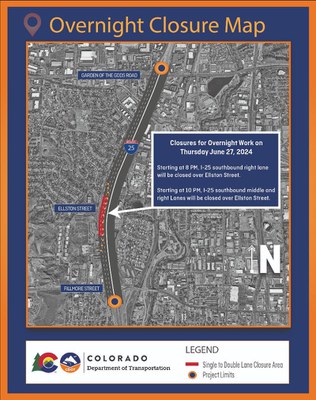
Stay Informed
- Webpage: codot.gov/projects/i25gogfillmorelanes
- Information hotline: 719-219-9815
- Email: [email protected]
- Register for Text Alerts: Text IMPACTS to 844-591-9901
Know Before You Go
Travelers are urged to “know before you go.” Gather information about weather forecasts and anticipated travel impacts and current road conditions prior to hitting the road. CDOT resources include:
- Road conditions and travel information: COtrip.org
- Download the COtrip Planner app: bit.ly/COtripapp
- Sign up for project or travel alerts: bit.ly/COnewsalerts
- See scheduled construction lane closures: bit.ly/laneclosures
- Connect with @ColoradoDOT on social media: Twitter , Facebook , Instagram and YouTube
Remember: Slow For The Cone Zone
The following tips are to help you stay safe while traveling through maintenance and construction work zones.
- Do not speed in work zones. Obey the posted speed limits.
- Stay Alert! Expect the unexpected.
- Watch for workers. Drive with caution.
- Don't change lanes unnecessarily.
- Avoid using mobile devices such as phones while driving in work zones.
- Turn on headlights so that workers and other drivers can see you.
- Be especially alert at night while driving in work zones.
- Expect delays, especially during peak travel times.
- Allow ample space between you and the car in front of you.
- Anticipate lane shifts and merge when directed to do so.
- Be patient!
Download the COtrip App!
The new free COtrip Planner mobile app was designed to meet the growing trend of information on mobile and tablet devices for the traveling public. The COtrip Planner app provides statewide, real-time traffic information, and works on mobile devices that operate on the iOS and Android platforms. Visit the Google Play Store (Android devices) or the Apple Store (iOS devices) to download!

IMAGES
VIDEO
COMMENTS
Learn the art of slow travel, a way of connecting with local people and places instead of ticking off attractions. Discover the origins, benefits, and tips of slow travel, and how to hack it in 2024.
Slow travel is about spending more time at a destination to immerse yourself fully in the culture and nature. Learn how to travel more slowly, sustainably and mindfully with examples and advice from experts.
Slow travel is an approach to travel that emphasizes connection to local people, cultures, food and music. Learn how to travel slowly, why it's better for you and the community, and how to find local experiences and accommodations.
Slow travel means tamping down our own built-in, conditioned obsessions with time and allowing the world to move just a little slower so that we can actually notice it. If slow food is defined, at ...
Slow travel supports the local economythrough sustainable tourism, eating local foods and even staying overnight with or dining with locals. Slow travel tends to be independenttravel or in small-group slow travel tours, off-the-beaten pathor away from heavily traveled tourist zones.
Learn what slow traveling is, how to do it, and which countries are best for it. Find out how to save money, live like a local, and volunteer for free accommodation on your trip.
Learn what slow travel is, how it benefits you and the world, and how to practice it on your next trip. Find out how to connect with local culture, reduce stress, save money, and more with this comprehensive guide.
Slow travel is a mindset and approach that applies the principles of slow living to travel. Learn the definition, benefits, and myths of slow travel, and get tips to try it on your next adventure.
Slow travel is a deliberate, unhurried approach to exploring destinations, emphasising meaningful experiences and cultural immersion. Learn why slow tourism is becoming more popular, how it reduces carbon footprint, saves money, helps disconnect, and more.
The Heart of Slow Travel At its core, slow travel is an invitation to become part of local life, weaving oneself into the fabric of a community, its culture, and its daily rhythms. It rejects the whirlwind trips that leave you exhausted, opting instead for a more profound connection. Engaging in local festivities can be a mesmerizing experience ...
Learn what slow travel is, why it's the future of travel, and how to do it. Find the best slow travel destinations, tips, and activities for your next trip.
Slow travel allows you to appreciate the beauty of each passing moment. Instead of racing to visit all travel spots, this mindset will enable you to slip into the pace of the local culture, even if you're travelling for just a few days. 2. Improved Physical and Mental Well-Being. Slow travel positively impacts overall wellness.
These more mindful trips involve visiting fewer places and sometimes transiting slower, whether by car, train, bike, foot or canoe. "While typical travel is all about what you do, slow travel ...
Slow Travel Italy by Embracing Tuscany's Serenity. Tuscany's all about its hills, vineyards, and old cities. Slow down, soak in the Italian vibe. Stay in an agriturismo. They're usually family-run, giving you real local life. You get to eat fresh, learn about vinegar, pick olives, taste wine. Meet local artisans.
Slow travel means enjoying the journey as much as the destination, and experiencing every detail of the trip at a relaxed pace. Learn about different types of slow travel experiences, such as boating, walking, cycling, horseback riding and more, and why they are gaining popularity.
WhiskeyBeerRecipesCocktails & SpiritsHealthy FoodWine. Travel's fastest-growing trend is all about relaxing the pace to savor everyday experiences. Here's how to slow down on your next trip—and why.
Slow travel is all about taking the time to get to know areas, cities and towns in a way that you might miss out on by travelling in a more mainstream way. For example, rather than getting on a ...
As you are traveling slower, you will have more time to explore local businesses during your travels. Find your favorite cafe, frequent your local market, and buy local clothes from an independently-owned boutique. This is all part of slow travel and you are also making sustainable and responsible travel choices.
Learn what slow travel is and why you should try it. Find out how to save money, time, energy, and the planet by travelling slowly and experiencing more of the culture and nature.
Slow travel is an offshoot of the slow food movement that began in Italy in the late 1980s, a response to fast-food franchises running rampant in the country. The slow food philosophy encourages guests to relax and appreciate the overall experience of dining, rather than rushing through a restaurant to maximize calories and minimize time.
On the other hand, slow travel implies physically-slow travel. Slowing down your pace to be present with where you are, instead of rushing around to see the top-recommended attractions and calling it a day. Slow travel in this regard can also imply slow traveling through a country for more periods of time than a 2-week vacation.
A Slow Travel blog. We help travelers discover the benefits of slow travel, find destinations that are perfect for this type of immersive travel and explore them independently or on a small group tour.. Here you'll find detailed guides and itineraries written by us (not generated by an AI bot) from our own firsthand experiences and 30 years of slow traveling Europe, the USA, Italy, and ...
That's where slow travel comes in, embracing switching off and detaching from everyday life, with Google searches for 'slow travel trips' having increased by 61% in the last three months alone.
For travel expert and author La Carmina, slow travel is a meditative approach to traveling that allows people to stop and smell the roses ― quite literally. "It's about being fully present in the moment and experiencing the sights, sounds and sensations around you without distraction ― letting the experience unfold at its own pace and ...
An air traffic controller told pilots on Southwest Flight 4069 the plane had descended to a low altitude 9 miles from the Will Rogers World Airport.
Global luxury goods sales growth will slow in 2024, per a new Bain & Company report. The report cited China's economic uncertainties and rising outbound tourism as key factors. "Luxury shaming ...
2. Asador Etxebarri (Atxondo, Spain): It was a good night for Spain, home to the world's second-best restaurant as well. Located in the country's Basque region, this inviting, rustic restaurant in ...
Everything is bigger in Texas, including the world's largest Buc-ee's travel center.. With ample parking and clean restrooms, the latest Buc-ee's travel center opened to the public at 6 a.m. Monday.
Colorado Springs — Starting from 7 p.m. on Thursday, June 27th, there will be significant closures affecting both the Sinton Trail and parts of Interstate 25 in Colorado Springs between Fillmore Street and Garden of the Gods Road.These measures are crucial as they allow for safety-critical work involving the setting of bridge girders and other essential bridge work.
SIOUX CITY, Iowa - June 22, 2024 - If you are planning a trip in northwest Iowa this weekend you need to be aware of several road closures that may slow down your trip. Between the evening of June 20 and morning of June 22, portions of northwest Iowa received significant rain, resulting in flooding along various primary highways. There are currently widespread flash flooding and river ...